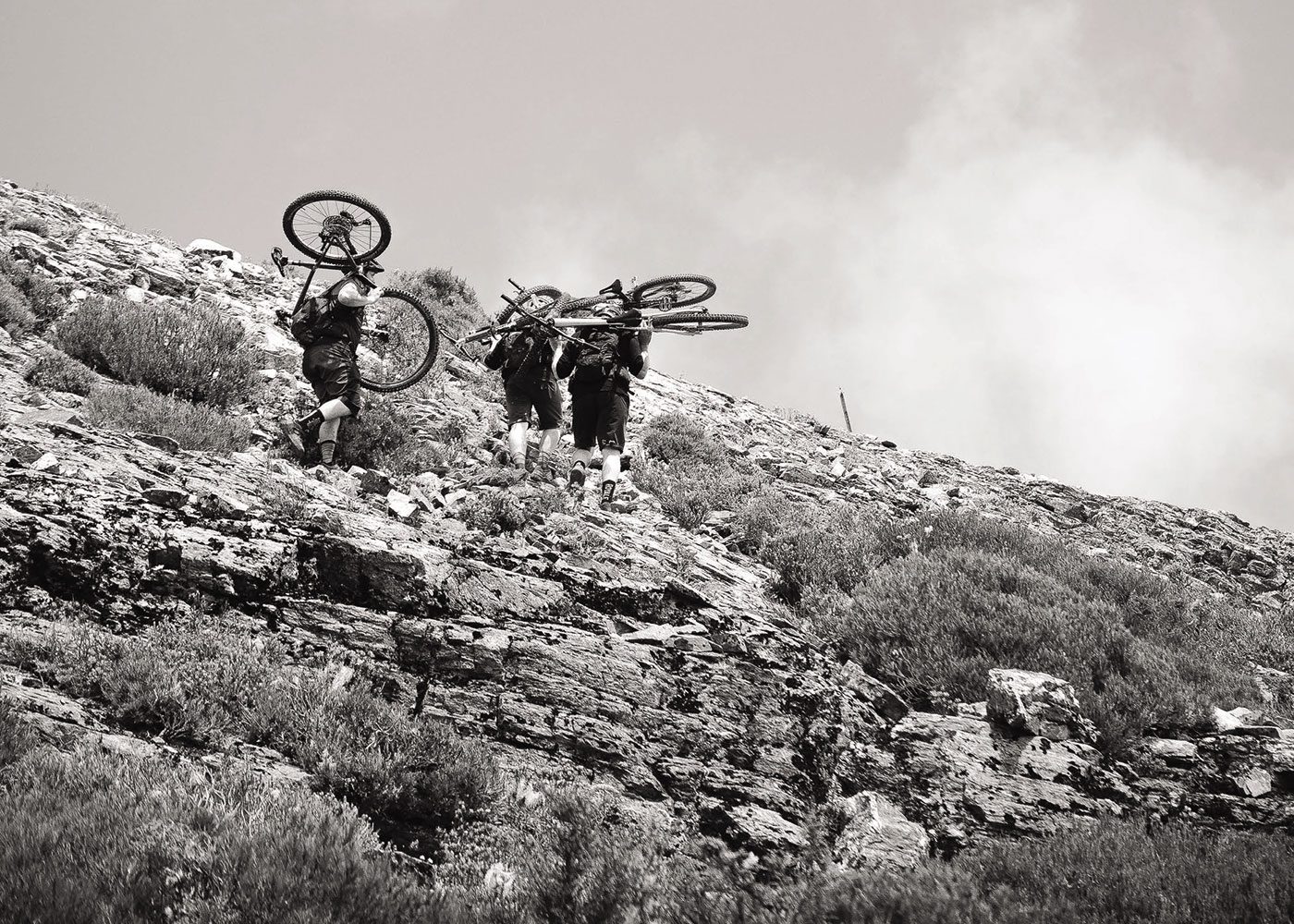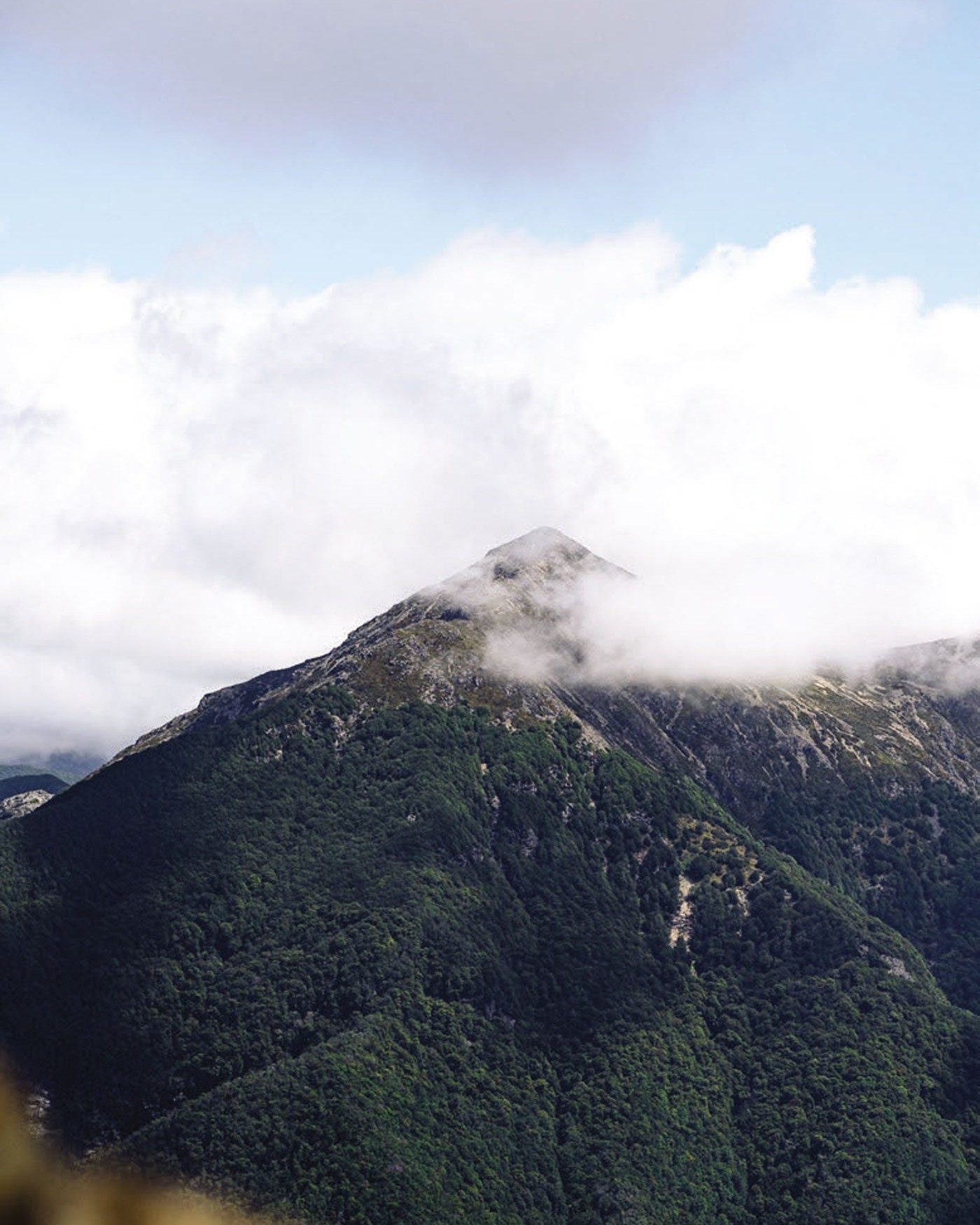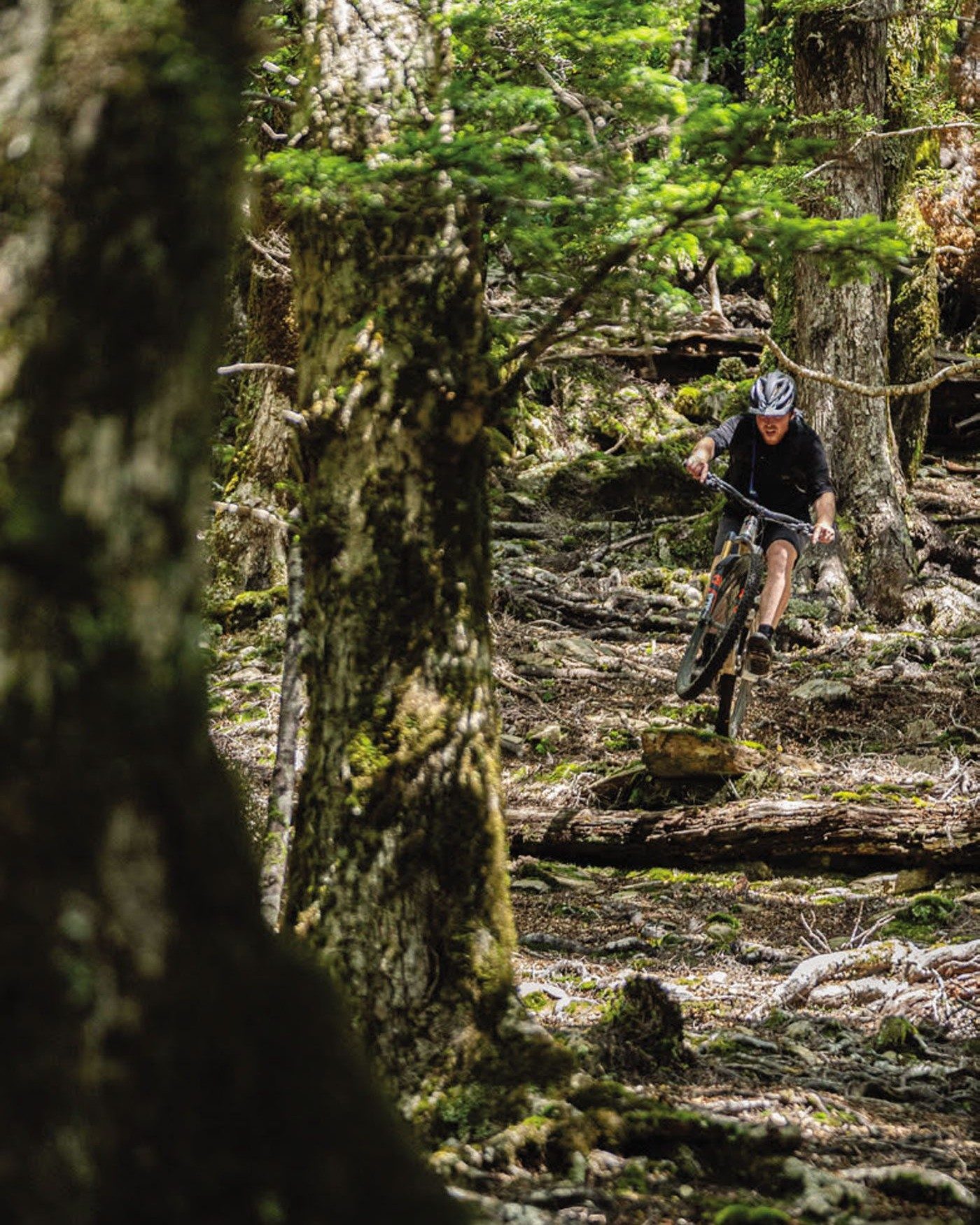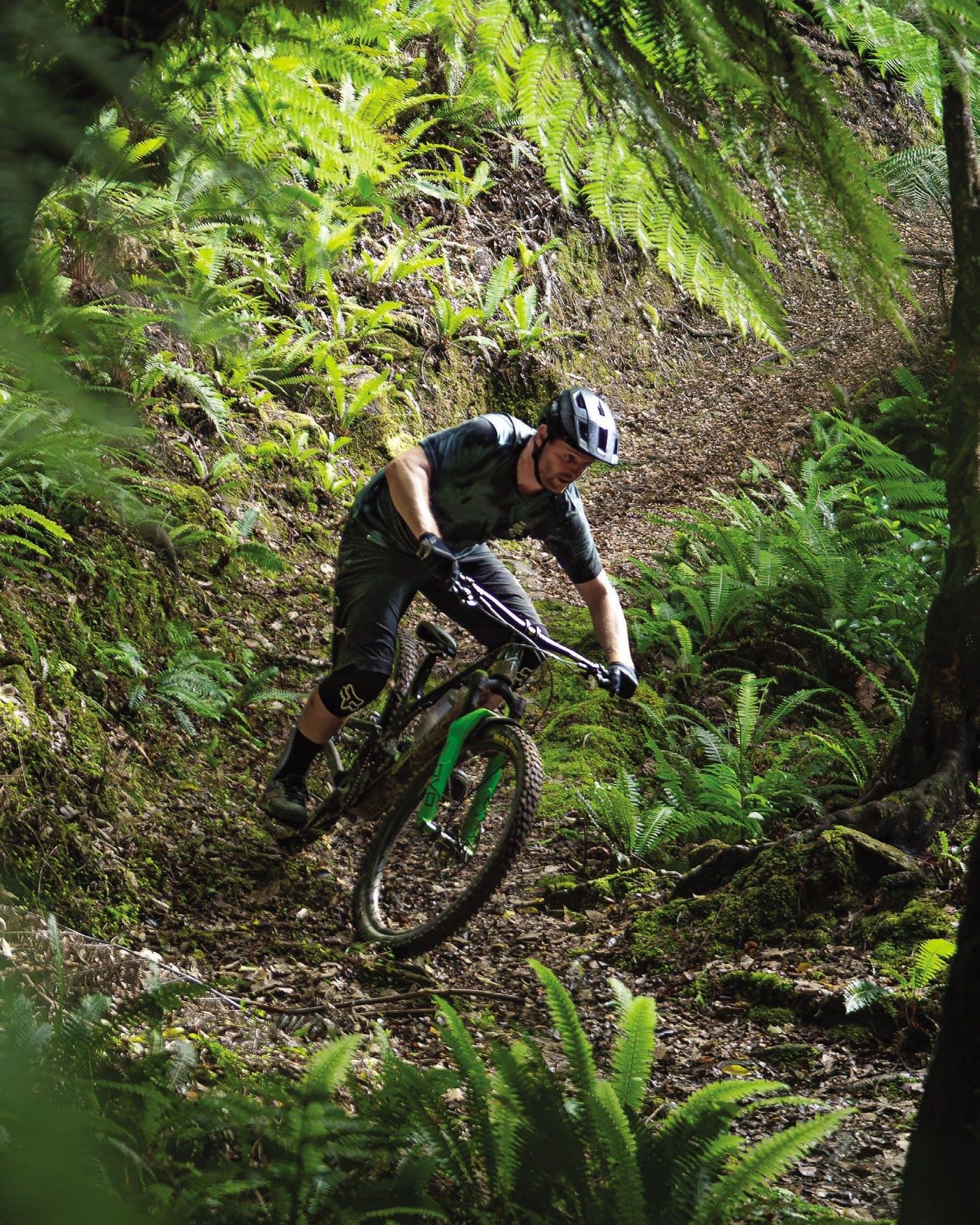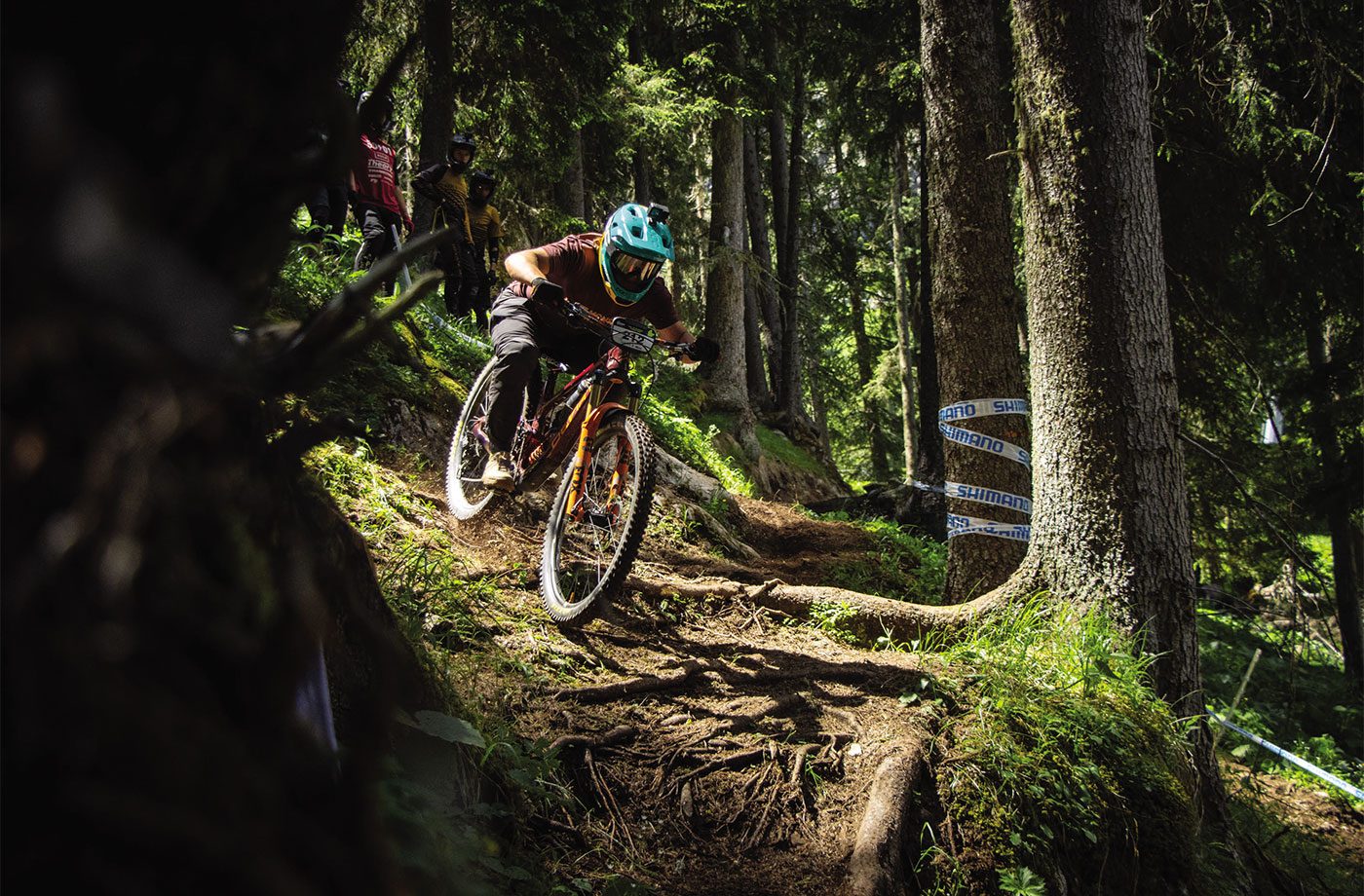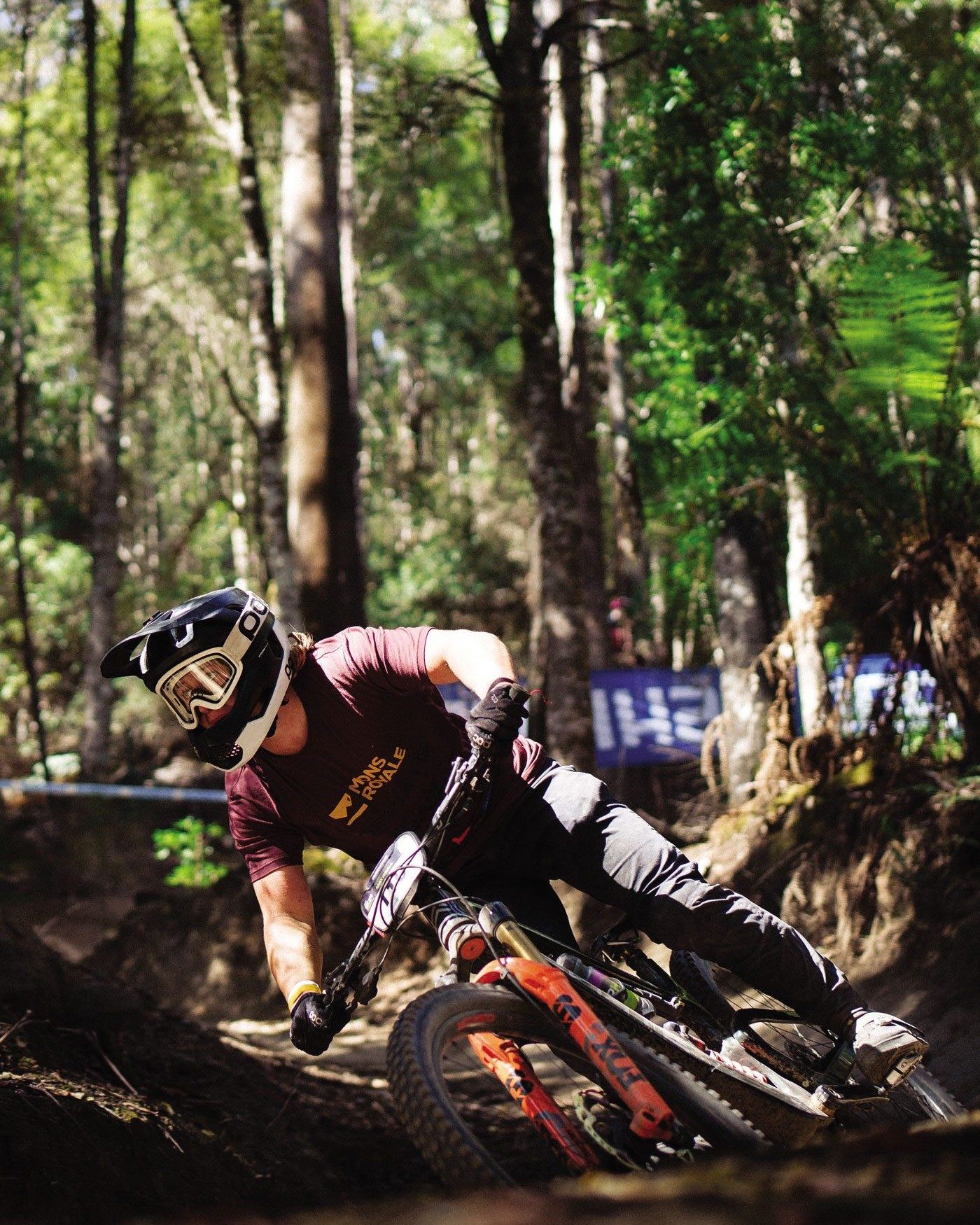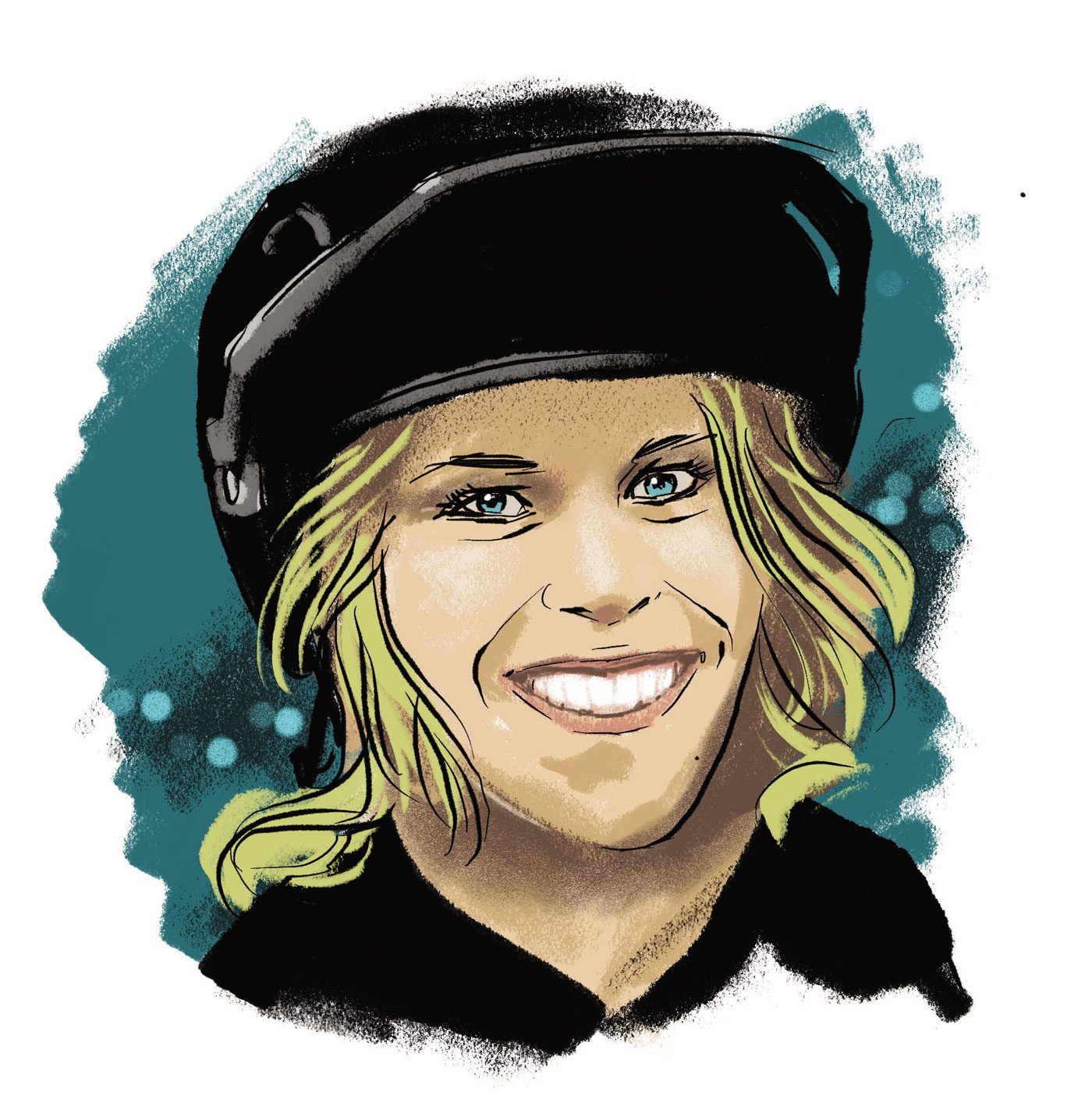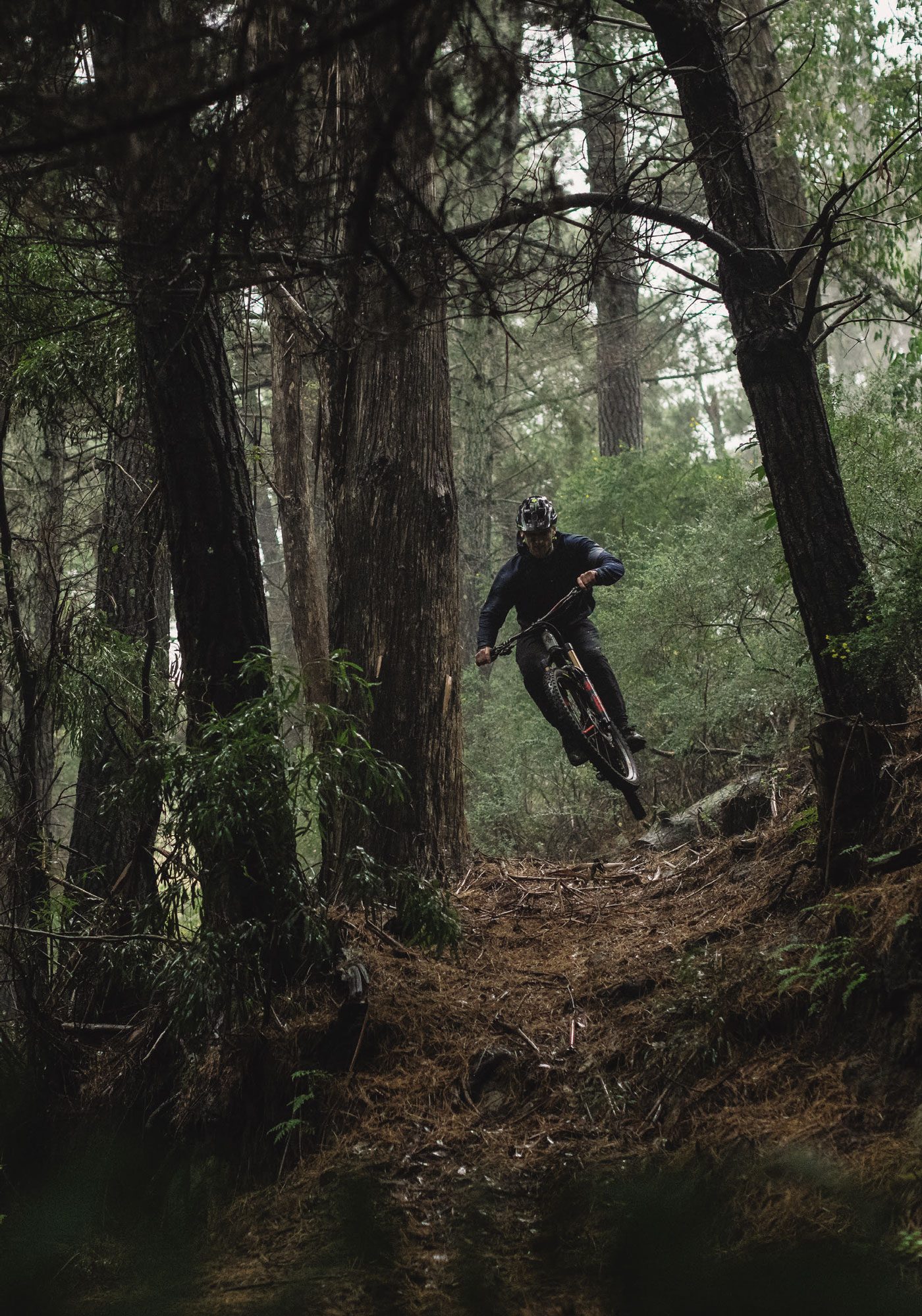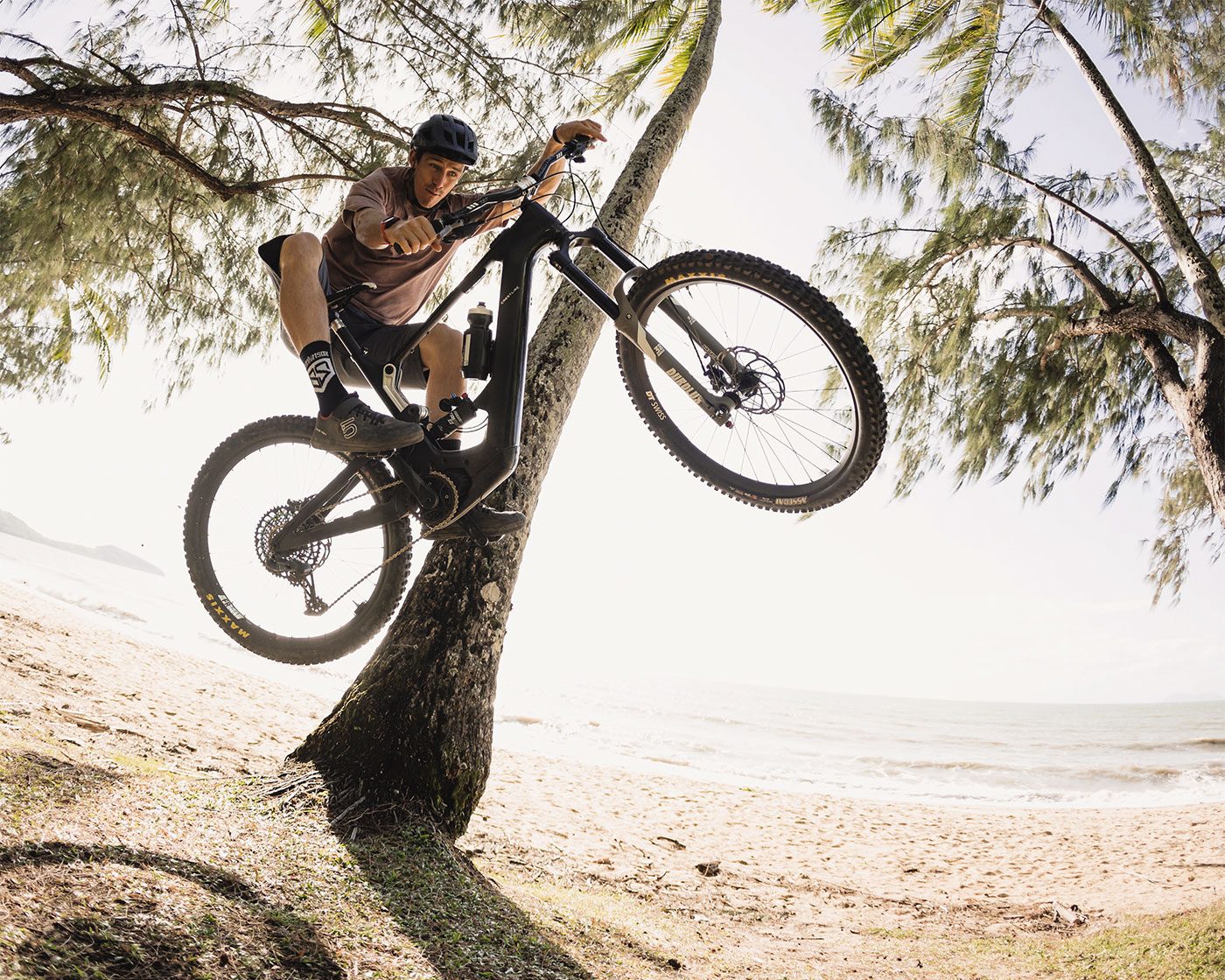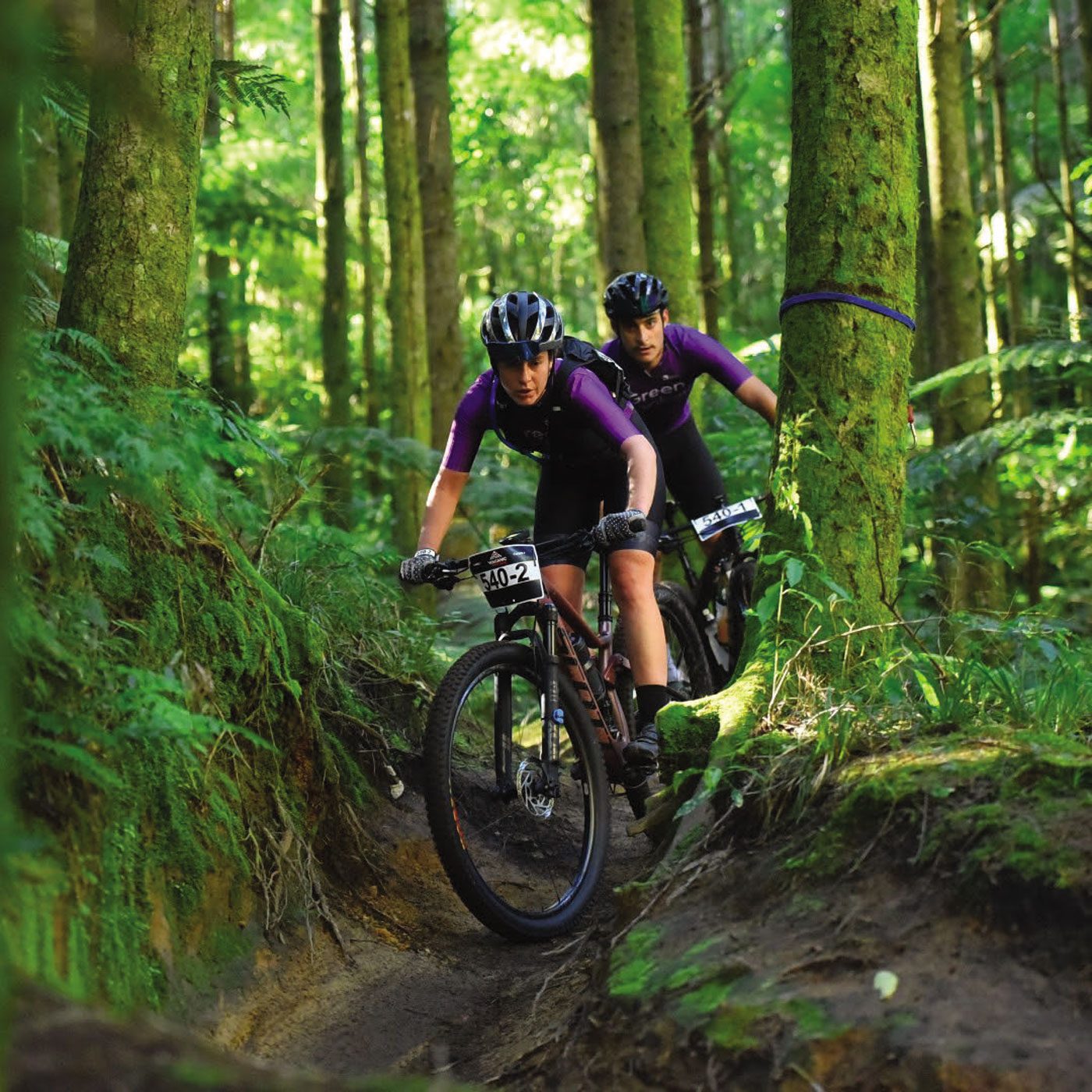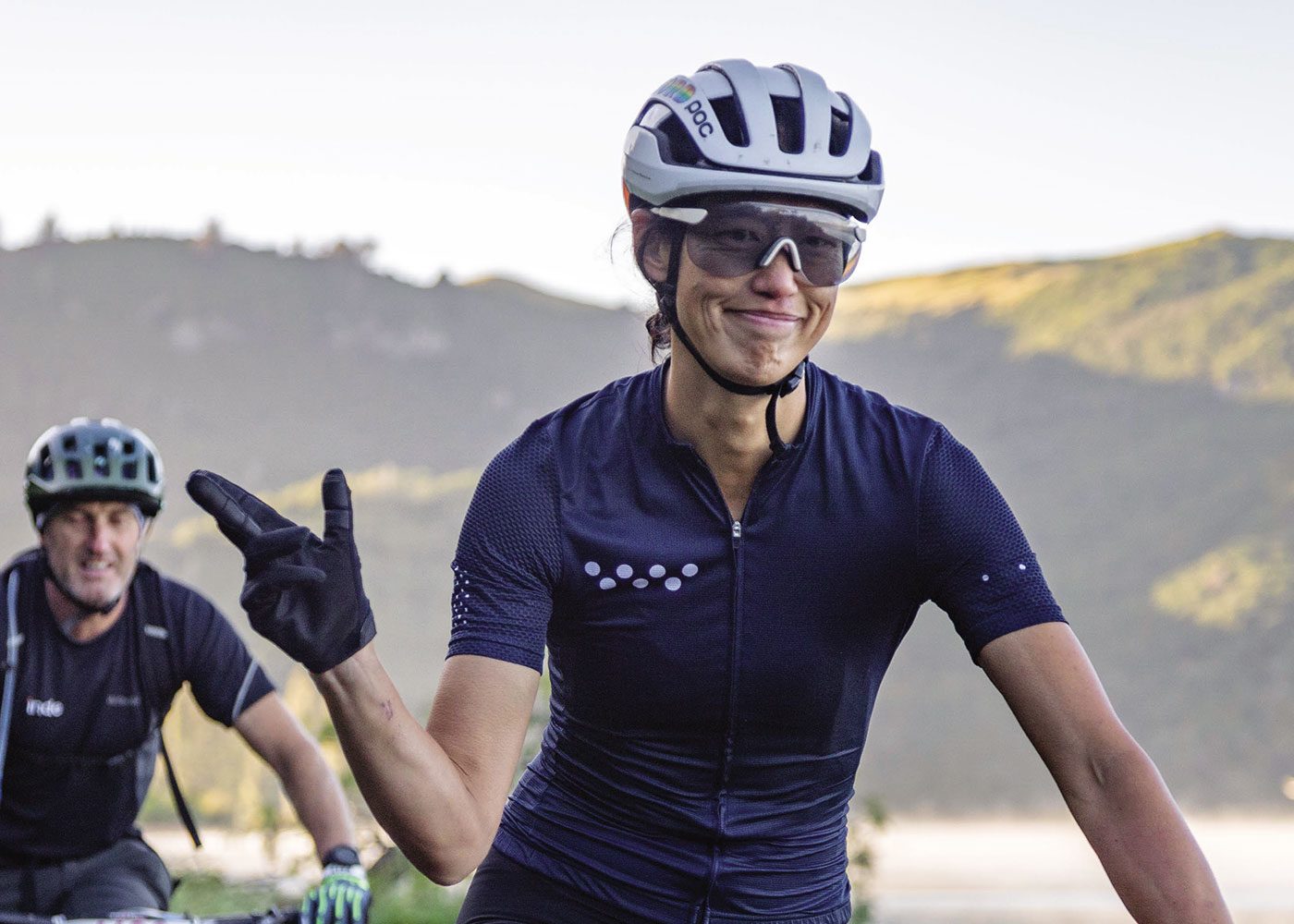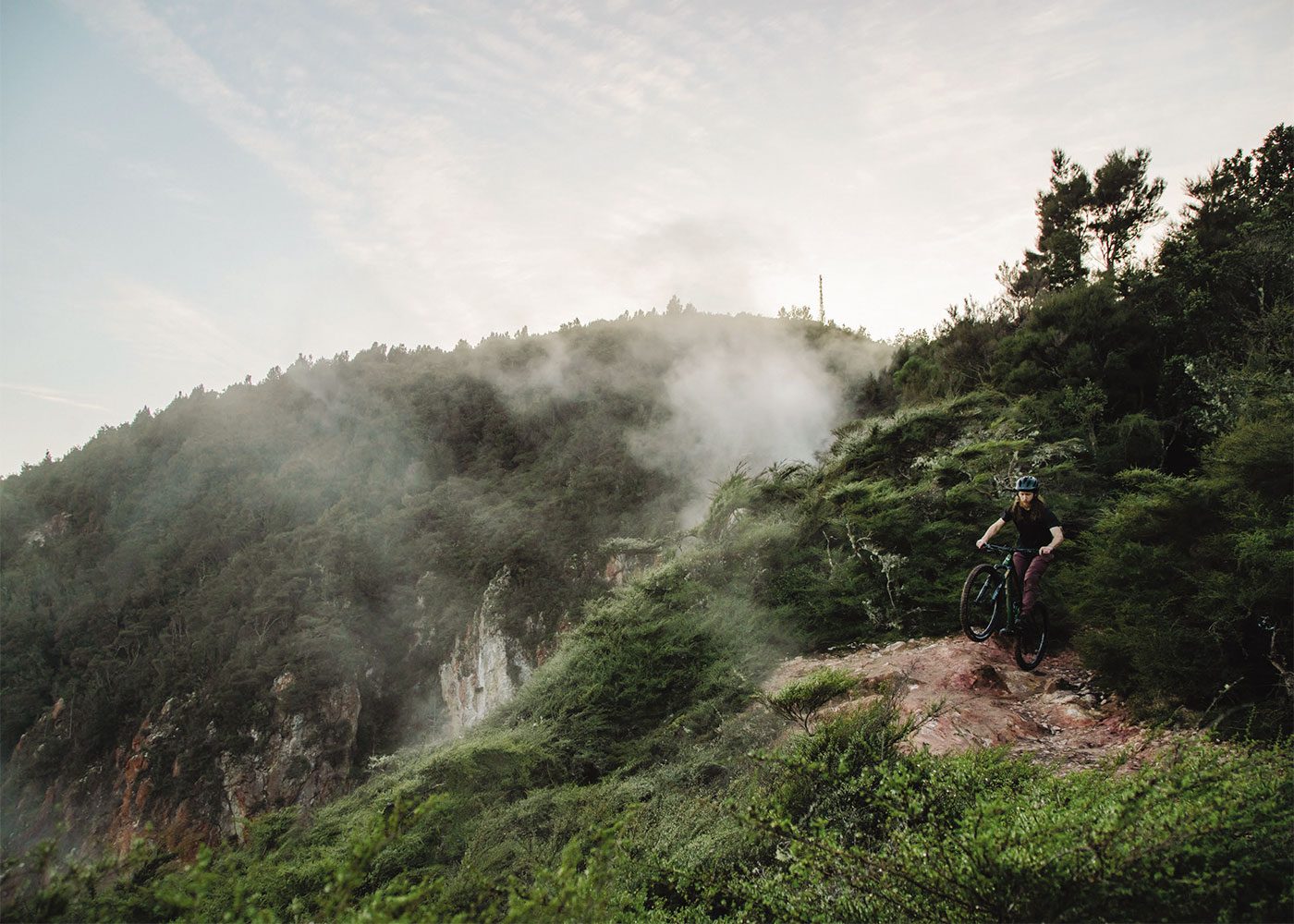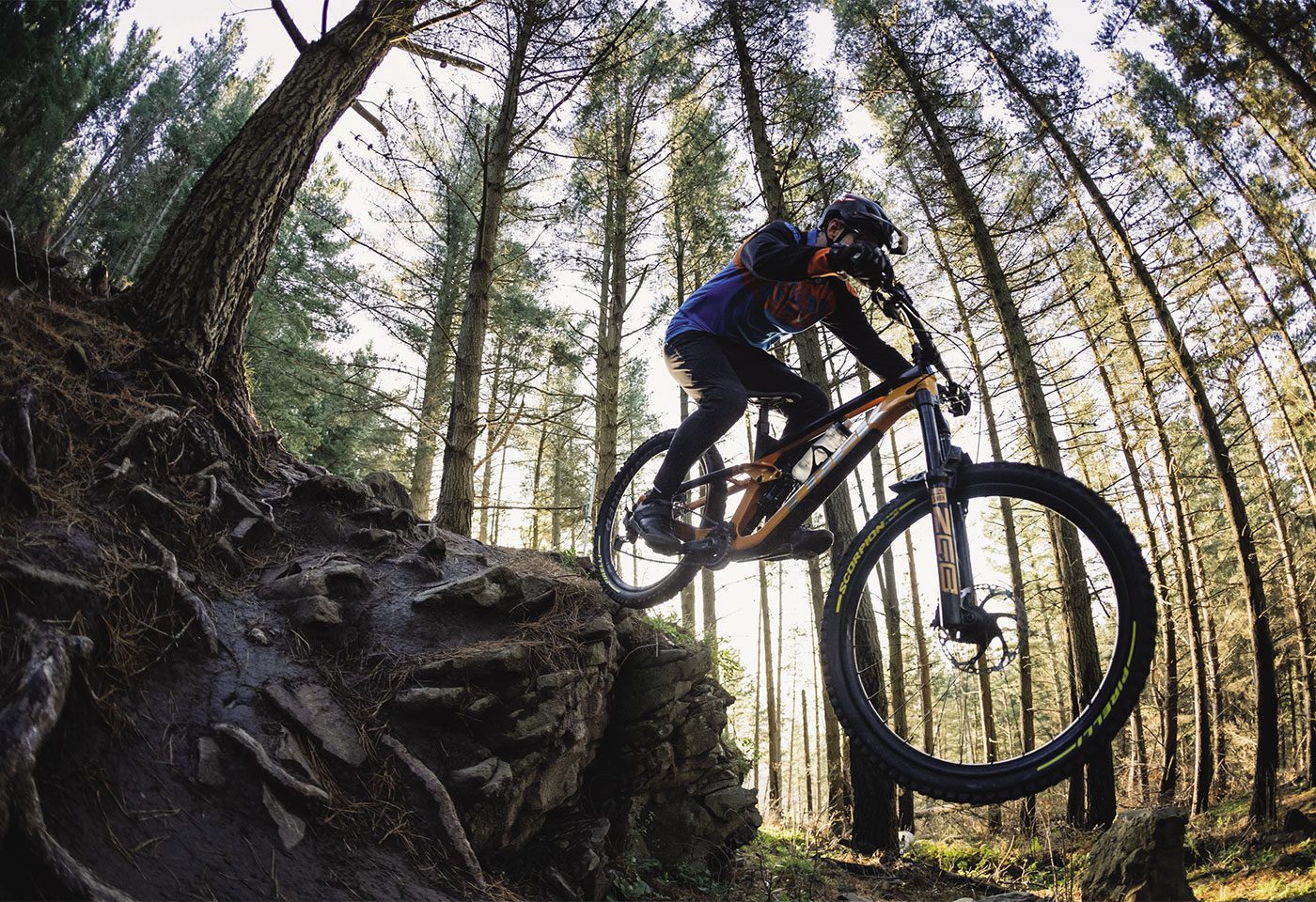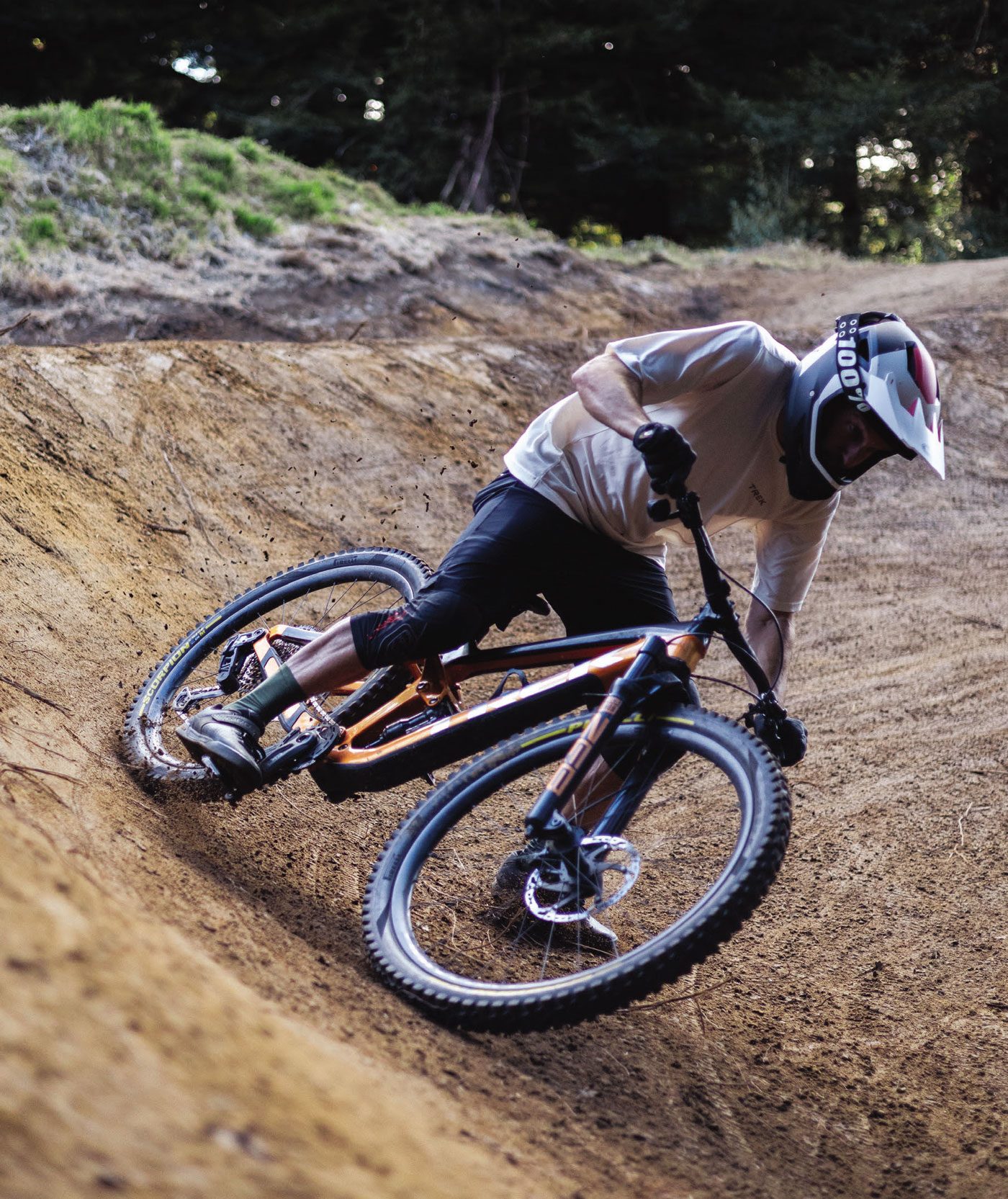The Royale with Cheese
Words & Images: Jake Hood
PART ONE OF TWO
JUST GET YOUR HEAD DOWN AND GET ON WITH IT.
That was the quote from Quentin Tarantino’s Pulp Fiction that was bouncing through my head while we pedaled the last 20km back to Picton. THE ROYALE WITH CHEESE. It seemed like the perfect name for this adventure – a better name than what we’d had before. As we all know, everything’s better with cheese… and what an adventure it had been!
After the success of last year’s big mission in the Richmond Range – ‘Ferry to Fishy’ – we knew we had to do another one but, this time, it had to be bigger. We hadn’t even made it back to Wellington on the ferry before Scotty, Paul and Tom were throwing ideas around, still high on endorphins from the recent mission. The idea that seemed to stick was Mt. Royal; it sounded like the perfect mountain to conquer. Scotty, Paul, and Tom had ridden it before and told me the riding was insane. It had to be done! The name was set: The Royal Rumble – later changed to the Royale with Cheese.
Originally, the plan was to complete this mission within six months of ‘Ferry to Fishy’, but, well, as we all know, life sometimes gets in the way and adventures have to take a bit of a back seat. It wasn’t until December 2022 that the chat group got fired back up and things started to happen. Scotty and I were keen. Evan was also interested but wouldn’t be able to make it. Paul and Tom were very quiet on the chat, not committing. It got to the point where I just committed and booked my flight up to Wellington. This was the catalyst to get the ball rolling and make it happen.
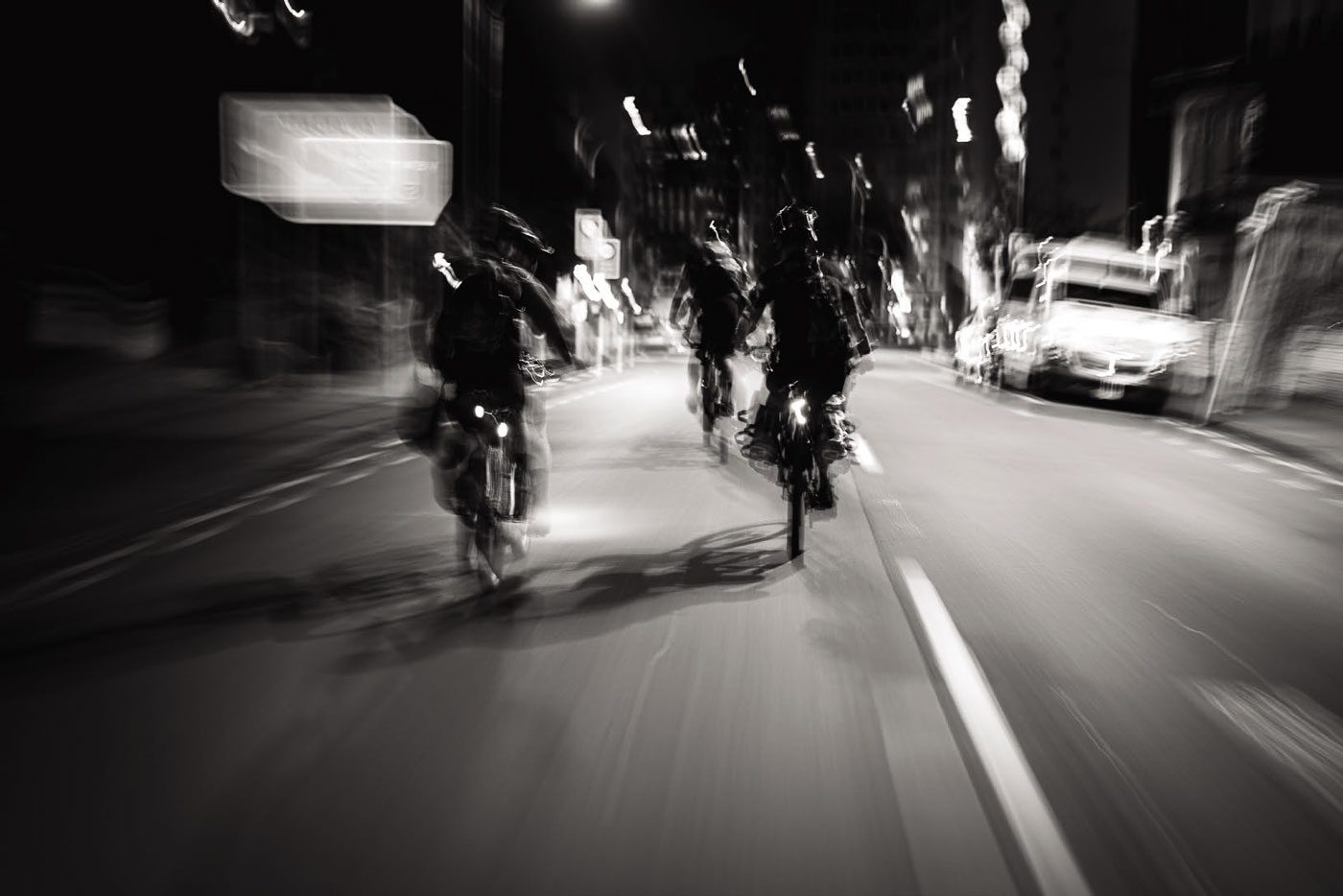
About a week before the flight up to Wellington, I looked at the long-range forecast and it was terrible. Nothing but heavy rain for the whole time we were going to be on the trip. I messaged the group: “Are you sure you want to do this mission still? You should check out the long-range. It doesn’t look good.” Now, I love a bit of suffering, a bit of a bad time, but the idea of riding 70km in the pouring rain to stay in a small DOC hut, ride Mt. Royal, then ride back into Picton in the pouring rain just seemed too much like a bad idea. It would just be a miserable, cold, gross old time. “I’m not against just coming up to Wellington for a tour de brunch this weekend,” I told the others.
There was chat in the group about sacking it off due to the weather, but we just kept an eye on it all week. We would decide closer to departure time what we were going to do. A couple of days before, we just decided that we were going to do it, come rain or shine. Heck, if it was wet, it was going to be wet. Just get your head down and get on with it.
I flew up to Wellington on Thursday (2nd Feb), landing early afternoon and giving me just enough time to get all my last-minute stuff sorted for the trip. A new jacket and dehydrated meals from Coffee Outdoors, a few bike things from the legends at Get Lost Cycling, and some frame bags from Caleb. Scotty picked me up from Get Lost and we headed back to his house to eat our weight in carbs for this mission, and get an early night for the 12.30am start.
Sleep is something I struggle with, and that evening was no exception. The excitement of what lay ahead kept me up; the not knowing of how it was going to go. I love this stuff.
The energy levels were high and the chat was pretty punishing (in a good way).
I LOVE THIS STUFF
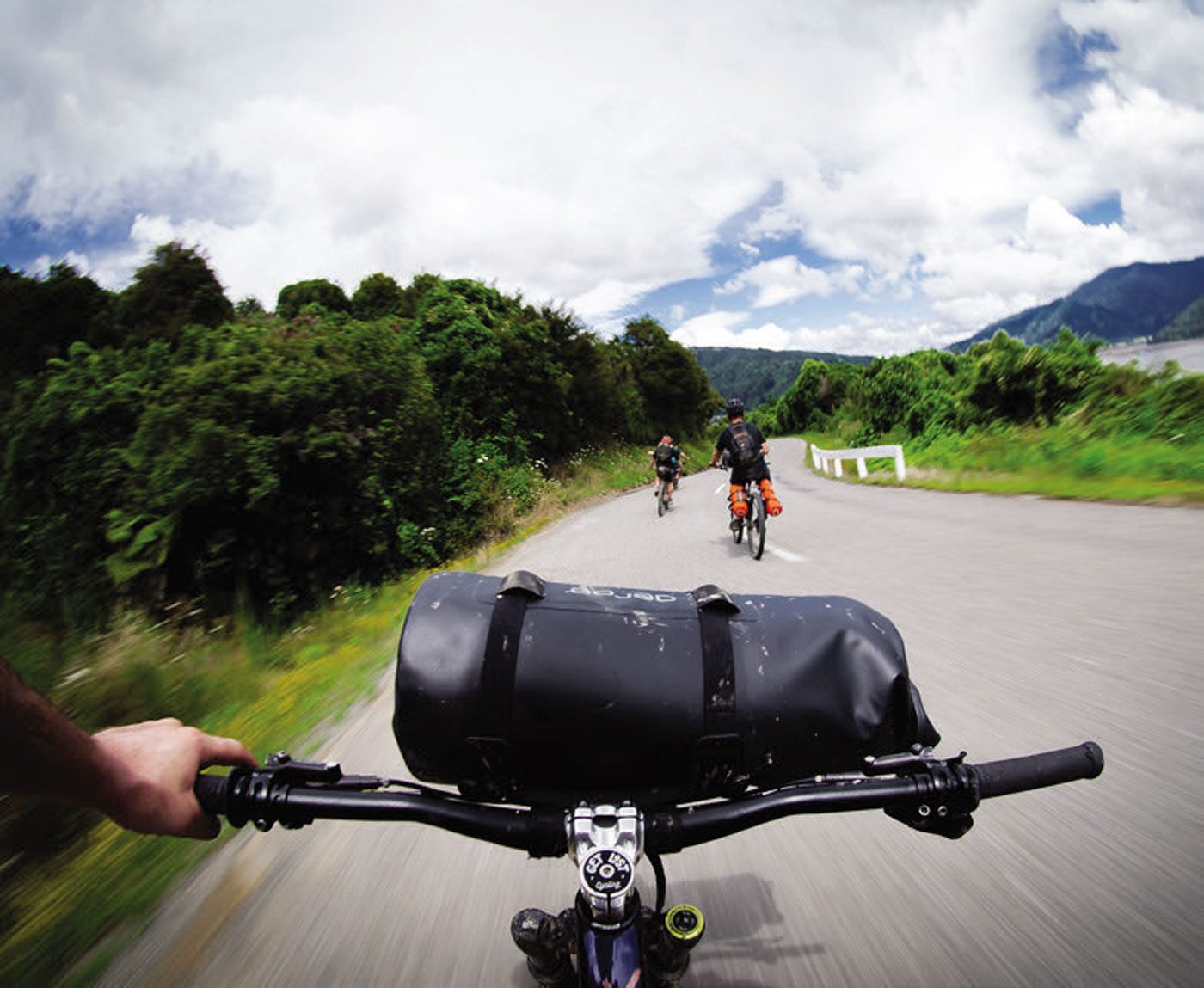
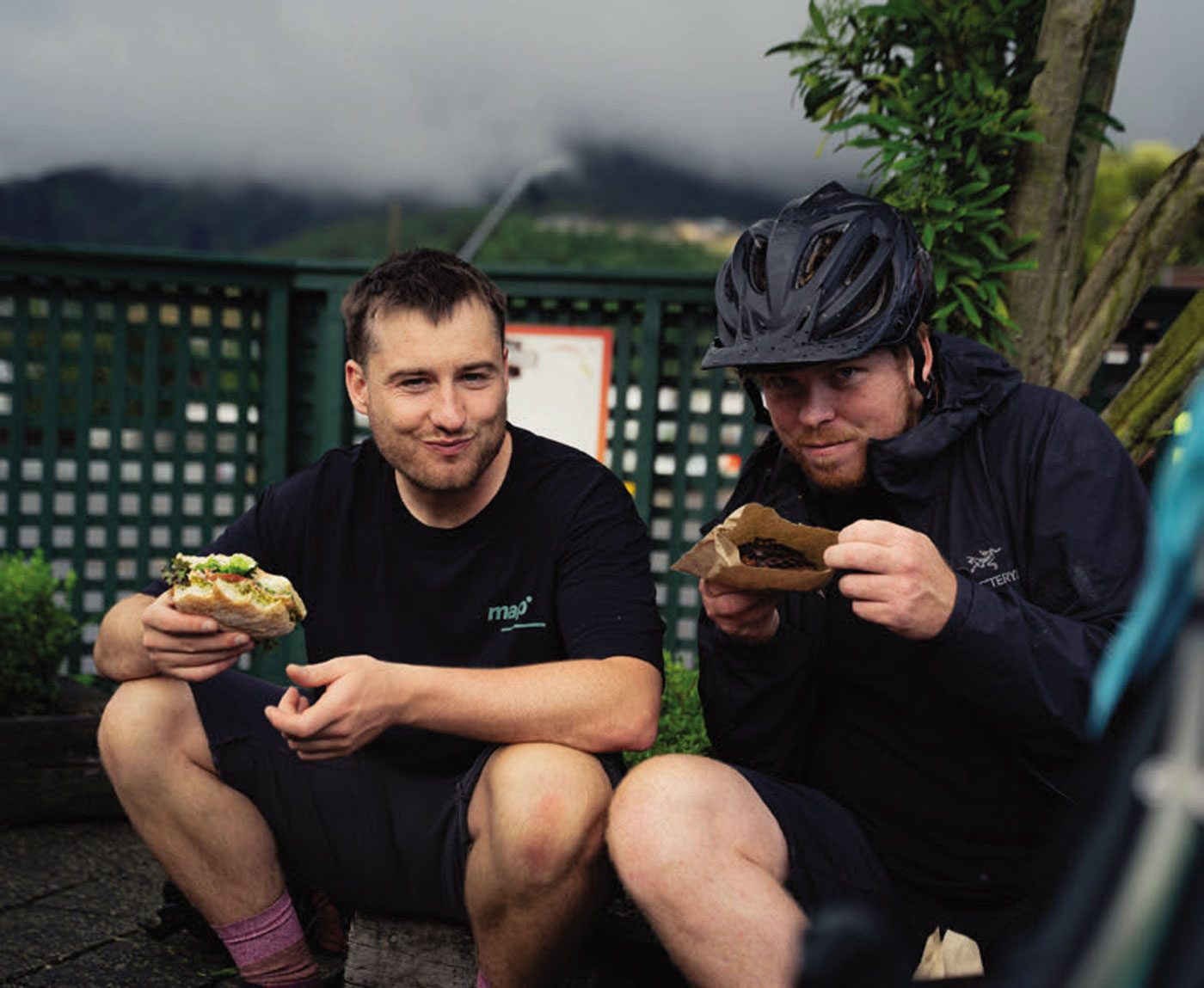
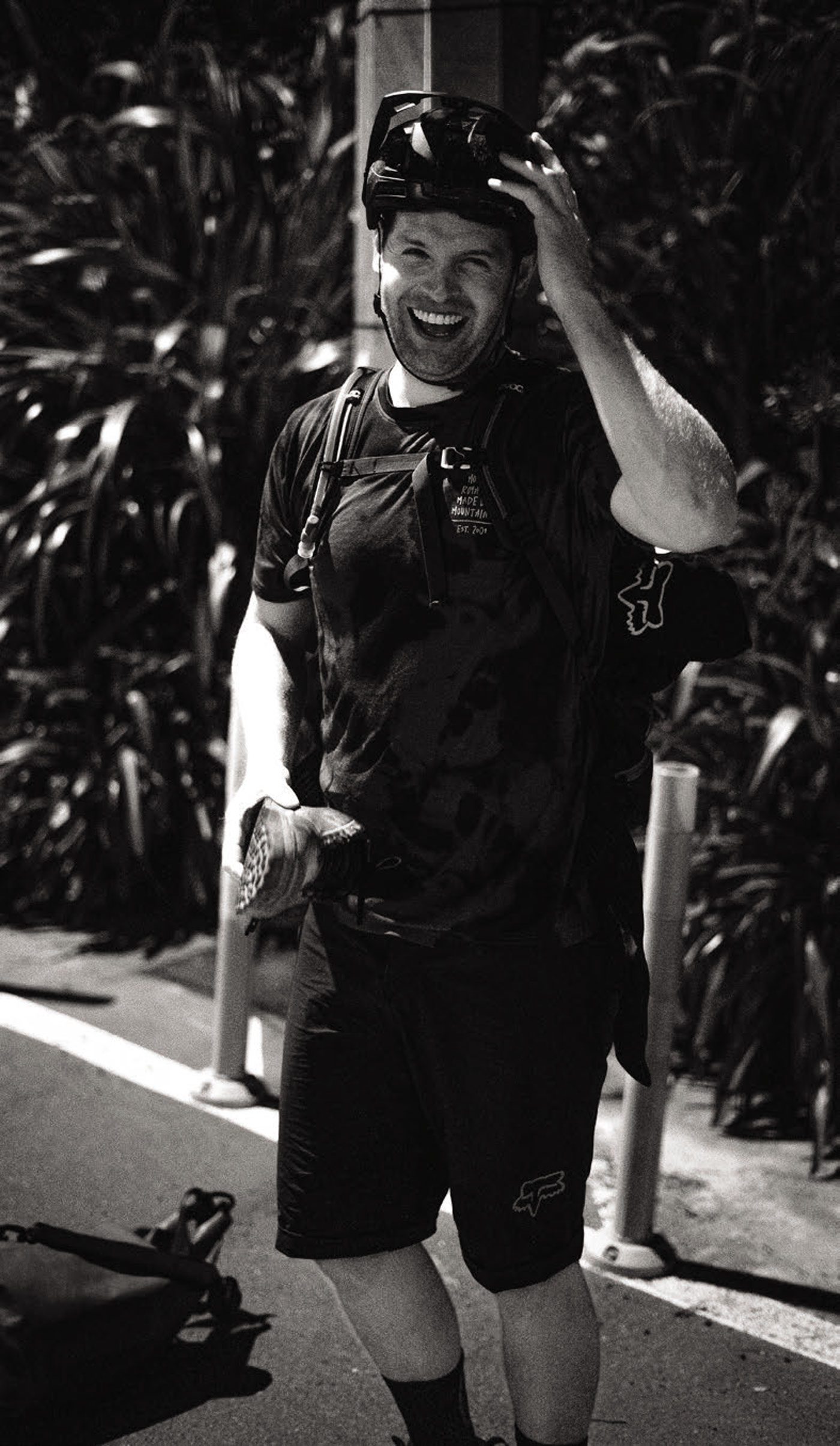
At 12.30am, Scotty and I hit the road to the ferry terminal. We met Paul at Penny’s and bombed the road down to Zealandia, where Tom Bradshaw joined us. The energy levels were high, and the chat was pretty punishing (in a good way). We bombed the roads on the way down to the ferry. The quiet streets let you get off the brakes and speed tuck, not worrying about cars. But soon this speed would catch Scotty out.
As we headed towards the university, Scotty was hugging the corner of the roundabout tightly. It’s quite a tight left turn and Scotty tripped on it. In a flash, his back wheel let go, and he hit the deck like a sack of potatoes, with such force that his shoe fell off. What the heck just happened? He got up and hobbled about. “Where is my shoe?” he said, half laughing, half in pain. Everyone was kind of laughing since we couldn’t believe what had happened. We hadn’t even made it 2km into the trip before the first crash. Scotty is a tough bugger. I think that crash was a lot sorer than he let on.
The shoe was recovered, and we got back on the road – this time at a bit of a slower pace – to the Bluebridge terminal. As we got to the terminal, the chat was, “Will Tom Cappleman show up? Will he be here? Is he actually going to bail?” This had been the running joke of the group chat for months. Tom hadn’t ridden his bike all summer. His new business, Coffee Outdoors, had been going gangbusters, which in turn had taken up a lot of his time. Even the day before, when I was buying my jacket, he was like, “Yeah, I’m not coming,” in a joking manner. Well, peer pressure got the better of him, and he rolled up to the terminal ten minutes after we arrived. It was great to see him back on his bike. The adventure was about to begin. The crew was assembled. Let’s go…
We all piled into the back room of the terminal, awaiting the ferry – the small room where they put all the bikes before boarding the ferry. The terminal was a lot busier than normal, full of people from the Ed Sheeran concert that night. We were in the room for about half an hour before finding out the ferry had been delayed. By how long? No one knew. We just had to sit there and hold tight. As time went on, tiredness and delusion started to kick in. We were just lying on the floor laughing about absolutely nothing, trying to even think of at least one Ed Sheeran song we knew. The carpet in the room was that super thick, hardwearing, bristly-like material, and it was so uncomfortable. When you laid down on it, it felt like getting stabbed by a thousand tiny needles. I tried to get some more shut eye, but it wasn’t happening.
What the heck just happened?
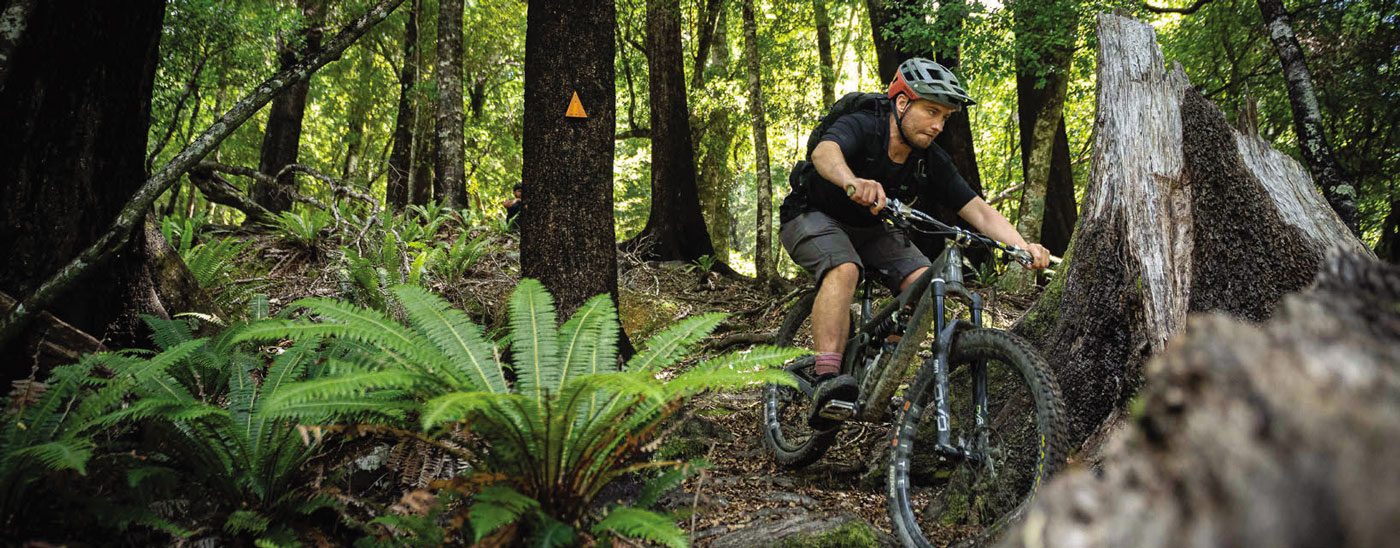
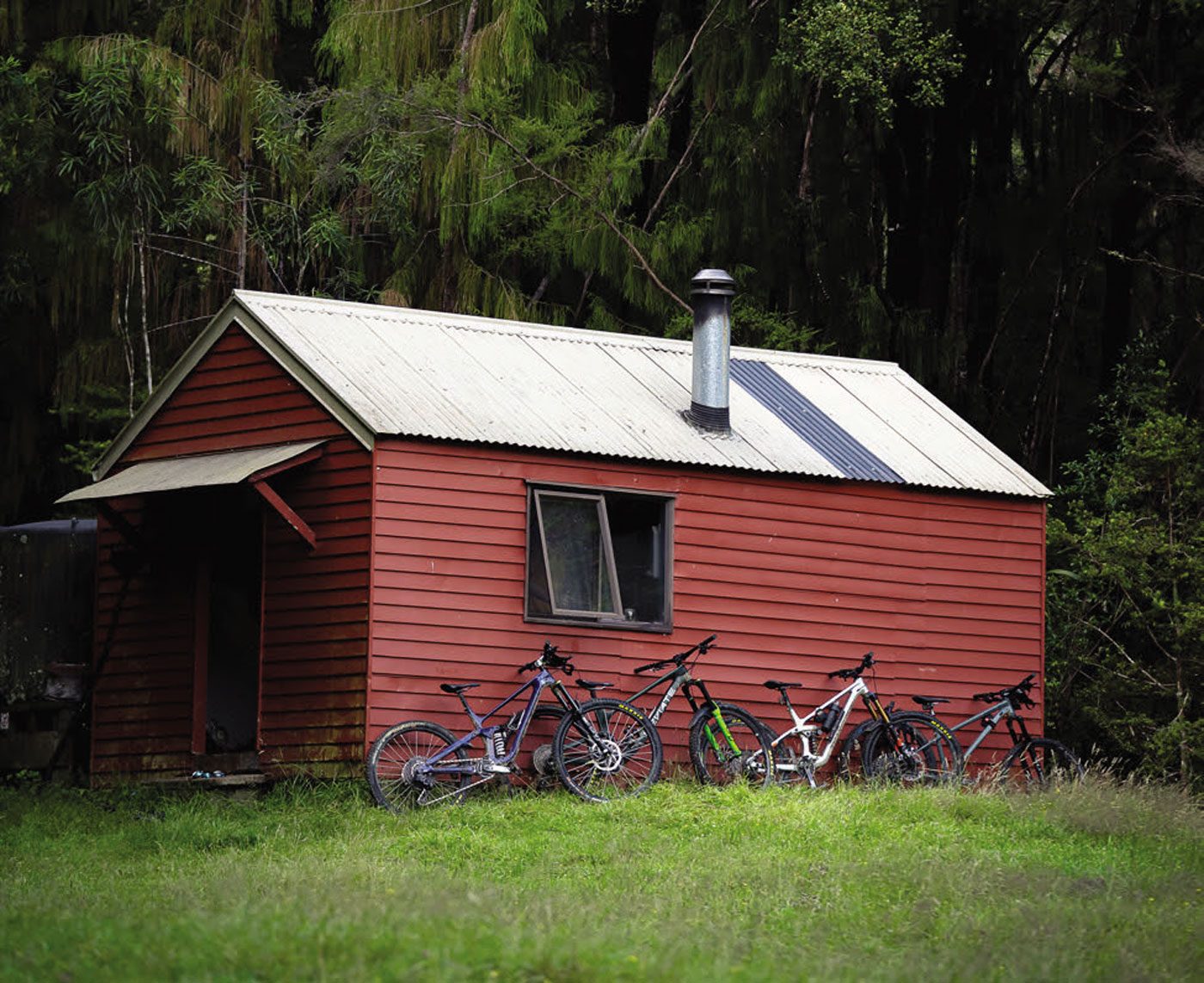
THE ADVENTURE WAS ABOUT TO BEGIN. THE CREW WAS ASSEMBLED. LET'S GO...
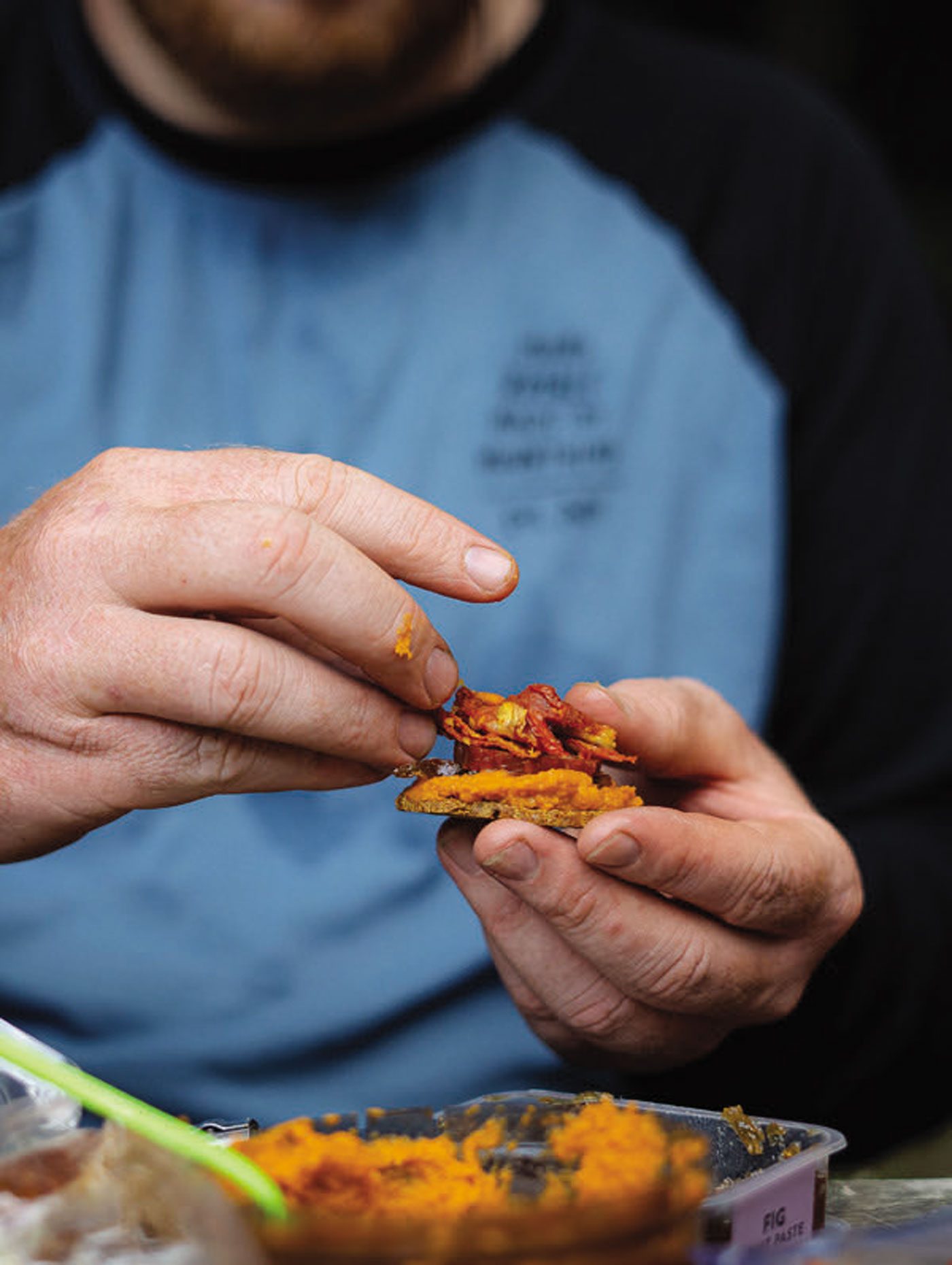
A full two and a half hours later, we finally got to board the ferry. Getting up from the floor, I felt like my body had aged 50 years. Every joint hurt. Half my body felt numb but sore at the same time. The walk to the ferry sorted that out. We had done this ferry ride enough to know the drill. Get in early and find a good place to get horizontal for sleep. After quickly getting our bikes loaded up, we sprinted upstairs to claim some big seats. Snooze you lose, people. I got horizontal immediately on a row of seats. I just wanted to try to get some shut eye. It had been a long day ‘til then without sleep. I managed maybe an hour or two, but it wasn’t much.
As the sun came up and illuminated the Sounds, I woke up and went out on the deck to see if there was a golden hour, but it wasn’t meant to be. Grey clouds hung around. In some of the bays of the Sounds, you could see rain, and towards Picton way it was raining heavily. Not a great omen for what lay ahead. As we docked in Picton, the rain lashed down outside the boat but, in Picton centre, there were blue skies. Maybe we would miss it? Just… Well, that wasn’t the case. As we got off the boat, we rode right into the middle of it. The rain pelted us as we disembarked the ferry, the residual water from the road spraying up and completely drenching us. First stop was the bakery in town for breakfast and to grab lunch for later.
As we arrived at the bakery, the rain stopped and the sun came out, which was pretty great timing to let us dry out as we shoveled all the carbs and caffeine into our bodies in preparation for the 70km of road ahead. Spirits were high despite us all looking a bit worse for wear due to the lack of sleep. It was only at this point that I found out Bradshaw wasn’t going to be joining us for the return leg of the trip. Instead, he was off to ride down the length of the South Island afterwards. How flipping cool, and what a start to the trip this was going to be for him.
After a lot of time faffing, eating and drying out, we finally got on our bikes and made a move on the Queen Charlotte Drive, out of Picton toward Havelock. We eased into the climb out of Picton, having learned our lesson from the last time we were in this position: don’t get overexcited and punch it. We didn’t need to treat this like a race. We had heaps of time to get to the hut that night. As we reached the top of the climb out of town, we got a full view of Picton below. The misty, rainy grey sky contrasted with the dark-but-vi- brant green of the trees. It was pretty magical.
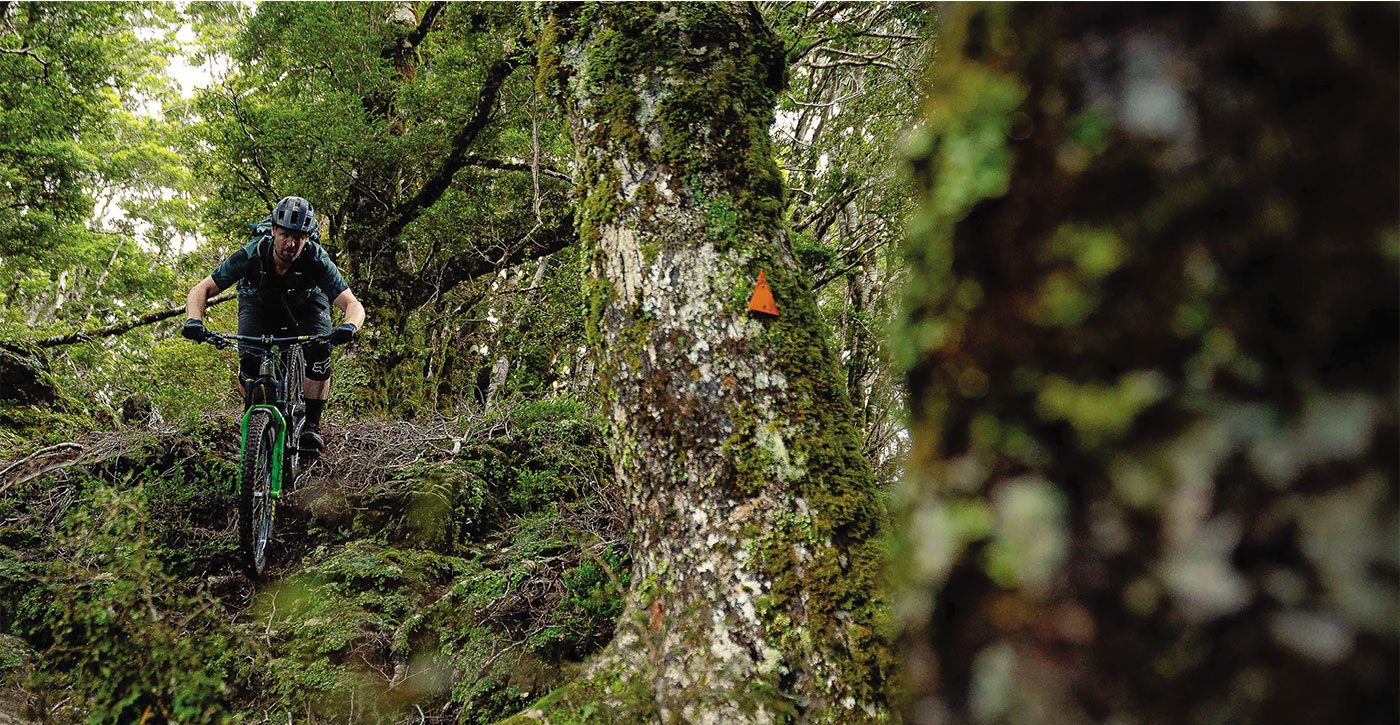
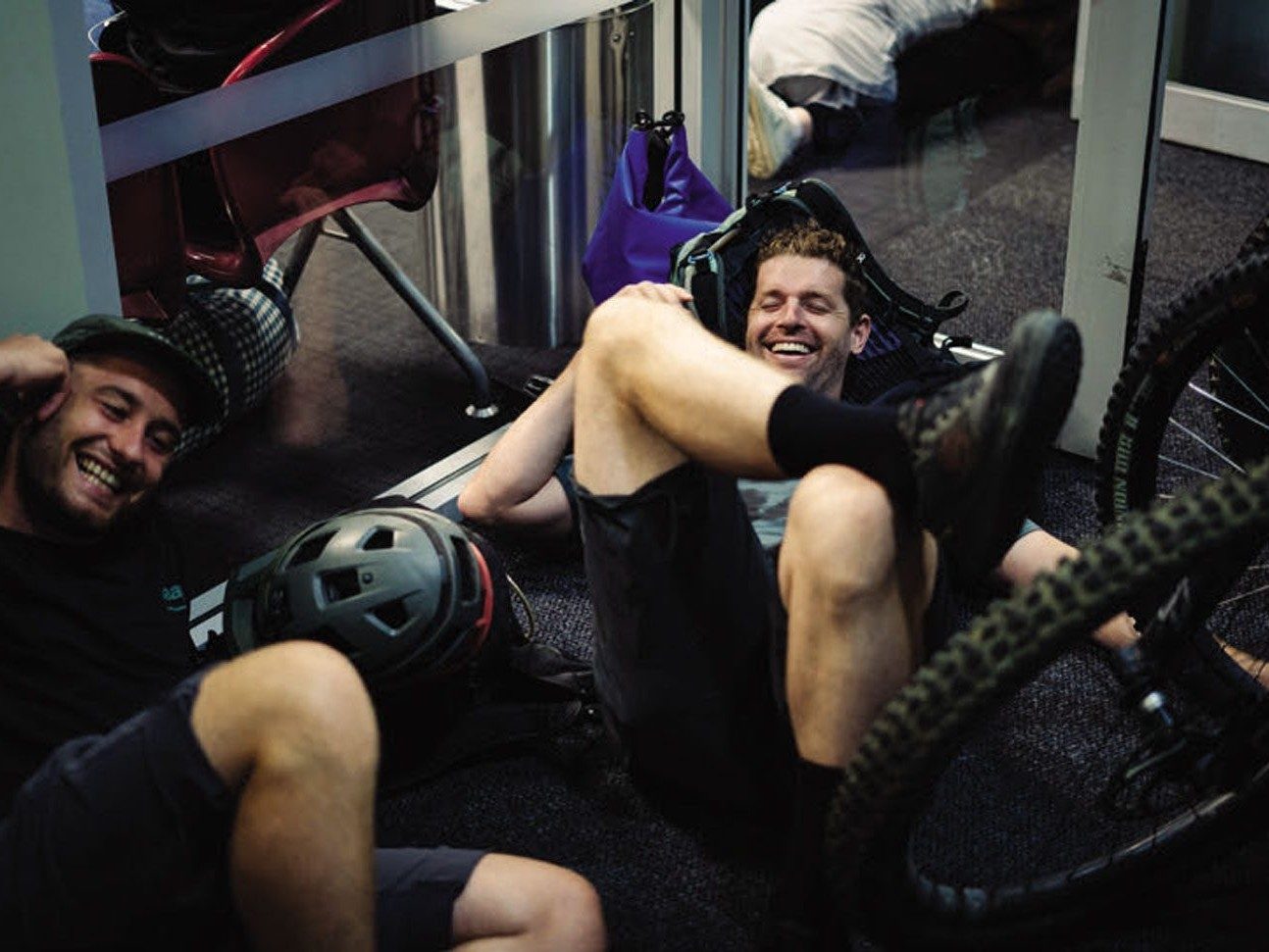
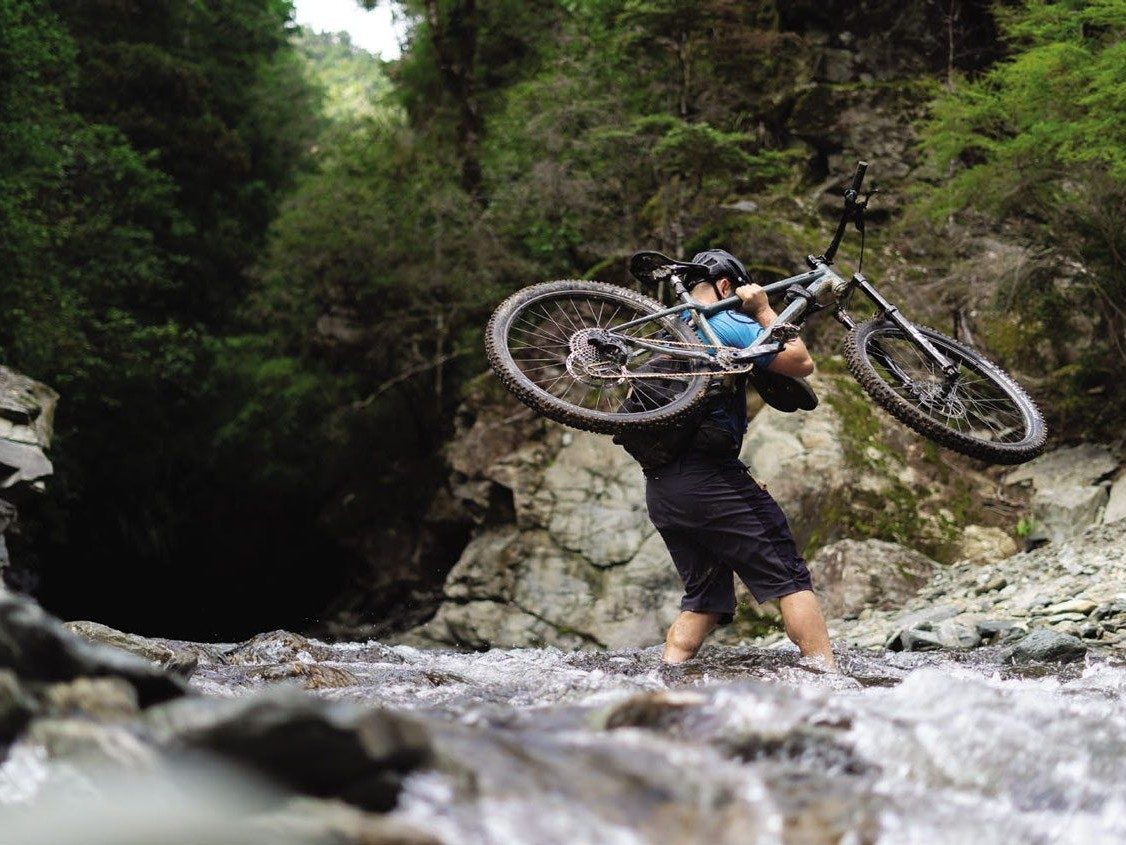
We were just lying on the floor laughing about absolutely nothing, trying to even thing of at least one Ed Sheeran song we knew.
Road or singletrack? That was the choice from the viewpoint. We chose the singletrack which… might not have been the best choice. It started off great, a flowing track back down to sea level, then onto a boardwalk around Shakespeare Bay. Moored up in the harbor was a gigantic cruise ship. After the boardwalk, the track started heading uphill. The saturated dirt was sticky to ride through, often causing wheel spins. It weaved its way through the dense trees back up near the road above. Eventually, we got to a point where there was a huge slip on the trail. Work had been done to reroute the path, but the soil was like clay, sticking to the wheels and tires. We had to push our bikes on this slip section as it was so sticky. We took the next turn off back onto the road. “Well, let’s not do that again,” said Scotty.
The road from Picton to Havelock follows the contours of the Sounds before a long, straight section inland, then back to following the edge of the Sounds to Havelock. The windy road sections were stunning. They weaved up and down, with some fast descents followed by pretty mel- low climbs. You could see the extent of the damage caused by the rains in the slips that had happened – huge bits of the hillside had just fallen away. But that didn’t tarnish how beautiful the landscape was. The misty, grey low clouds really added to it, leaving a sort of lazy, moody feel. There were still pockets of rain in some of the bays, from their own little microclimates. We were making good pace, just plodding along. Everyone seemed in good fettle. Knowing that we were going to be in for a big day, we kept the pace chill.
As we hit the big, long straight, the clouds burned off and bright sunshine appeared. It seemed to happen in an instant. Gone were the grey skies, replaced with what was almost a bluebird day. The temperature shifted massively. It became hot and sticky, with humidity at an all-time high. We got into a chain gang, got our heads down to get this straight out of the way. It was a good long slog, just turning the legs and trying to enjoy the surroundings over the humming sound of Maxxis Max Grip tires sticking to the tarmac. In the distance, you could see the heat waves coming off the tarmac. Sweat was dripping off me like water, and a mixture of sun cream and sweat beaded off my head into my eyes, leaving that familiar uncomfortable stinging feeling. “Couple of hours, boys.” With our heads down, we pressed on and eventually hit the windy roads to Havelock again.
It was a welcome sight to see Havelock. In my head, I knew that was a big chunk ticked off today. We stopped for a bite to eat, a water refill, and a bit of chill time. The temperature might have been unpleasant when riding, but boy oh boy, it was great during lunch. After a good feed and some chit-chat, we were ready to get back on the road again. We got back into the chain gang and punched it to Canvas Town. The 9.6km bit of State Highway 6 was busy with trucks and cars. It wasn’t pleasant to be on. Cars fly by you at high speed. We just wanted to get it done and get off it for our own safety.
Road or singletrack?
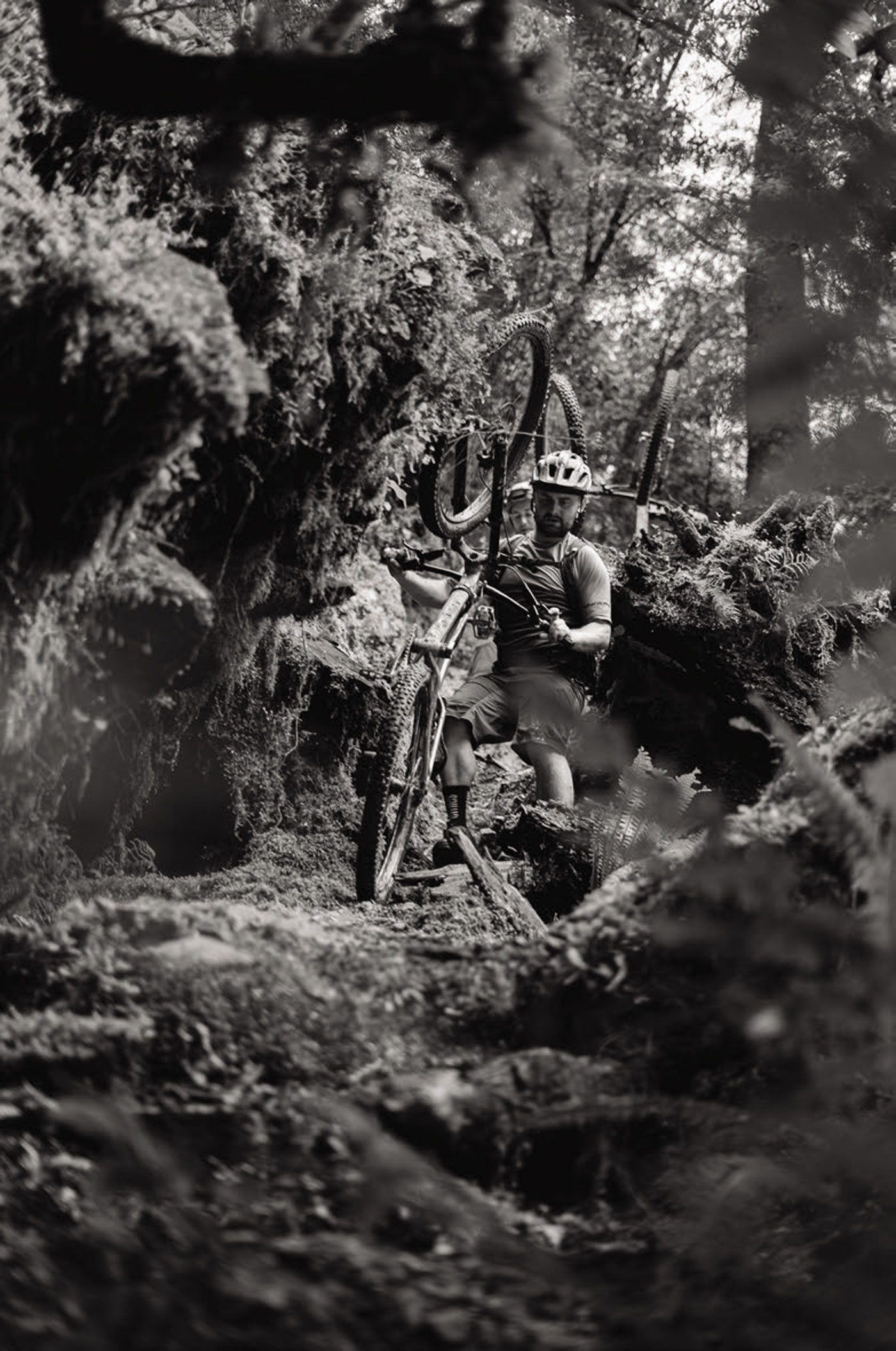
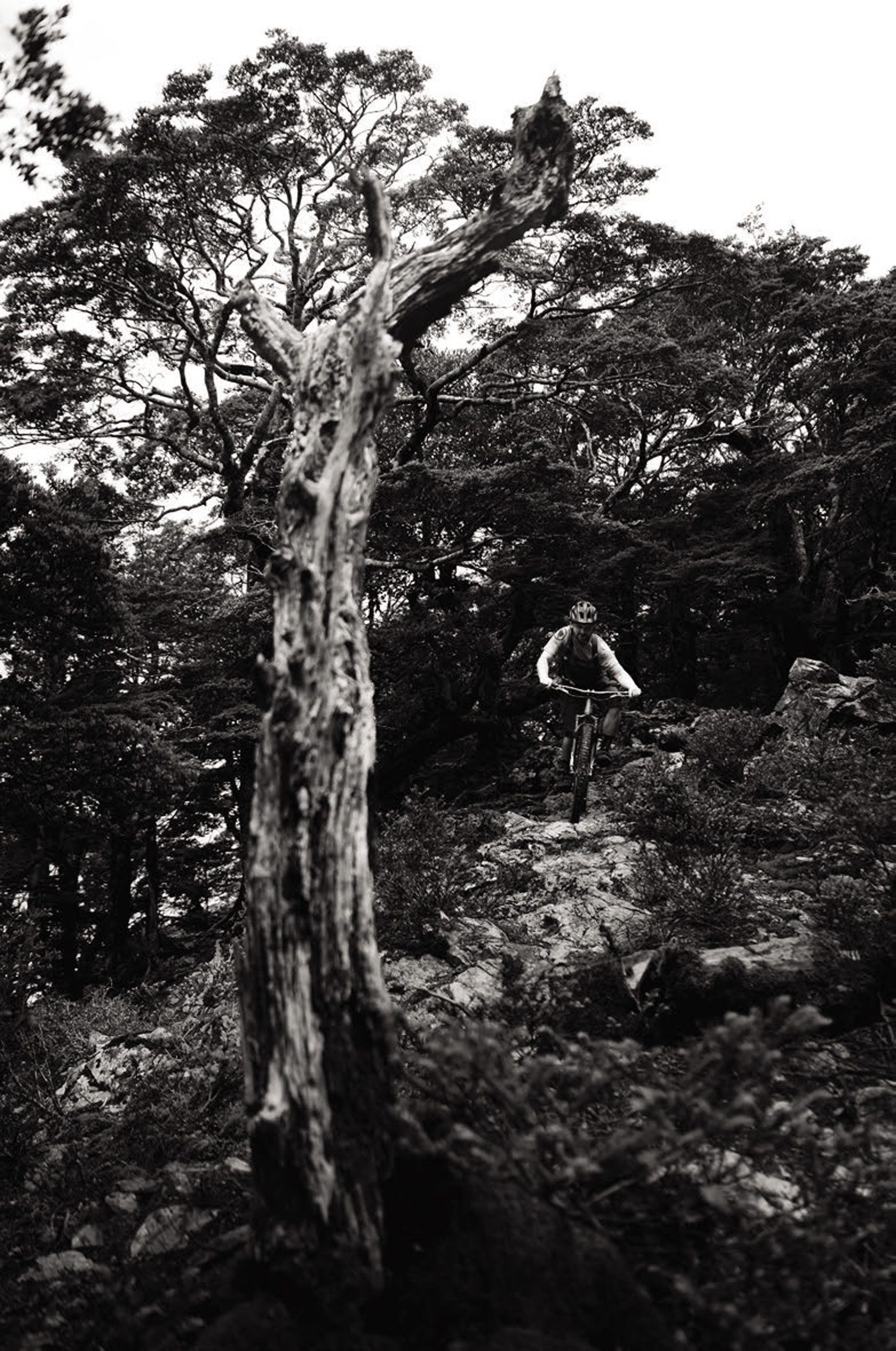
"COUPLE OF HOURS, BOYS."
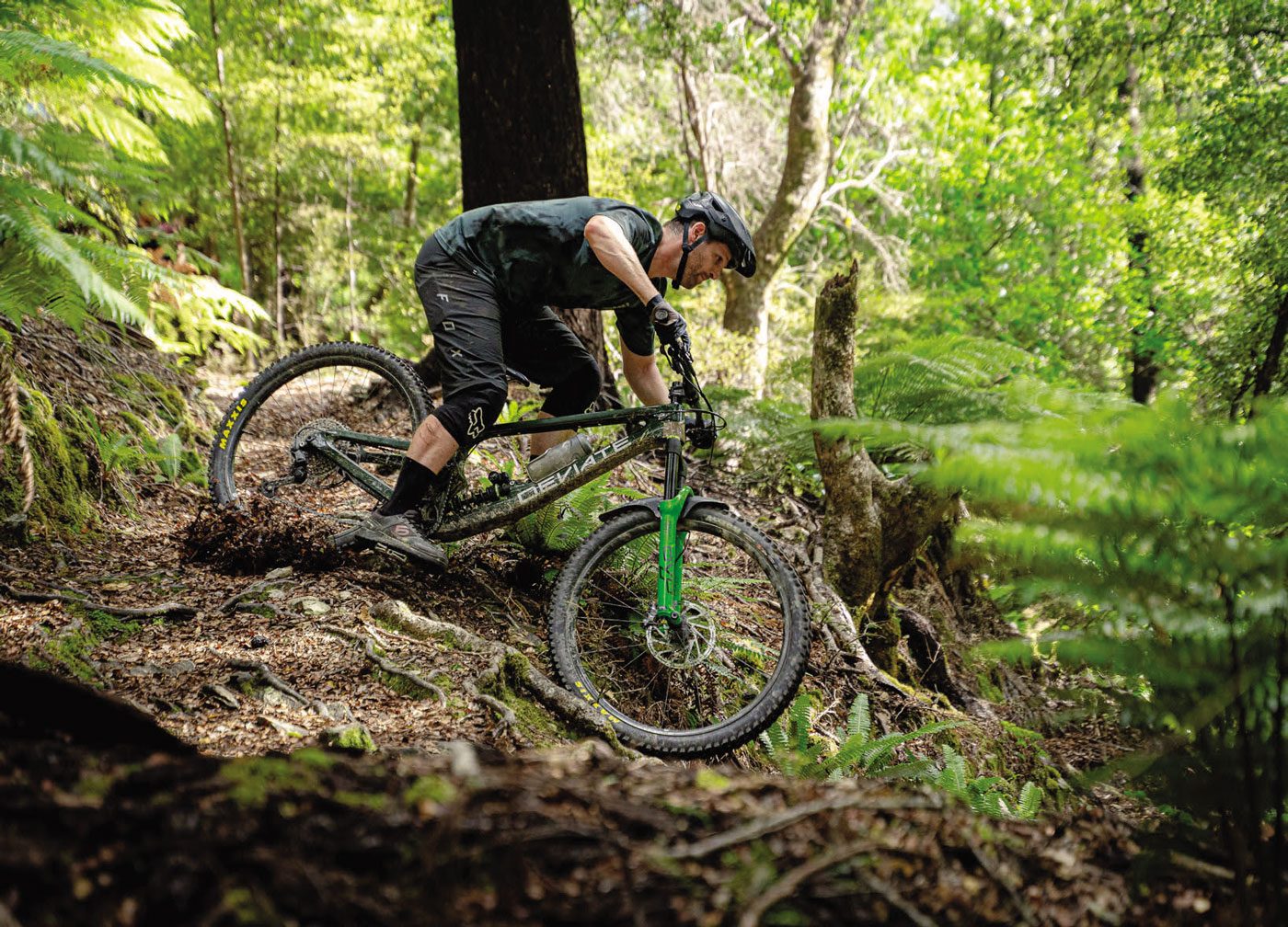
At Canvas Town, we took the left turn off just after the pub and followed that road down the valley. About 2km down, we stopped to check out Bradshaw’s grandparents’ barn/holiday house, that they had built way back in the day. Bradshaw had described it as a barn, so we were pleasantly surprised to find it was more like a small holiday home/batch. It had plenty of beds for us and power. Our plan was to stay there the second night. What a result. “I was not expecting this,” said Scotty. “Yeah, it’s pretty great,” said Bradshaw.
The next 15 kilometres… well, they sucked. We followed the Wakamarina road into the mountains. Paul and Scotty had warned us about this bit, telling us it was just boring and, well, it was. You just grind your way along this road until the surrounding hills gradually get bigger and bigger and turn into mountains. The farmland narrows and becomes native bush while the road changes from tarmac to gravel. You could hear the native birds and flowing river over the rumbling of the tires on dirt.
Finally, we made it to the DOC sign for Devils Creek hut. What a relief. By that point, we were all pretty over riding on the road. Everyone was starting to look worse for wear. I think the heat and the 60km of riding we’d done so far had taken a lot out of us. My saddle sores were starting to hurt, legs were feeling heavy. The sign said seven kilometres to the hut – it was all off-road from here. We dropped 50psi out of the tires, making them a more reasonable pressure. From here, my memory gets a bit foggy about the trail… I remember it being a slog. Pitchy climbs with very wet, slippery soil below the layer of leaves that had fallen on the trail. We had to hike a few sections of it. It was technical, narrow, and pretty steep. At one point, there was a downhill before the bridge crossing. It was fast, rocky, and loose. The rocks were slick, with big compression into rock gardens. But, it was great. We stopped at the bridge to regroup. Chappleman had fallen behind. “I’m in the box, guys,” he laughed. “Not far to go, though.” He’d done amazingly well to get this far considering he hadn’t ridden his bike for about five months. We pushed on and finally made it to the hut – and boy oh boy, what a hut it was.
Before us, the clearing lay ahead. Off to the left was this beautiful red hut, like something you would see in a picture book of Iceland. Just a perfect little red hut. What a sight. We had made it. We parked our bikes up, took the bags off, and moved our stuff into the hut. There were six bunks to sleep on, and a nice kitchen area; the smell of the old wood and musk permeated the building. This was a well-used hut.
You could hear the native birds and flowing river over the rumbling of the tires on dirt.
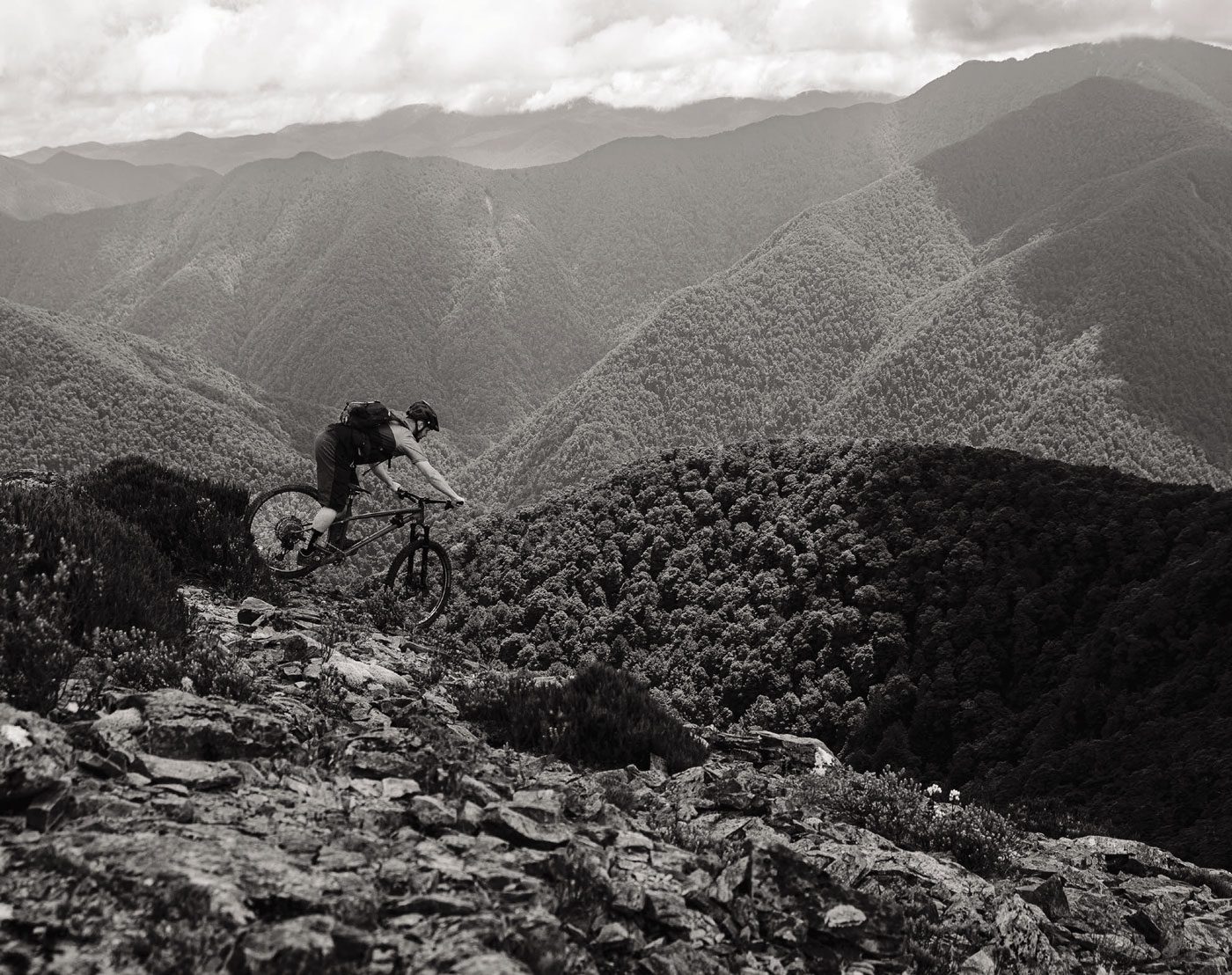
Cappleman was bonked, he had no energy left – so he stayed back at the hut while Scotty, Paul, Bradshaw and I started hiking up the Wakama-Rina. Our original plan was to get to the top and ride back down to the hut, but we were all pretty tired and kind of teetering on the edge of bonking, so we figured we would just push up as far as we could before bonking completely. From the get-go, the push was pretty hard. Early on, the trail was slick, making finding traction for walking even harder. It was going to be a fun, slippery ride down. As we pushed up, we kept checking out sections, wondering if certain gaps would be possible. Well, the gaps would have been possible, but it was more a question of whether we would be able to slow down afterwards in these conditions. We all pushed up picturing in our heads what we might do. “I’m just going to carve off this/float off that/drift round here.” It’s great thinking that way, and in reality you may be able to make just one of those things happen, but it makes the pushing up easier.
The trail looked fantastic, with some long sweeping turns, a couple of tech sections, fast straights, and some tight, technical switchbacks – nothing too technical, just a nice little warm-up for tomorrow, giving us an idea of what the dirt would be like. After about an hour and a half, we made it to a flatter section and decided to call it a day on pushing up. Everyone was looking pretty tired, and our legs were feeling heavy. We had a big day planned for the next day, so felt it was best to save ourselves for that. We turned around and dropped in.
Straight out of the gate, we hit this awesome tight switchback that you could really lean into and rail. Paul was out front leading, and he skidded around, throwing leaves up everywhere. Scotty did the same. Bradshaw was behind, shouting and yelling. Our back wheels were fishtailing left and right on the straights. As we tipped into steeper bits, a little bit of caution was applied, and we were right to. Braking traction wasn’t great, and when it started getting away on you, it really started to get away. In saying that, though, it wasn’t slowing Paul or Scotty down. They were flying. There were a few slick roots hidden under the leaves, and our bikes danced left and right as we held out through the line. I could hear Bradshaw having some wild moments behind me, on his hardtail, with the occasional “woooow!” or “oh shit!” moment. The forest we were riding through was amazing – and dense.
As predicted, I only managed about one of the twelve things I thought I was going to do on this trail. Everything just came up faster than I’d predicted it would – and you have to ride on instinct versus what you had imagined. We got back to the hut with huge smiles on our faces. It was a great little bit of trail we had just ridden, making the 60km worth it to get there. But, the following day was going to be something different again. Less of a ‘trail’; steeper, techier, longer, gnarlier. We were fired up. Everyone was grinning ear to ear.
As we pushed up, we kept checking out sections, wondering if vertain gaps would be possible.
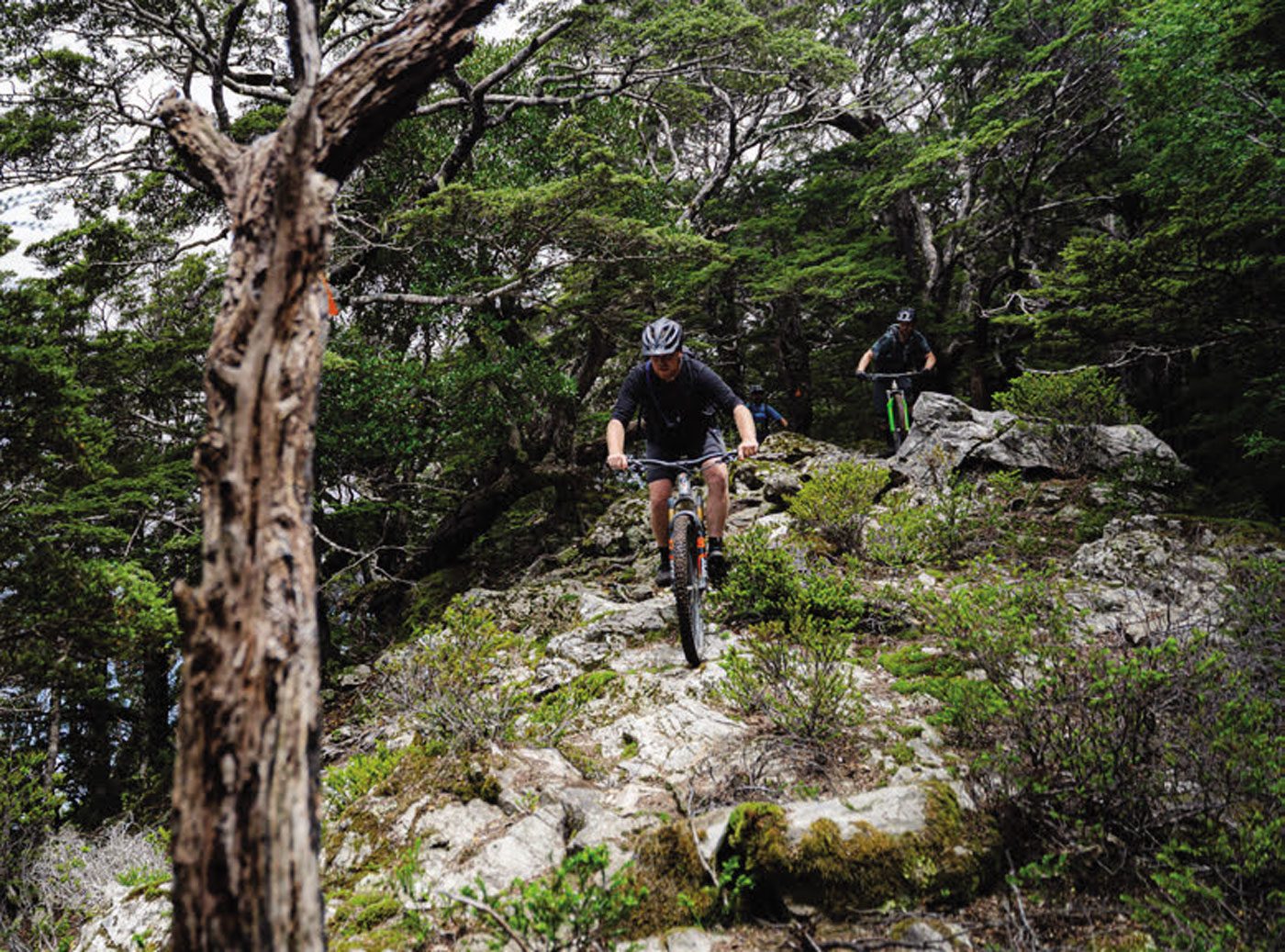
THE TRAIL LOOKED FANTASTIC...
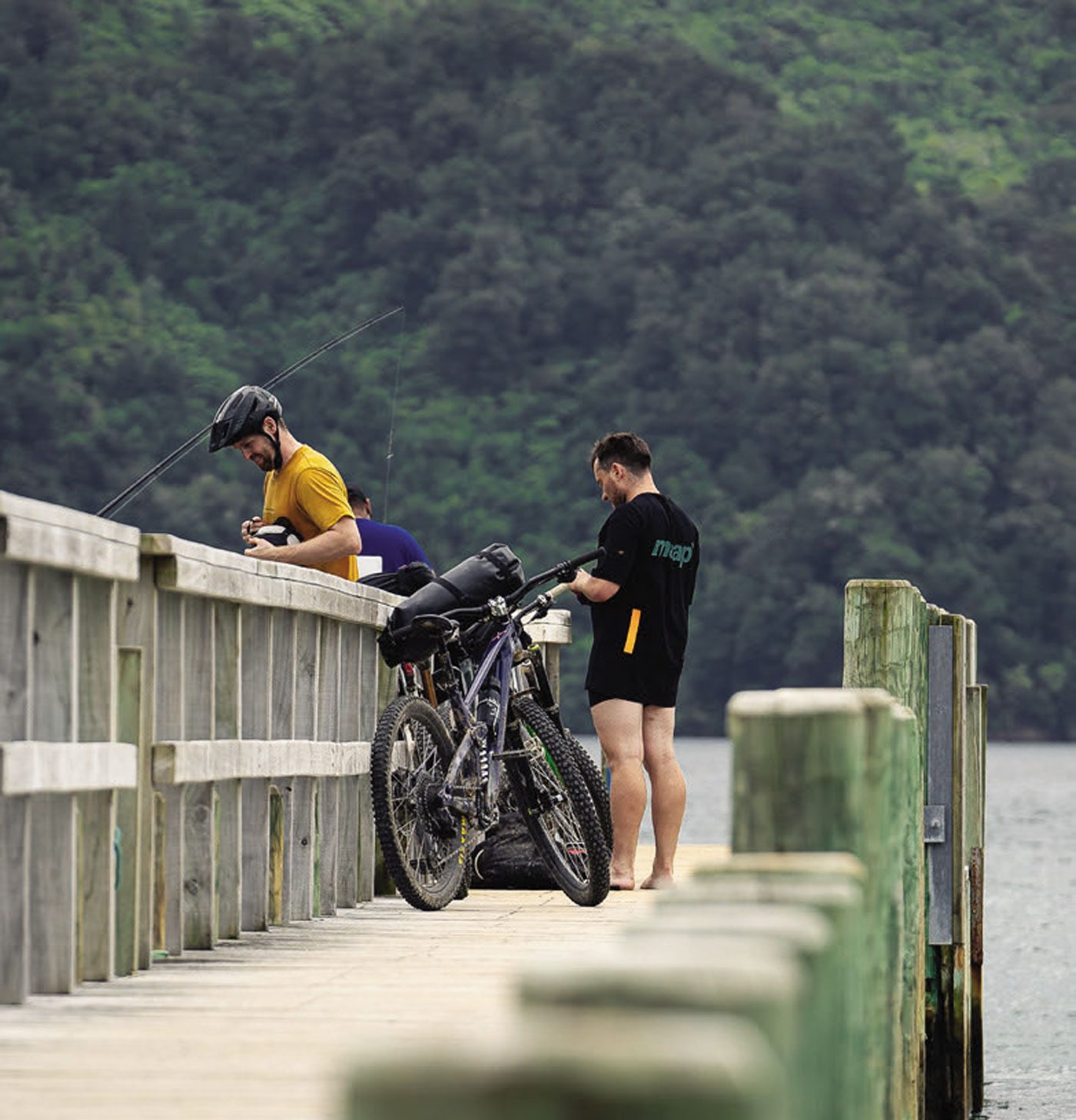
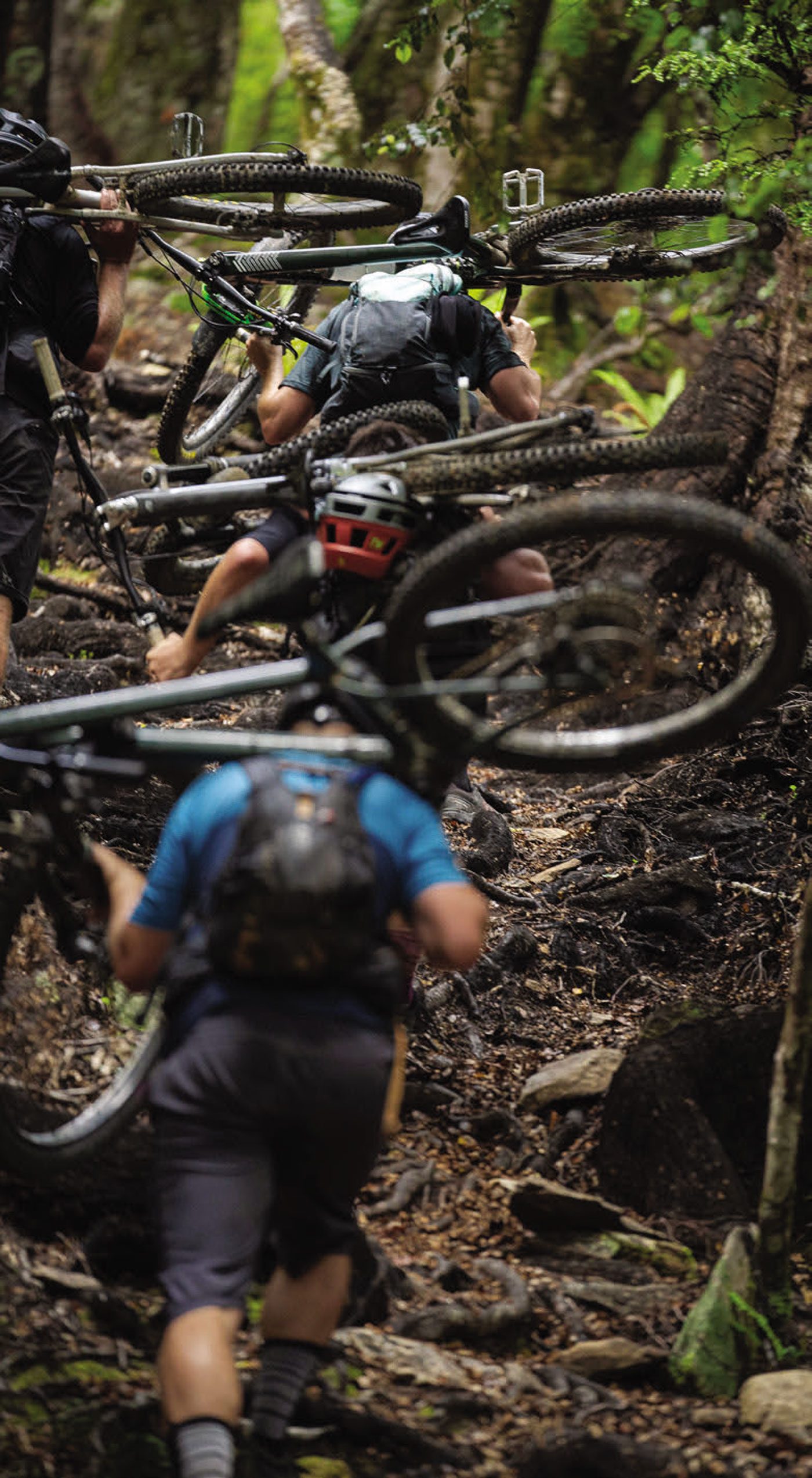
Back at the hut, Cappleman had perked up again. The downtime and some food had pushed him past the bonk and he looked full of life again. At this point, Bradshaw decided to drop it on us that he wasn’t coming up Mt. Royal with us but, instead, was going to hit the road to Nelson and start clocking off kilometres on his South Island trip. “Woah, woah, woah! Hang on, you can’t do that,” Scotty said, shocked. “Yeah, man, you can’t dog the boys,” from Paul. Cappleman just went straight for the heavy blow: “Didn’t realise you were a coward.” “You’re coming up that hill tomorrow whether you like it or not,” – Scotty. Bradshaw came back with some bullshit about how he had to be at some dinner or something. It was a weak excuse. Over dinner, and a dip in the river, we bullied, peer-pressured, and guilt-tripped Bradshaw to come up Royal with us. We couldn’t tell if he was joking or not. I mean, why would you just bail on this? Eventually, Capple-man said he would give Bradshaw his Crocs if he came up, and that was what sealed the deal. Honestly, some bullshit that was – but hilarious at the same time.
And so, night one came to a close – the perfect preface to what laid ahead of us.
They were flying. There were a few slick roots hidden under the leaves, and our bikes danced left and right as we held out through the line.”
THE FOREST WE WERE RIDING THROUGH WAS AMAZING - AND DENSE.
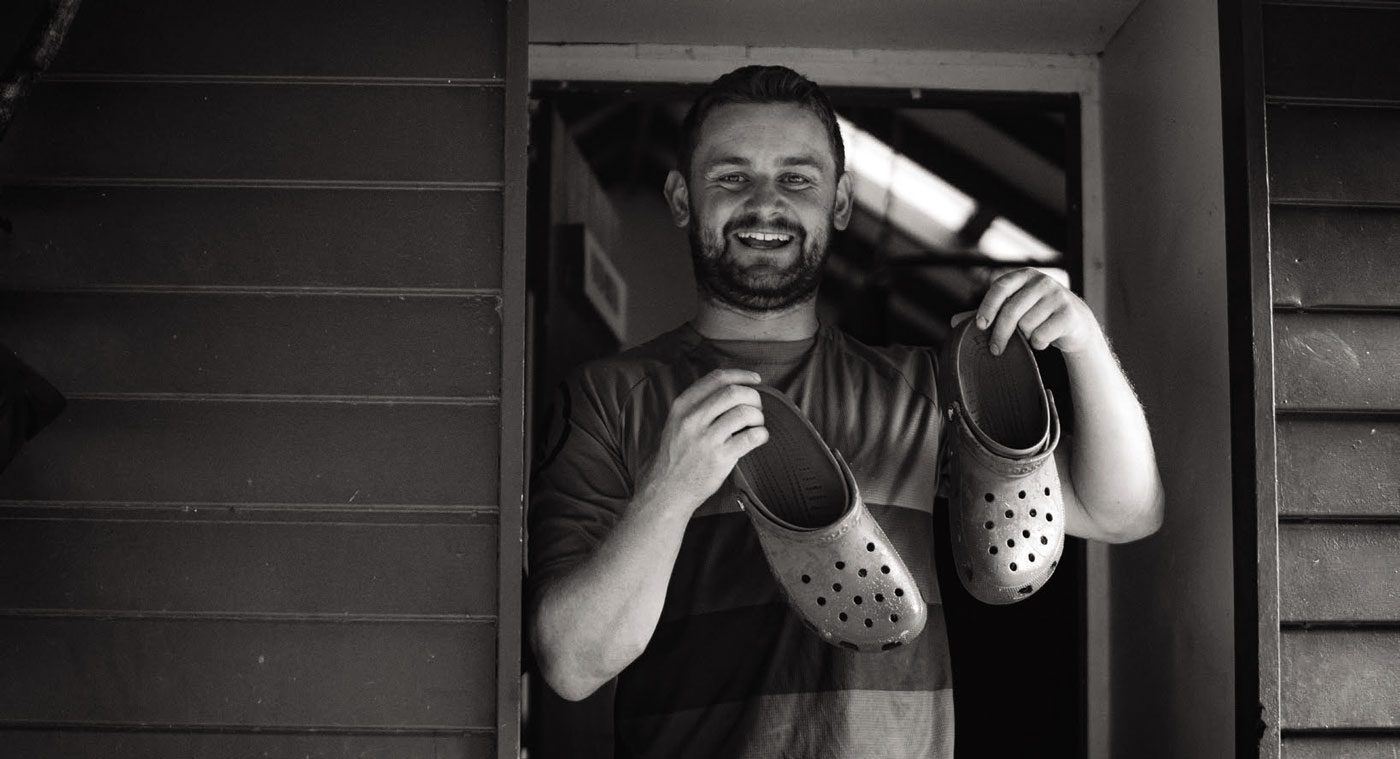
Honestly, some bullshit that was - but hilarious at the same time.
Over dinner, and a dip in the river, we bullied, peer-pressured, and guilt-tripped Bradshaw to come up Royal with us.
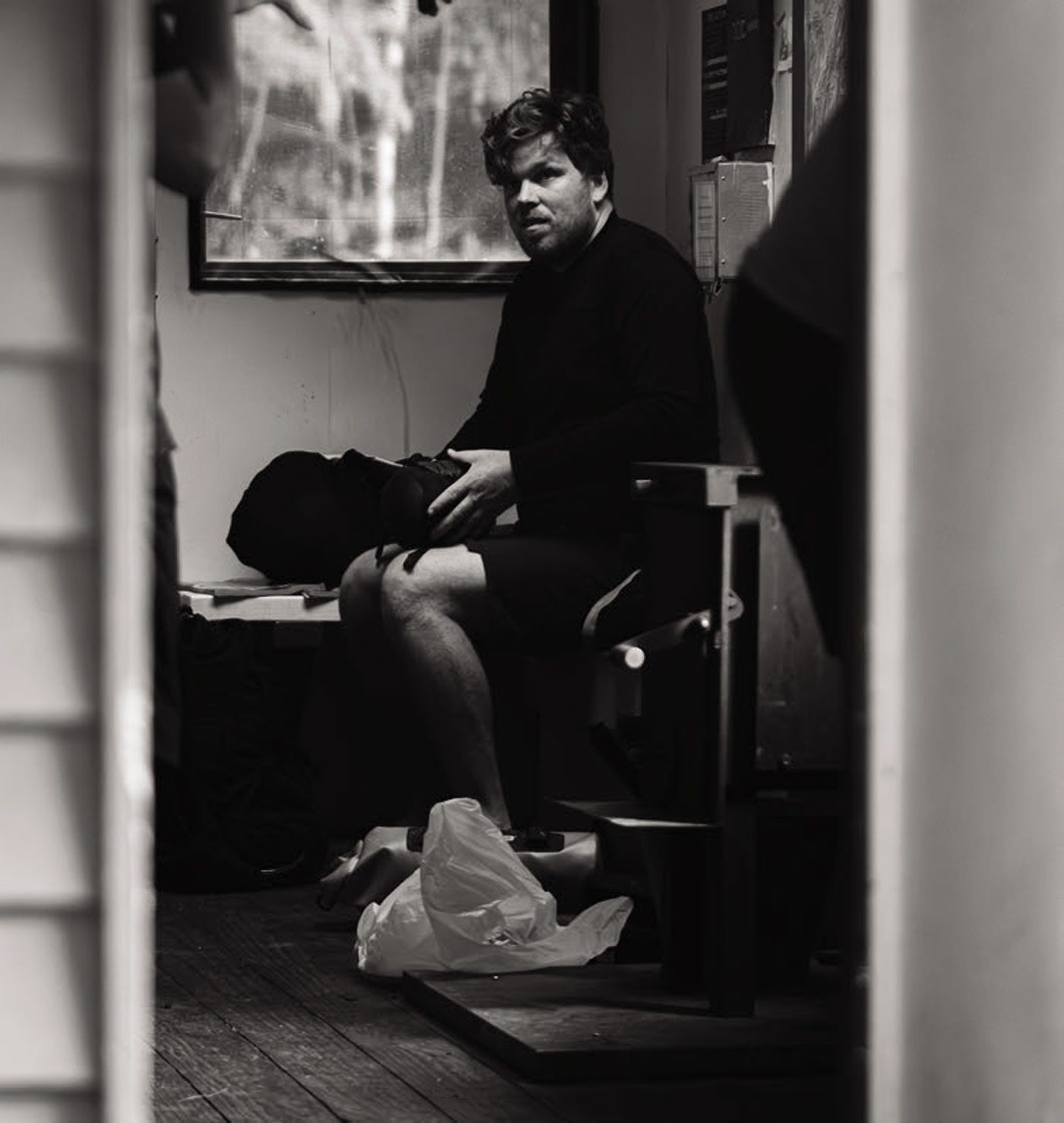
Stay tuned for Part Two of Jake Hood’s ̒The Royale With Cheese’ in the next issue of NZ Mountain Biker ...
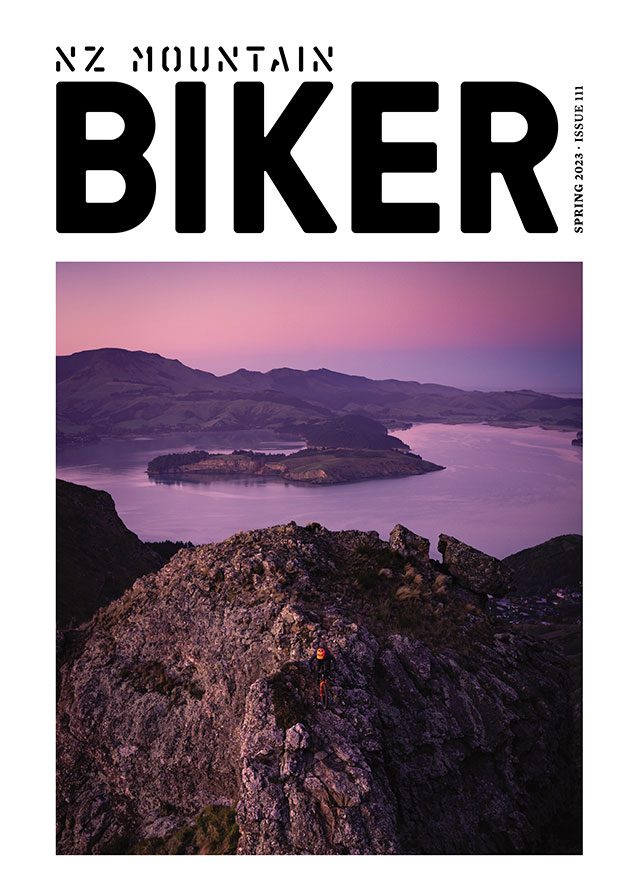
Matthew Fairbrother's race commutes
Words: Lance Plibrow
Photography: Nick Waygood, Piper Albrecht and Clancy Kelly
It’s every keen young mountain biker’s fantasy: to be at the pinnacle of their sport, spending their days racing around the world; riding in exotic locations on tracks they’ve only experienced via YouTube; to have sponsors showering them with free equipment; and to be rubbing shoulders with the world’s best each weekend as they race between the tape and then celebrate their highs or lows at a local pub, drinking strange foreign beer.
But, for every kid with a dream, there are few that have the tenacity required to push through the challenges it takes to achieve this goal. Hard work beats talent, as they say, but it takes both to break into the professional ranks.
But if there is an example to look to for how hard work can indeed turn this dream into a reality, Matthew Fairbrother must be the example. With a dream to be riding in the Enduro World Series, Matthew stumbled, somewhat inadvertently, on a way to make this happen.
“I BOUGHT PLANE TICKETS, I WAS JUST HEADING OVER BY MYSELF.”
At just 17, Matthew decided he wanted to race in the EWS. A common enough dream. Already an outstanding rider by local standards, Matthew took the typical route: worked hard, saved money, and tried to get onto the circuit. Securing the necessary qualification to be able to ride at an EWS event through local qualification rounds, the first hurdle was complete. From then, it was a question of how to get to the first race in Tweed Valley, Scotland. He knew he would need a pile of money for flights and daily expenses so, as soon as he finished Year 12, it was straight to work. “I was 17, I just worked as much as I could over summer, seven days a week,” explains Matt. “But I still didn’t have enough money.”
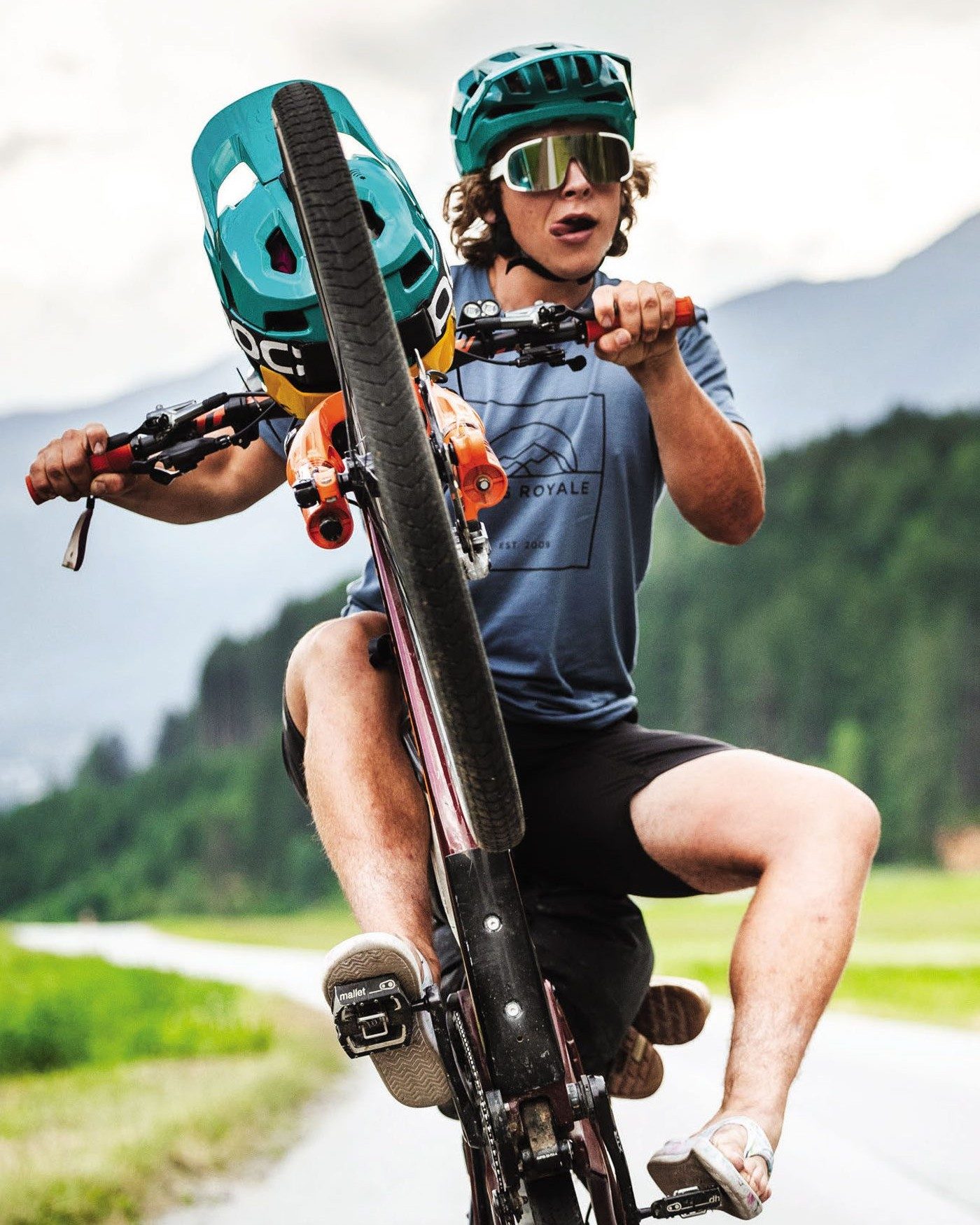
Now, the next big decision had to be made. What about the school year that was starting? It wasn’t a hard decision in Matt’s mind: “When it came time to go back to school… I just kept working. Still working six or seven days a week, sixty hours a week, trying to squeeze in biking and going to the gym around that. I was fully committed, I bought plane tickets, I was just heading over by myself. I didn’t know anyone at that point.”
Matt had been raised in a family that accepted this level of independence, and his parents didn’t stand in the way of his plans. “To be honest, I didn’t tell them much about what my plan was, because I didn’t really know myself what was going to happen. I just had a plan to get to the first race and see what happened. But I was confident in myself, and I’m naturally a pretty independent, self-reliant person, and I think they know that about me.”
The first EWS event in Scotland proved to be a fortuitous starting point. Already having some grass-roots level sponsorship through Scottish company, Deviate Bikes, he was able to foster his small connection to the company and lean on them as he landed at his first race. So, what was the plan in his head for the rest of the six month season across Europe and North America at this point? Loose. “Honestly, I just did not have a plan at all, I guess I was probably thinking there would be so many people there at Tweed Valley that would be going to the next race in Slovenia, so I was bound to be able to hook in with someone.”
But, that plan didn’t work out – for relatively human reasons. He landed in Scotland and struggled to make connections; the reality of what he was doing started to sink in. “I got to Scotland and, other than going to Australia, this was really my first time overseas on my own, and I just felt like a really small fish in a really big pond,” explains Matt. “I was actually just really overwhelmed and scared, and I didn’t seem to be able to pluck up the courage to just go up to other people around the race and talk to them.”
His plan for six months of racing was facing a reality check. But, fortune favours the brave and that’s when he had a fortunate encounter – meeting long time EWS veteran and New Zealand racer, Wyn Masters. “I bumped into Wyn Masters a few days before the race in Scotland, and he’d never heard of me but we yarned and I said, ‘I don’t know how I’m going to get to the next EWS’ and he said, ‘Why don’t you just bike there?’ He was actually joking but I was like, ‘actually yeah, that’s it, I’ll just bike there’ – totally serious. And after that I was committed, I guess.”
At this point, Matt had no idea how long the distance was between each race and how many kilo-metres he would end up riding (about 5000 by the end of the season). He didn’t even know how far it was to the next race in Slovenia, or have any idea how to get there. “I didn’t think it would be that far… but as it turns out it is, in fact, quite far. But I was committed to it and it solved my issue of transportation. For some reason it just seemed to make sense. I’m not sure how it made sense, but it just did.”
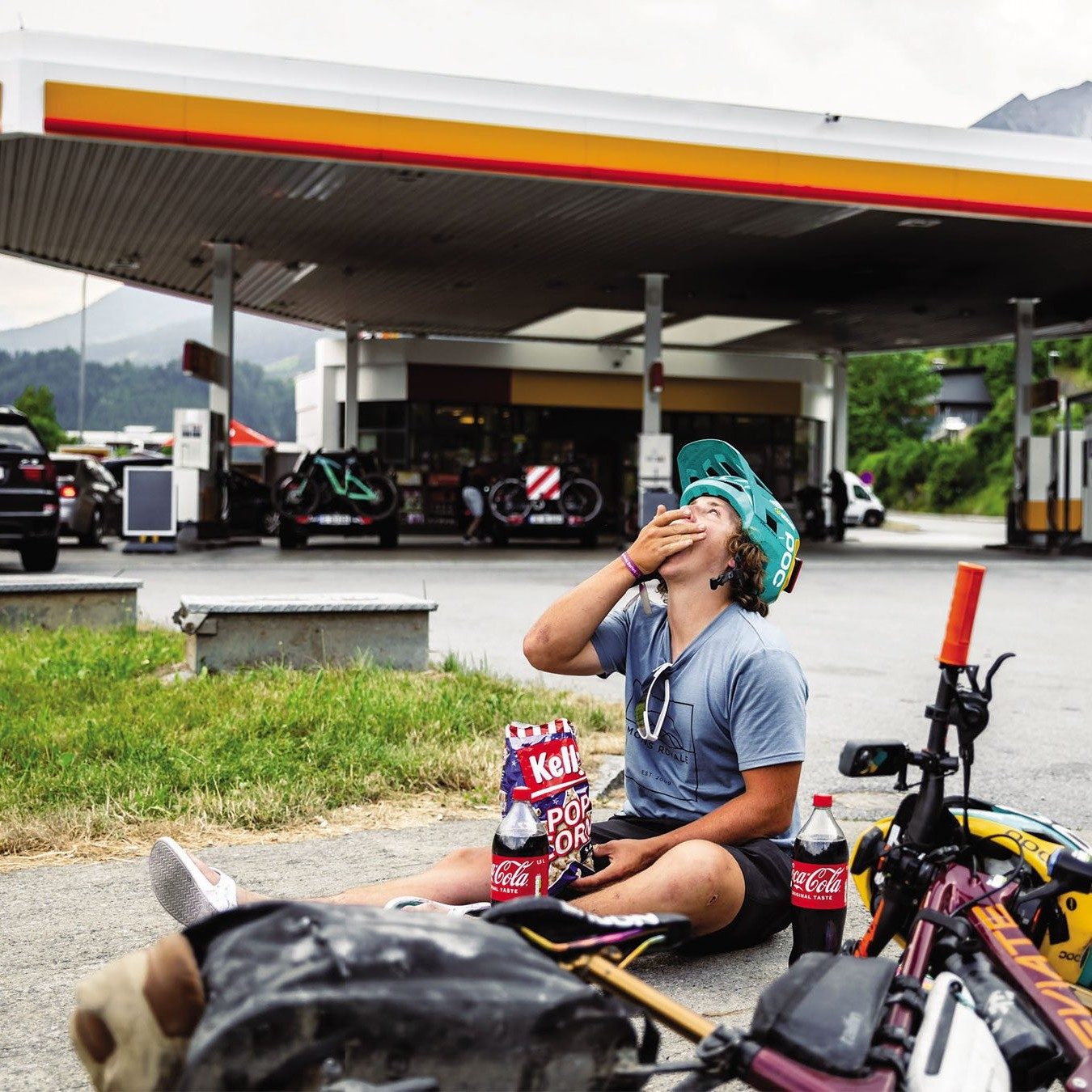
There was of course the slight problem of not being at all set up for riding across Europe. Only deciding to do this five days before he would need to begin riding, he had no bikepacking bags, so quickly jumped online to order some that would theoretically arrive in time for him to make the ride to Slovenia. However, a Queen’s Birthday long weekend meant that when they hadn’t arrived by the Friday his schedule was already in trouble. He had the Tweed Valley race that weekend to focus on as well. Fortunately, the owner of Deviate came to the rescue, driving down to Glasgow, buying some bags for him and bringing them back up. Fortunately, when he left New Zealand he had packed light. “I didn’t leave with much of a plan, but I knew that it would be harder if I had a lot of stuff. So I just brought as little gear as possible with me. I didn’t even have any non-biking shoes.” He finished the race in Tweed Valley; the owner of Deviate met him at the finish line with his bags; Wyn managed to scavenge some slick tyres off another team’s warm up bike; a quick tyre change and less than an hour after finishing his first EWS race he was pedalling to the ferryto get to the Netherlands.
Eventually arriving at the ferry, he encountered his next problem: children under 18 had to be accompanied by a parent or guardian, and they wouldn’t allow him to board the boat. “It was two in the morning in New Zealand, and the people from the boat said I needed a photo of my par- ent’s passport and to sign something saying I had permission to board the vessel. So I was calling my mum at 2:00am and I was just lucky she actually woke up.” Eventually, he was on the boat and looking forward to two things: refuelling, and relaxing in the sleeping cabin he had paid for. The boat had a buffet, so it was time to get his mon- ey’s worth and load up on calories for the ride to Slovenia. “I went to the buffet for dinner, and I just ate so, so much, as I was basically pedalling for a week after that.” But, he didn’t count on one thing – sea sickness. “After I had literally eaten as much as I could, I went up to my cabin and I was just so sea sick, I puked up all the food I had eaten. Eventually I got off the boat, feeling terrible, but I had to keep moving. So, I just started pedalling until I made it to Slovenia.”
It took six days of riding to get to Slovenia and he enjoyed two days off watching the World Cup in Leogang, but all the riding was beginning to take its toll. “At the Slovenia race…I just got demolished. I was so tired. But I was also just so stoked to be competing,” says Matt.
But the tiredness took its toll; fatigue on his body meant he was crashing more than he should have been: “I actually ended up dislocating my pinky finger in one crash – I looked down and it was just dangling out to the side. I got to a medic, and they wanted me to pull out, but I wanted to carry on, so they decided the only thing they could do was zip tie it to my other finger.” From Slovenia it was on to Italy and the round at Val Di Fassa and, if sea sickness, fatigue, and dislocating a finger were bad, here things got worse. Rain riding to the event took its toll. What might be an otherwise difficult physical task to get to the next round became mentally challenging. Too little funds to stay at camp- grounds meant that he was sleeping rough each night, using whatever he could find for shelter, to make his meagre pot of funds stretch that little bit further. He eventually arrived in Val Di Fassa and was not in a good state. He also hadn’t factored in the challenge of riding at higher altitude. “I was just shattered. And as it turns out I had COVID at the same time. I thought I was just tired from riding, but I actually had COVID. I wasn’t having much fun at the race, and I think I came 36th or something.
But, eventually, he found his groove and things got easier. Building a bit of a reputation around the pits meant people were engaging with him more. Teams would offer him food and other support. “If I ever had any issues with my bike, I would be able to go to a team and there was always someone who would help me out. I was alone, but I actually felt like I had quite a bit of support.”
And then, he bumped into Wyn again and everything changed… again. “Wyn included me in his WynTV episode, and I started getting some followers from that,” explains Matt. “Then Pinkbike picked up on me and ran a story.” Pinkbike – easily the world’s biggest mountain bike media website approached him for a story, and he was cautiously optimistic that this might help his profile. “I thought I might gain a few followers on Instagram, but didn’t think too much more about it… but then when their story came out, I gained like 10,000 followers almost literally overnight.
It just blew up. Within an hour I had 5000 followers. I had to turn off my phone for two days because it wouldn’t stop dinging.” But, amidst all this, he still had to just get on with his daily grind: getting to the next race. Fortunately, the Pinkbike exposure had boosted his marketability substantially. Deviate couldn’t have been happier, and they paid for his flights to the U.S so he could race those rounds – rounds he had previously thought would be beyond his ability to fund himself to get to.
Landing in Vancouver, he rode up the Sea to Sky highway – a reality check from the riding in Europe. “It wasn’t that far, but it was just gnarly. You’re literally fenced in, with lots of really fast highway traffic and trucks.” By this point, he was getting plenty of offers for rides from other teams – and of course there is public transport that he could have been utilising – but, by now, he had realised he’d stumbled onto his point of difference “Even with these other offers of rides, it had kind of turned into ‘I’m just biking the whole thing.’”
Arriving in Whistler, Deviate had been working in the background with SRAM to give him an unexpected surprise: Deviate were launching their new bike, the Claymore, and they had a brand new bike – decked out with all the top-end AXS and Rockshox equipment – to give to Matt, as well as a cash top-up for his riding fund. “I was absolutely blown away. Deviate had paid for my flights to Canada, and then I got given a new bike. It actually felt kinda fake. I still don’t know what to say. I couldn’t believe this was actually happening to me. It just didn’t seem real. I felt like I totally didn’t deserve it, but I was also so stoked.”
Here, he reluctantly had to jump on a plane. The 5000km from the west coast of Canada to the east coast of America was just too far. Landing in Quebec and crossing into the U.S.A proved problematic too. “They didn’t understand why I was bikepacking and why I was away for so long. They wanted to see bank statements to prove what I was doing, but I didn’t have any and I didn’t have any internet on my phone at that point and they wouldn’t let me use their internet. They were certain I was working illegally. They held me for ages, and I was a bit scared I was going to end up in jail but, after a while, they just seemed to get bored with me and let me go.”
Eventually the season came to an end. Did he enjoy himself? Absolutely. But he is also realistic about the difficulties of the experience too. “There were just massive waves of up and down. The lows are low, they really suck, and you question why you are even doing this. But the highs are so high.” At the end of the season, he had to make a decision – was he going to go do it all again? If he was, now was the time to be trying to engage more sponsors and hopefully make life that little bit easier. “I think I got on to the idea that this could actually be something. I started talking to a few companies and tried to get some sponsorship, and lots of them seemed stoked on the idea,” says Matt. “They wanted to see me do it again. I managed to get some actual funding which means I guess I’ve actually turned it into my job now, which is amazing – that was my big childhood goal.”
This season, he’s a bit smarter about the whole idea too. He’s discovered the mapping power of Komoot which takes him on much better routes than he rode the first time. “Komoot is amazing over here. It’s like Google Maps but focused on bikepacking. It takes you off the highways and takes you the scenic way. I’m off the highway as much as possible and usually in the middle of nowhere.” Which is really good because at least when he’s fatigued he’s not riding next to a highway. “Being in the middle of nowhere and tired is fine. Being fatigued and next to a highway is terrifying. I worry I’m going to lose concentration and swerve into a truck or something. Now I’m actually enjoying the riding way more. When I wake up on the morning after a race I’m looking forward to it now, when I wasn’t really before.”
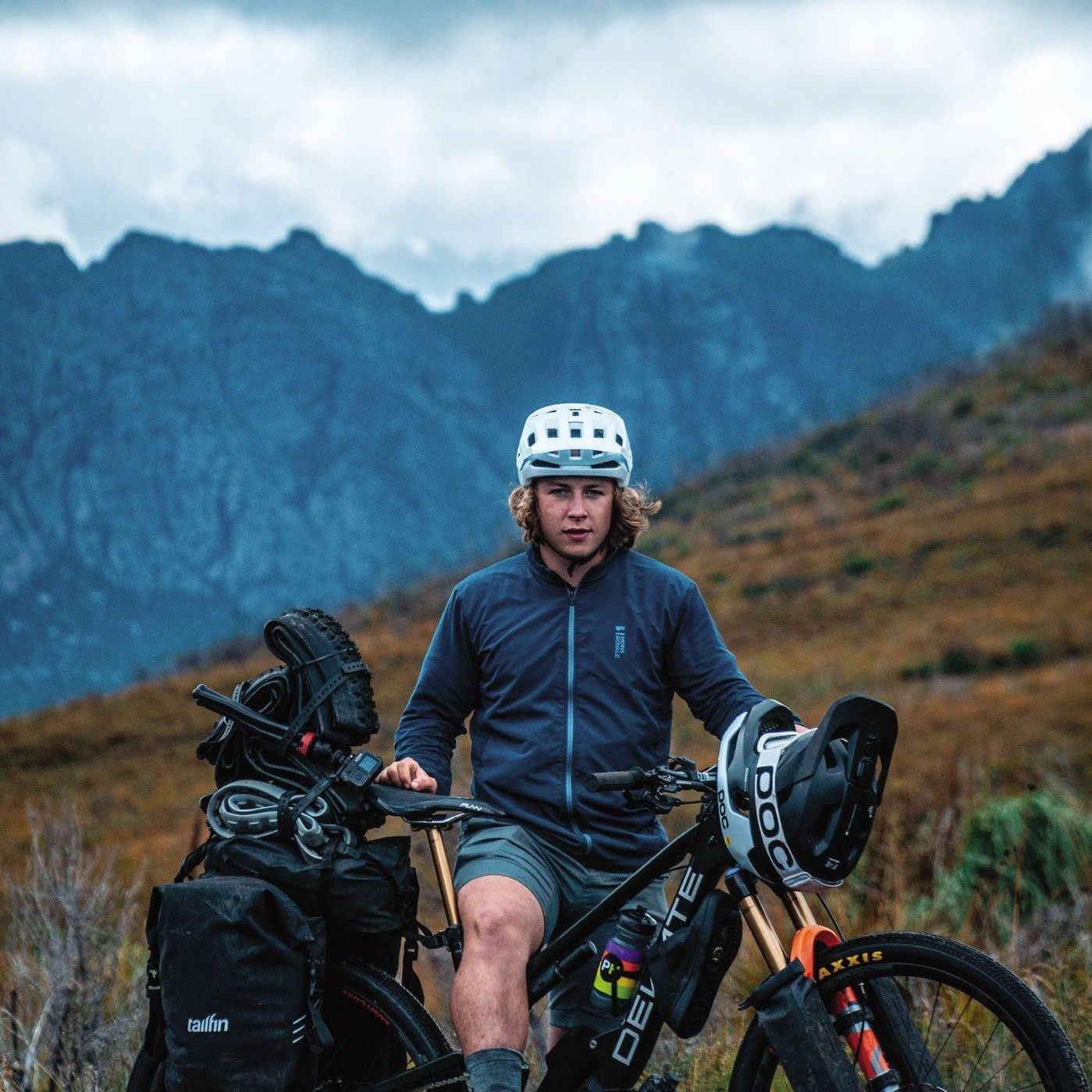
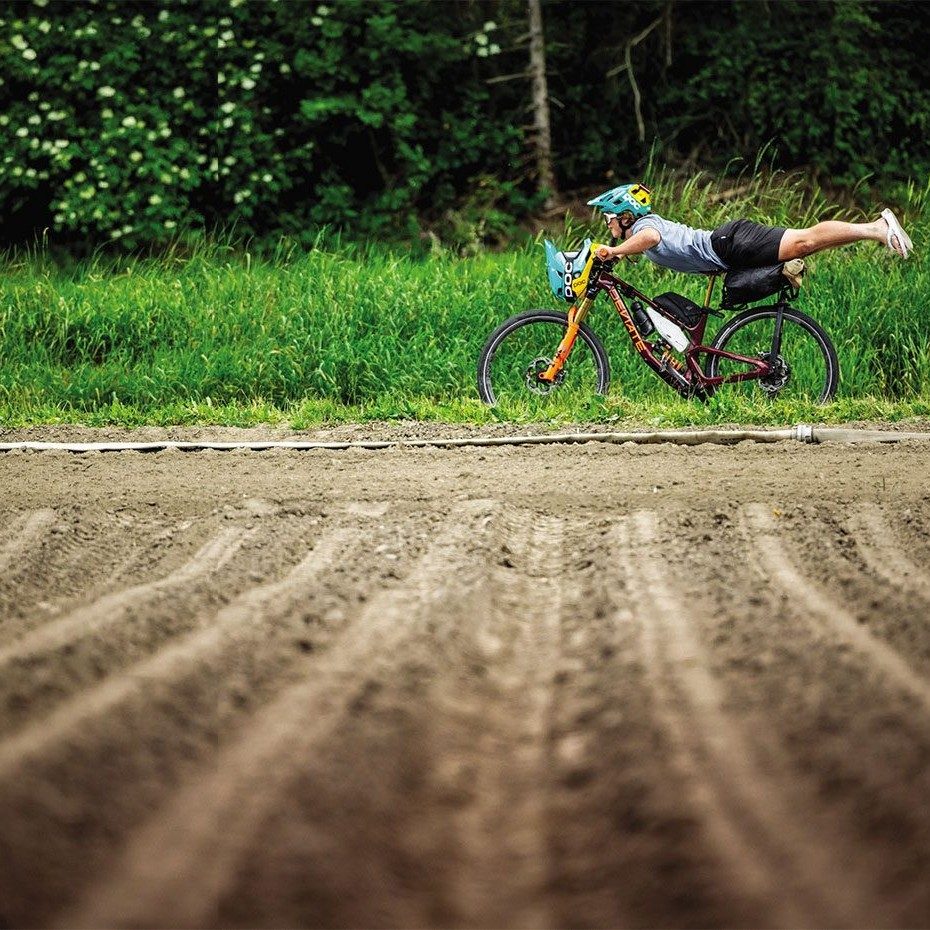
He’s tweaked his system as well, securing obvious sponsorship from Tailfin backpacking equipment. “The biggest change I’ve made is going to the Tailfin bikepacking setup. Honestly I’m so stoked on it. I was so sick of the bikepacking bags sagging and wagging around. The Tailfin has this cool pannier system so I can take so much, and it is so much more secure. I’m sponsored by them, but it is genuinely awesome stuff. I’d buy it even if I wasn’t sponsored by them.”
However, despite knowing what he was in for, securing some sponsorship and feeling more pre- pared his second year hasn’t been totally problem free. In Tasmania, he suffered the results of maybe packing too light – a few extra quick links would have solved an unfortunate broken chain affair. “At the Maydena race I snapped my chain. I had used my spare quicklink in the race, but the chain must have got a bit bent. It was 10pm and I was riding to the next event in Derby, and I stood up on the pedals and the chain snapped again – and I only had that one quicklink that I’d used earlier. I had to be at Derby the next day to sign in by 4pm, and I still had seven hours of pedalling to go. The nearest bike shop was 45km away, so I had to jog my 45kg bike 45km through the night to the bike shop – in bike shoes, of course.” A marathon in bike shoes, pushing a fully laden enduro bike? Of course.
“I GOT TO THE BIKE SHOP AND COLLAPSED AND SLEPT ON THE FRONT DOOR UNTIL THEY OPENED...”
He also entered the Highland 550 bikepacking event in Scotland, just to mix things up from the enduros he had been riding. Here, he encountered freezing weather that took its toll. “I got caught between two passes in a storm. I couldn’t set up a shelter, so I had to get to a bothy (a basic Scottish highland hut) otherwise that would be it. I was just pushing so hard against the wind to get to this hut, I ended up getting mild hypothermia and I was hallucinating. It was really quite bad.” In the end, he was on the bike for 50 hours non-stop, and with cold wet feet for a lot of it. “At that event I did some damage to my body, some days I still can’t feel my feet and my hands get pins and needles. Even now when I’m riding in the EWS, I can’t work out how hard I’m holding on to the bars, so I hold on too tight, which means I then get arm pump, then my hands blow off the bars and it all happens before I know it. So, yeah, this year I’ve been falling off a lot.” Between races he has been trying to manage the nerve damage in his hands by riding with his arms spread across the bars, so he is steering more by leaning on his forearms rather than holding with his hands. Even with Deviate offering him rides in their team van now, he is still intent on riding between each race. “I guess I just like to have a point of difference, so I’ll just keep riding this wave and see where it takes me.
I ask him if maybe he should take some time off and sort out his nerve damage which can have long lasting effects, but he doesn’t seem too bothered by it yet. And, for now, he’s still enjoying himself. There’s too much going on to worry about the challenges.
“I’m just always in the moment. There is always so much going on. It is tough, but the highs definitely outweigh the lows and there isn’t anything else I’d rather be doing right now.”

Erice van Leuven: From Wellington to the world
WORDS: LESTER PERRY
ILLUSTRATIONS: GAZ SULLIVAN
PHOTOGRAPHY: CALEB SMITH
Standing atop the podium at the Lenzerheide World Cup 2023 opener, I wonder if Erice looks out over the crowd and thinks to herself: “This is just the beginning”. Is she viewing the win as just a stepping stone towards the future, or maybe wondering; “What the heck just happened, and how did I get here?”
What began as a simple obsession on a balance bike, following her brothers around, grew into a viral video of 10-year-old Erice proving the best mountain bike is whatever bike is beneath you. She tore up Rotorua’s trails aboard her coaster-brake-equipped 16-inch wheeled kids’ bike. The video spread like wildfire, reaching such lofty heights as being included in the now defunct Dirt Magazine’s 2017 Advent Calendar. Day 14 features Erice and the caption: “this could be the raddest video we’ve seen all year.” Other notable outlets picked up the video and, overnight, Erice was on the radar of every talent scout in the industry, promptly receiving several sponsorship requests.
Commencal was early to the party and ended up being the lucky suitor. Welcoming her to their global roster, their new 20” bike suited her perfectly. A few more years of growth; roll on the launch of their 24” MTB and Erice played the lead role in their launch campaign video, again tearing up the trails to international acclaim.
Fast forward through a couple of pandem- ic-tainted years and Erice is finally old enough to race Junior UCI World Cups, and ready to step onto the bottom rung of the Junior category. In early 2023, she was announced as joining the COMMENCAL LES ORRES Team and it was game on for the season.
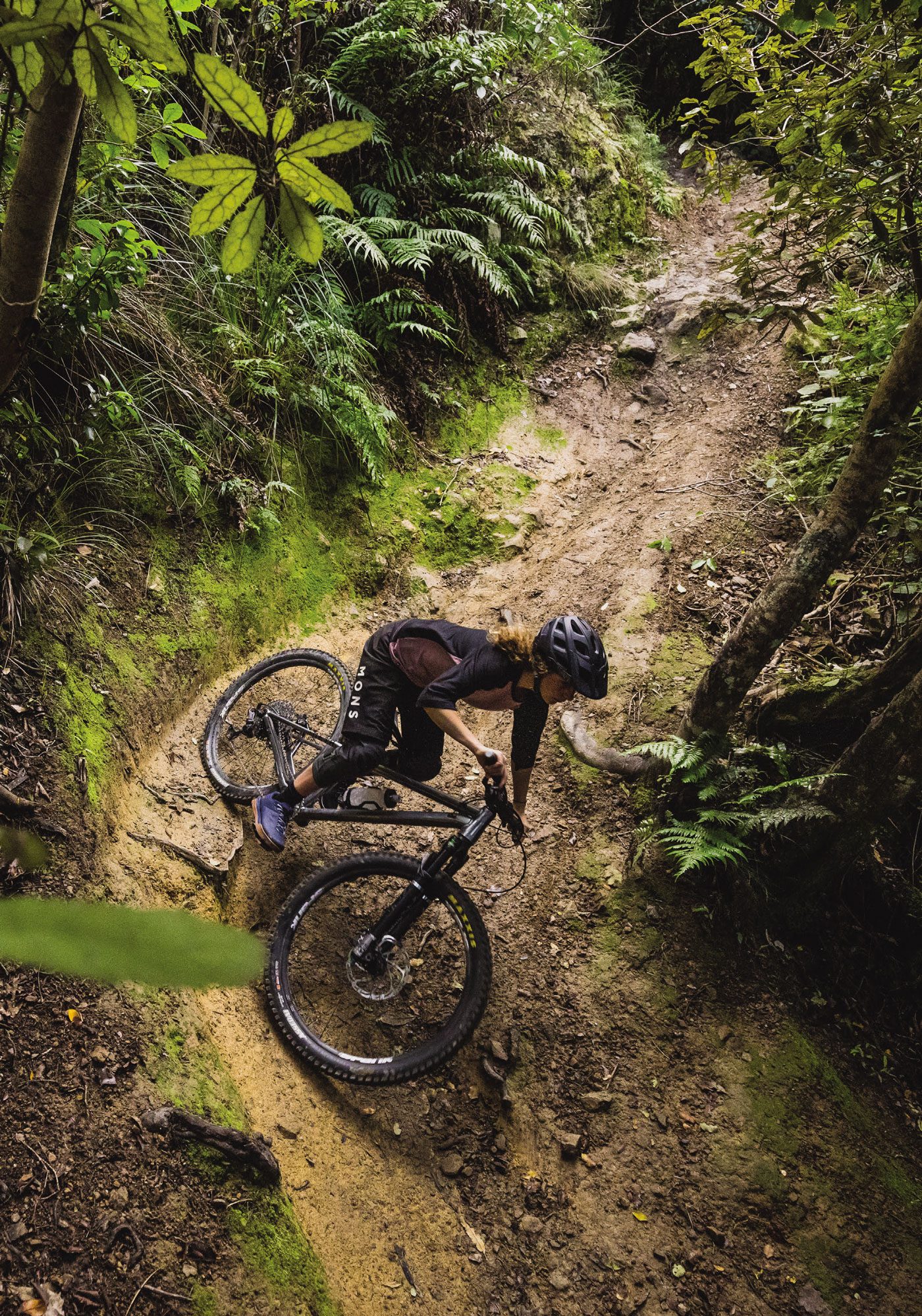
Under the wing of Cécile Ravanel, no one doubted Erice would soon grace a world-level podium, but it was a surprise for it to come so soon. Erice’s 2023 season kicked off with a pair of EDR (Enduro) World Series rounds in Tasmania. First up was Maydena, where perfect conditions and varied terrain greeted riders. A tight battle ensued between Erice and Canada’s Emmy Lan. After Erice led through race day, Emmy stamped her authority on the last stage, bumping Erice into second place. Both riders were well over a minute ahead of Elly Hoskin, who rounded out the podium in third. Erice left Maydena surprised and stoked; she was at the EDR rounds as a test to gauge where she was at and was using the race as some training for the upcoming DH season.
“Erice’s bike skills, and her ability to just ride fast, are pretty impressive. The tracks don’t scare or worry her, and she just gets on with it. She’s not intimidated by much, it seems. So maybe with age that will change, but right now she’s just super impressive on gnarly tracks with gnarly features and just super confident on the jumps and everything.
“I THINK HER BIKE SKILLS AND ABILITY TO JUST SEE THINGS AND RIDE THEM AT THE SPEED THAT SHE WANTS IS PRETTY CRAZY.”
– CAMERON COLE, FORMER WORLD JUNIOR DH CHAMP AND GT FACTORY RACING TEAM MANAGER.
I guess it’s a bike skills thing, but maybe she’s also just riding the bike to get the best out of it. I think bikes have changed quite a lot and you can trust them so much more nowadays. So maybe there’s something in that as well.” – Cameron Cole, Former World Junior DH Champ and GT Factory Racing team manager.
Round 2 of the EDR took in the now-famous Derby trails, some old, some new. Practice day was wet, and by all accounts just getting through the course that day was a task in itself. Race day was hot and humid, and the trails were still wet from the previous day’s rain.
“On race day I was thinking, I’m actually kinda up there so why not go for it!” explains Erice. After putting in a huge effort across the first five stages, she experienced painful leg cramps on the liaison to stage 6, which saw her stop multiple times to stretch out.
“I was a bit scared then that I wouldn’t be able to finish the race, because of the pain.” Fortunately, Erice pushed on, continuing her domination, topping every stage and obliterating her U21 competition. Her overall time would have placed her 16th in the Pro Women’s class!
Finishing her Tassie time on a high, she set her sights on the main goal of her season: the World Cup Downhill series. Six weeks after her win in Derby, she lined up at the opening round of the French DH Series; another race, another win! With momentum building over the last few races, she was back in action a month later – this time at the World Cup season opener in Lenzerheide, Switzerland.
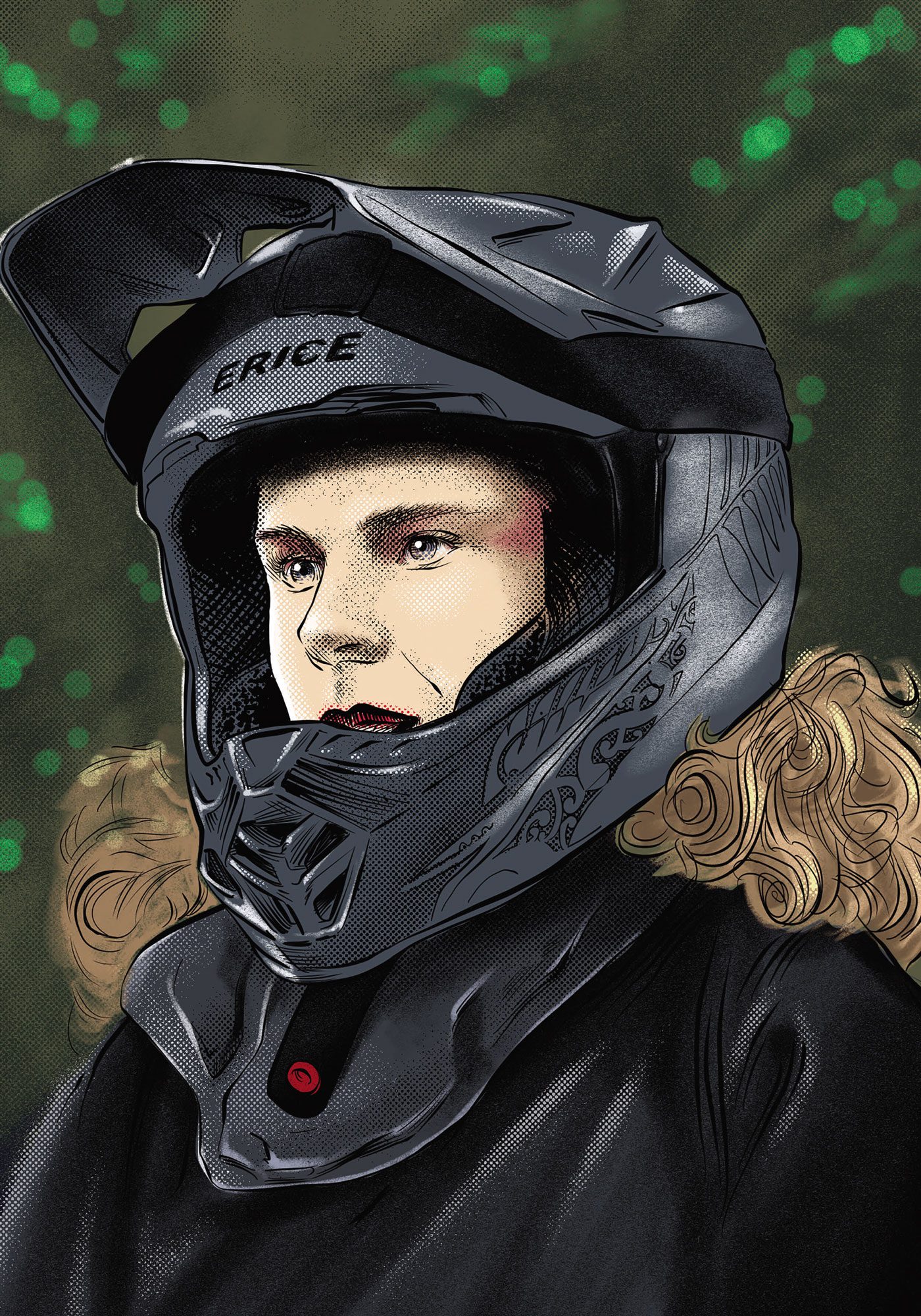
“The track in Lenzerheide was so sick, the sections just linked up real good,” says Erice. “It’s obviously a difficult track but it allows you to push quite hard for speed, which is cool. The top section on the off-camber grass and then onto the famous off-camber corner were the most difficult for me, it was still fun though. I just enjoyed the track heaps and that’s when you ride your best.”
For the first time in history, the Junior races were broadcast live and free on YouTube, allowing friends, family and fans from across the world to see the future stars of the sport laying the foundations for their careers. Watching the action unfold over the week, clips of Erice practising surfaced. What we saw was a confident, solid riding style which piqued onlookers’ interest and had com- mentators picking her as one to watch.
A crash in qualifying put her in second place. But, harnessing her nerves, she headed for the start hut to take on her final run, confident her pace was there. Minimising outside distractions, she visualised the track, focussed on the present and task at hand, rolled forward and broke the timing beam.
“As I was injured at Lenzerheide, I spent a fair chunk of time trackside and that included watching the always entertaining junior practice. I’d followed Erice online but hadn’t really seen or met her in real life, and from run one in Lenzerheide it was fairly obvious that she had something special going on.
NZ DH with Erice at the helm is in safe hands both on and off the track. Her skills are something else, but so is her infectious stoke for both the riding and the other girls she was racing against. Big grins and big wins seem to be the ticket here.” – Eddie Masters, Pivot Factory Racing pro.
Five sectors made up the track. Erice started slow, building across the first three splits, then demolished the final two to put her just over four seconds in the green. She’d just secured her first junior World Cup win!
“When I won my first World Cup, the feeling was insane!” explains Erice. “I was totally over the moon. Having my dad and one of my brothers there, and some family friends, made it extra special! Another highlight was getting to see family after two and a half months. It’s so, so cool being over in Europe racing, but it is hard not seeing the fam for a while.”
Riding the high of her win, everything was looking positive as the World Cup circus headed to Leogang, Austria. A win in the qualifier put her as the fastest seed coming into the finals.
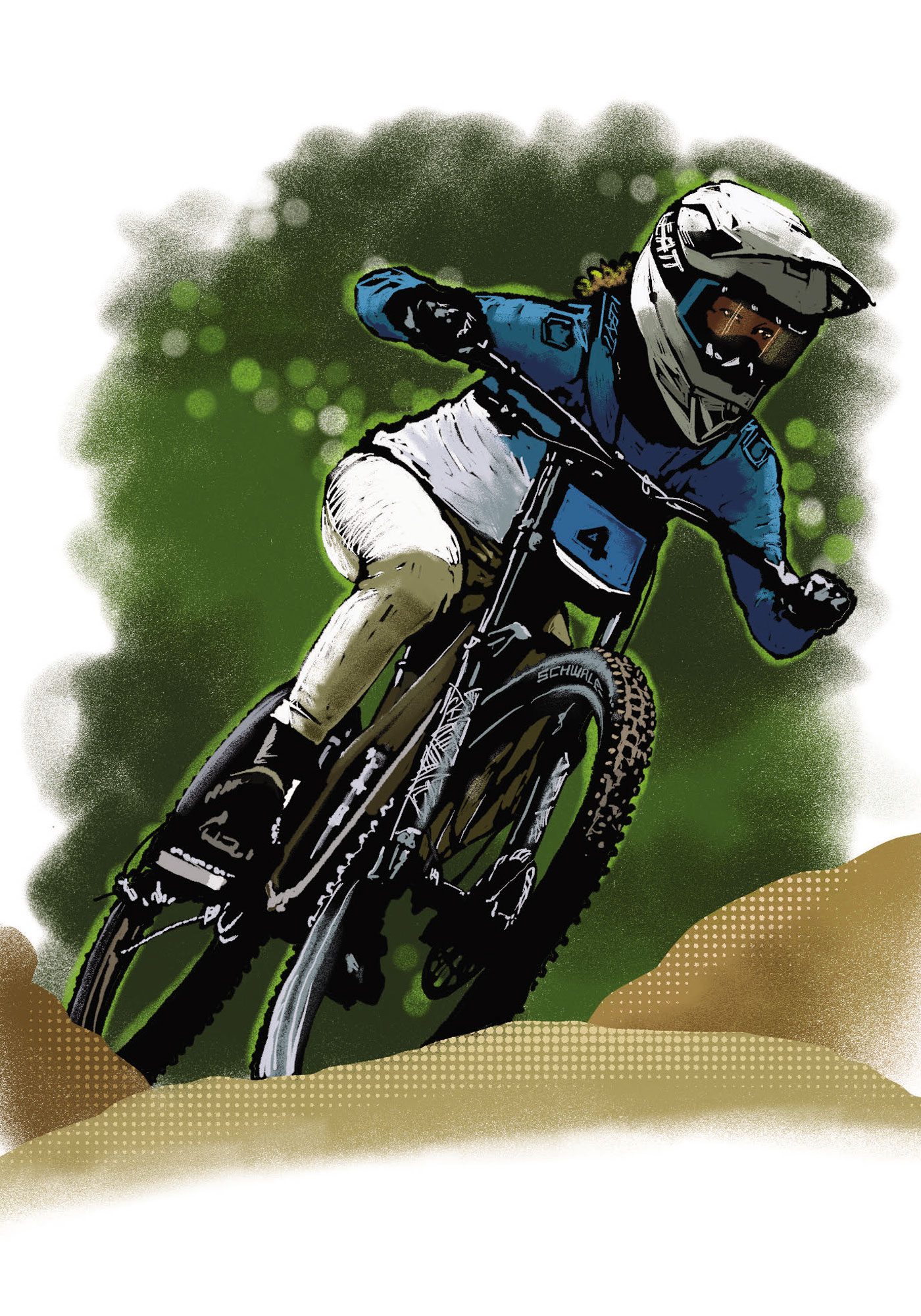
“In Leogang, I was feeling really mentally strong in my warmup at the top and on the rollers, but once I got into the start gate, the nerves hit me and I lost that composure, and that obviously didn’t work out great for me.”
Only a couple of corners into the track, Erice took a huge crash – over the bars, down a bank and onto a gravel road. A dead-stop hit that even the hardiest of rugby players wouldn’t have bounced up from.
“It was the scariest crash I’ve ever had,” recalls Erice. “I just fully body-slammed the ground and didn’t roll or anything to break my fall. Just hit it and stopped. I winded the crap out of myself so that was pretty scary because I couldn’t breathe for a bit. I can’t believe that I got away with two sore wrists and a sore torso! Nothing was broken, but I couldn’t finish the race. Looking on the positive side though, I’ve learned a lot of lessons. So, I’ll take that.”
A short two-week break between Leogang and the following round in Val Di Sole left minimal time to get her body back in shape after her crash; no downhill riding and just light road riding and gym work saw Erice nervous coming into round three. Getting back on the bike and straight into one of the most challenging tracks on the cir- cuit took all the resilience and determination she could muster.
Fellow Kiwi, Sacha Earnest, was also returning from injury at Val Di Sole, ready to take on the Junior Women’s field. Qualifying saw tight time splits between Erice and Sacha, the latter taking the number one points on the day. In finals, the cards stacked the same way, Sacha taking her first World Cup win, and Erice in second. Erice left the venue happy with her performance, and proud of how she’d bounced back after the crash in Leogang. Second was almost as good as a win!
Next up for the young star is the Downhill World Championships in Fort William, Scotland. But first, some training at team sponsor Les Orres’ bike park and a test event in Loudenvielle in the lead-up to the World Cup event there at the start of September. Erice’s calendar is chocka!
The World Cup continues throughout the year, culminating with the final round in Mont-Sainte-Anne, Canada, in early October. We’ll be watching Erice and compatriot Sacha closely as the rounds tick off. Fingers crossed we’ll have two Kiwis atop the overall World Cup podium come the end of the season – which order they’ll be in is anyone’s guess.

Out of Office
Words: Lester Perry
Photography: Cameron Mackenzie
Taking a line down the centre of the upper south, I’m gliding over the Nelson lakes, checking out the snowcapped mountains around Lake Rotoiti, spotting trails in the surrounds and beginning to wonder what conditions in Christchurch will be like. Continuing south in clear skies, I’m live-routing trails through the hills, debating to myself if humans have even set foot on those peaks, let alone a knobbly tyre. Oh look, a high alpine lake.
Soon the pilot announces we’re about to start our descent into Christchurch, and within minutes we go from a ‘barely a cloud in the sky’ scenario to a “heck, we’re fully socked in the cloud! How the heck do the pilots see where they’re going?!” situation, with all faith put in the altimeter.
What were mental images of fanging down dusty trails, basking under crisp blue skies are now nervous butterflies in the pit of my stomach – was this a mistake? The unknown almost consumes me as I nibble the last of my bite-sized cookie and sip the dregs of my inflight coffee. Conditions now appear to be somewhat unpredictable.
“I’ve got 48 hours off from the world, man. I’m gonna blow steam out my head like a screaming kettle, I’m gonna talk cod sh*t to strangers all night, I’m gonna lose the plot on the dancefloor. The free radicals inside me are freakin’, man!” Jip, Human Traffic, 1999.
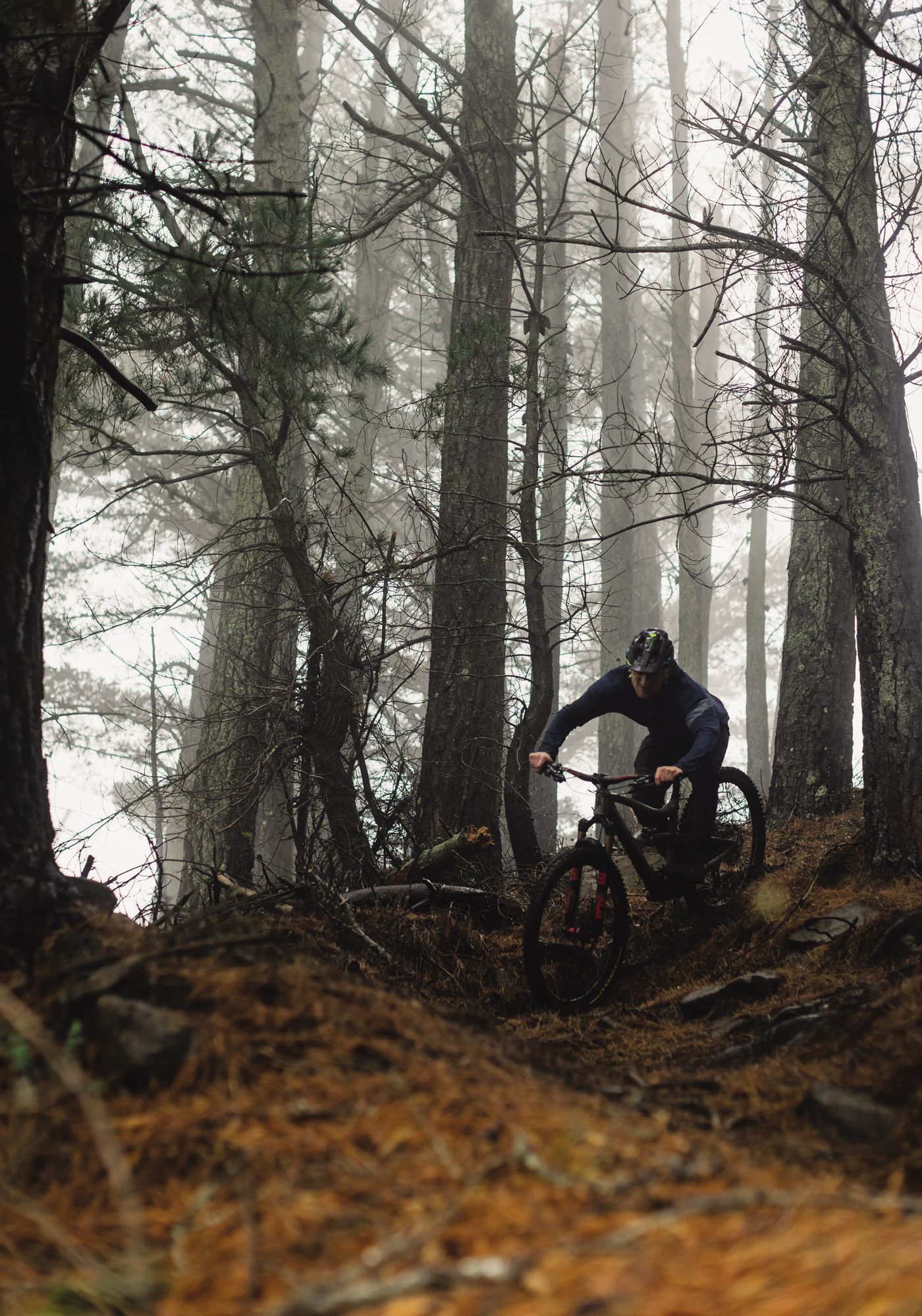
My trip south won’t be as hedonistic as the lads from Human Traffic would have had, but Jip’s comment portrays the vibe perfectly, as I await my arrival into Christchurch. I’m headed south for a bit of a pre-season ride camp – although maybe it’s post-season, seeing as it’s closer to the end of summer than the start. An opportunity to try some new things, test some new gear (see our Pirelli tyre review in this issue), take a quick break from the daily grind and hang out with mates on bikes – that’s what it’s all about, isn’t it? I’m here for a good time, not a long time. It’s not Whistler, but time away from the daily grind is what I need.
When it comes to getting the right weather, trip planning in winter is always a roll of the dice. At the end of the day you just have to commit and deal with the fallout, should you have to. In this case, we’re dealing with low cloud, drizzle and temperatures lower than ideal for this central North Islander – although surely nothing a Christchurch local doesn’t deal with on the regular. And anyway, there’s no such thing as bad weather, just bad gear – right?
I’ve been riding and racing mountain bikes for almost 30 years – yes, I’m that old – and the bikes have changed and evolved as much as my life has in that time. I’ve never been one for testing or trying anything too different from the norm; my bikes sit pretty much stock as they come out of the box. After a couple of seasons of feeling a bit stale on the bike, it was time to mix things up and try some new stuff. After all, if you keep doing the same thing you get the same result. Even if you’re not racing, we all want to be the best we can be on our bikes. Even the act of trying new things, finding out they’re not for you, and reverting back to the status quo can help elevate your game; a renewed sense of freshness, or the confirmation that what you’ve been doing is in fact the right thing to do.
After a quick bike build and mounting up the fresh Pirelli Scorpion aboard my, as yet unridden, mullet setup (27.5 rear, 29” front), it was off to Christchurch Park for some laps and to get acquainted with the trails. Low cloud clung to the houses heading up Dyers Pass road, and my stomach sank right into my Merino socks; conditions were not ideal. Buck up buttercup, there’s work to be done and the opportunity to get away to the Mainland and ride doesn’t come frequently.
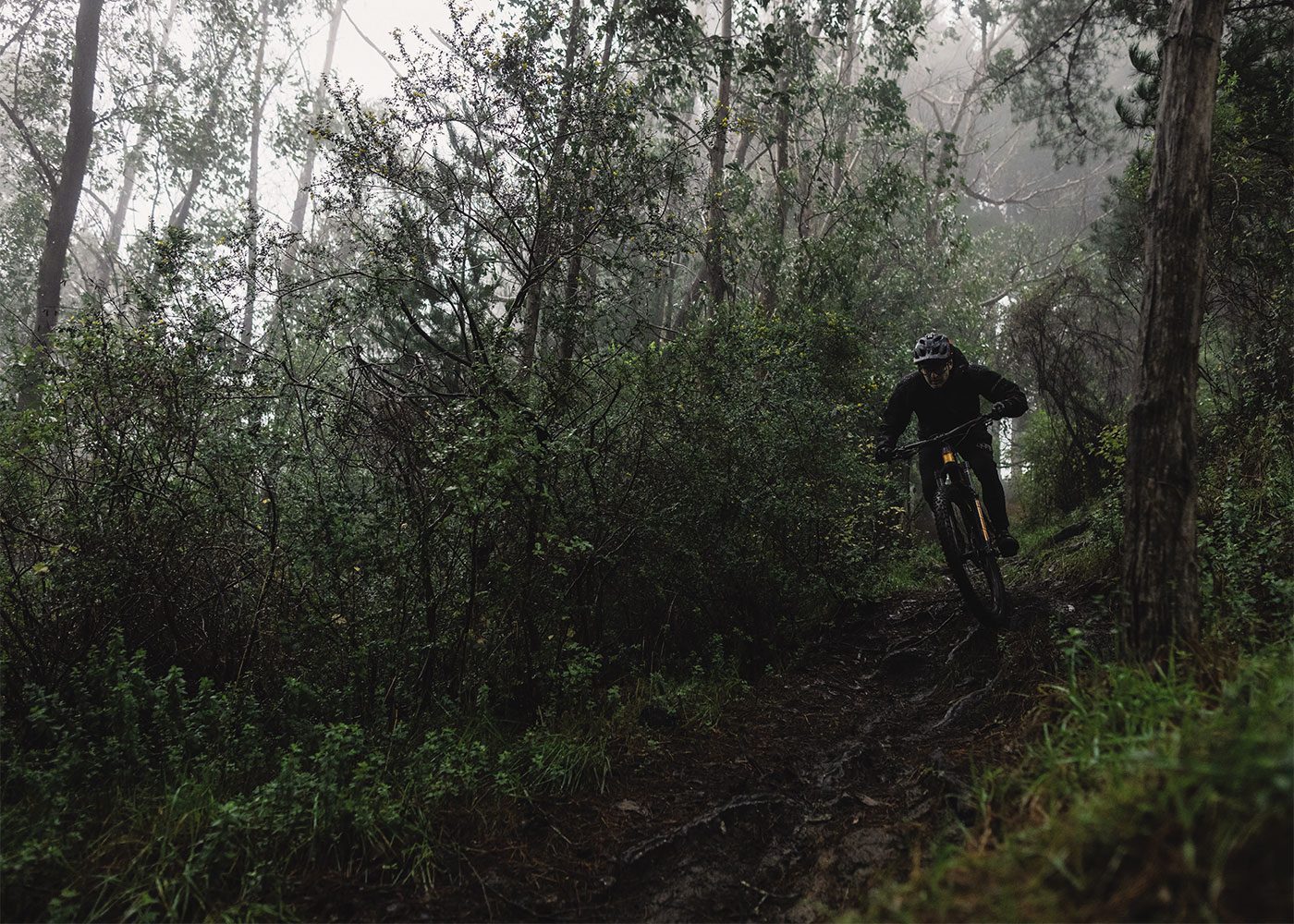
I’d met up with local trail hustler, Nathan Petrie, to show me around and get a local’s lay of the land. I had limited hours on the ground so there wasn’t time for the admin needed to figure out where I was heading, or waste time on trails that weren’t what I was chasing.
We did a lap down ‘The GC’ DH track to throw the tyres down precisely what they’re designed for – it’s a good mix of rocks, steeps, plus some speed and even bike-park style sections. Right from the get go we were on slippery hardpack – not conditions for inferior tyres! The fresh Pirelli’s hooked up well and gave us the confidence to push on down the trail. A couple more laps, then the sun dipped, the shadows grew long and we called it a day.
A catch up with Christchurch-based family over dinner, solving the problems of the world, followed by a night well slept at the Novotel, and I was set for day two on the trails. This would be another opportunity to put the Pirelli’s to use on slightly different terrain than the previous day. A Supreme breakfast, a long black, and an oat flat white – yes, a trip like this tends to revolve around food – we were hyped for the day.
I’ve not done a tonne of riding around Victoria Park, but every time I visit I’m astounded by just how many trails are crammed onto that hill – there always seems to be something new. Maybe it’s the out-of-towner in me seeing everything anew?
We took a couple of laps down who knows what trails – I was merely following the wheel in front, trying to keep it upright as we slithered through multiple rock-strewn chutes, caught by the trustworthy berms at the bottom. Although the conditions weren’t ideal, sharing the experience with mates made it all worthwhile regardless, and the trails, although wet, were plenty manageable and safe provided we kept a lid on our speed. The change from my usual mid-North Island conditions was rewarding and reminded me why trips like this help keep things fresh and exciting.
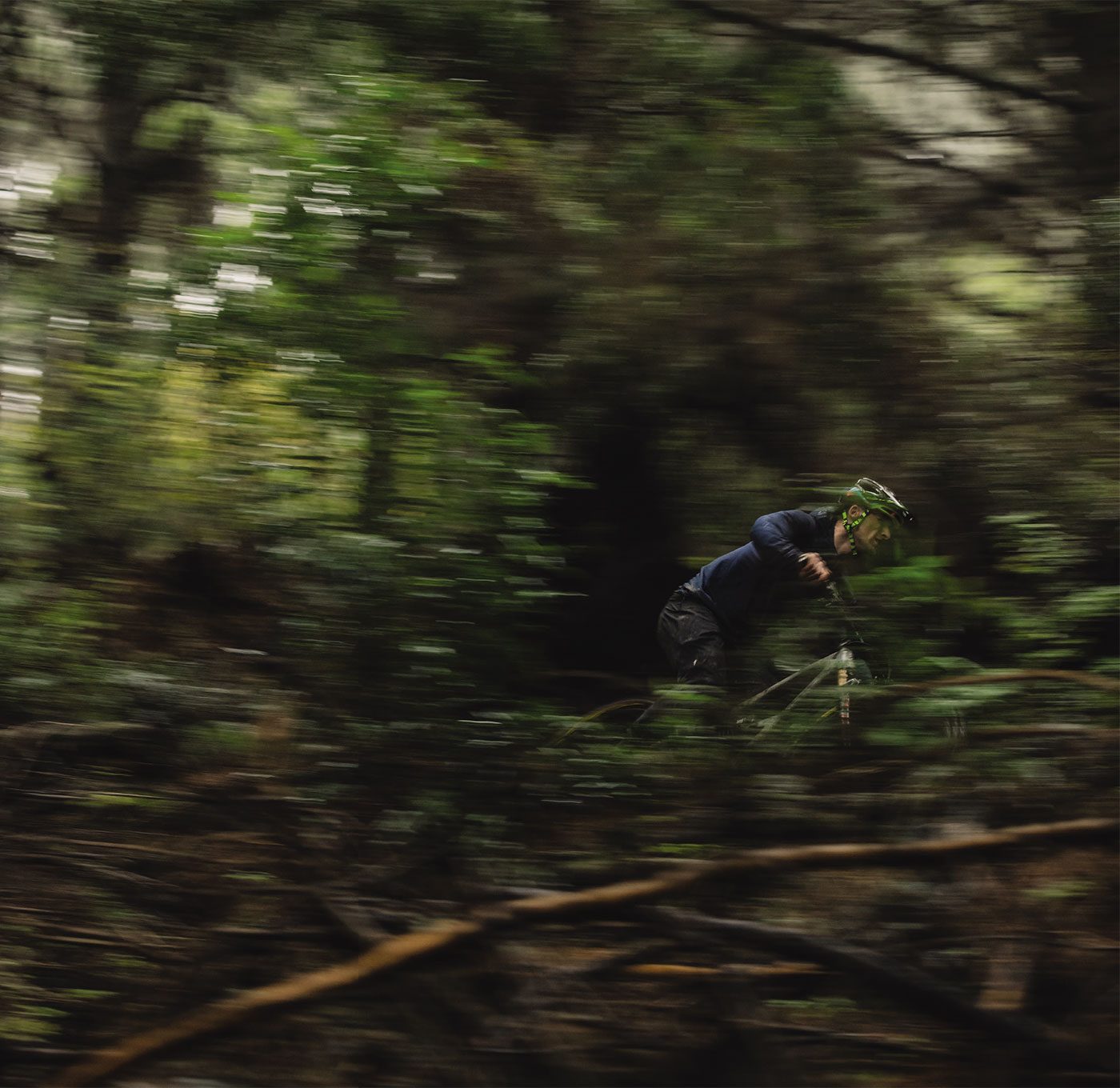
A few tweaks to my setup, a few extra PSI here, a few less there – things were looking up, until we realised we’d not had lunch and the day was drawing on. A detour over to the Sign of the Kiwi Cafe had us nervously tiptoeing inside, attempting not to leave a wet, muddy trail on the floor behind us. Our hosts weren’t concerned, beckoning us to take a seat by the heater, but we knew our place so headed outside to the deck. After devouring coffee, cake and a piping hot sausage roll the diameter of my arm, we headed over to the crowd favourite, Gnarly Nun.
A few post lunch laps through the upper rock slabs gave me the opportunity to get a feel for my new setup on unpredictable but solid terrain. Luckily, after the tweaks made to my setup – and the Pirelli’s rubber compound – everything felt surefooted and Nathan and I confidently rode a few laps through the sections – unscathed regardless of the dismal conditions.
An out-of-towner visiting gives the perfect excuse to show off your favourite spots to eat, and each time I’ve visited Christchurch on a riding trip I’ve been treated to some of the best IYKYK spots. This time around, Cassells Brewery was the dinner spot. Our small crew dined like kings. I took on the chicken burger (highly recommend), while sampling a freshly brewed Tropicana Hazy IPA… old habits die hard. I must have missed a trick though – the rest of the team went with a perfect winter option in the Double Cream Milk Stout, which seemed like a meal in itself!
Before the sun was up, my trip was over. An airport coffee and buttery croissant ease the pain of heading back to normality; knowing I’d had a good 48 hours living the dream. Just a few hours later I was sat back at the desk of my day job, reliving the lines ridden over the previous couple of days, and excited to put some of my new found freshness to work on local trails.
Christchurch was a good time. I didn’t talk “cod shit to strangers” nor “lose the plot on the dance floor”, but the Free Radicals in me were “freakin” for sure.
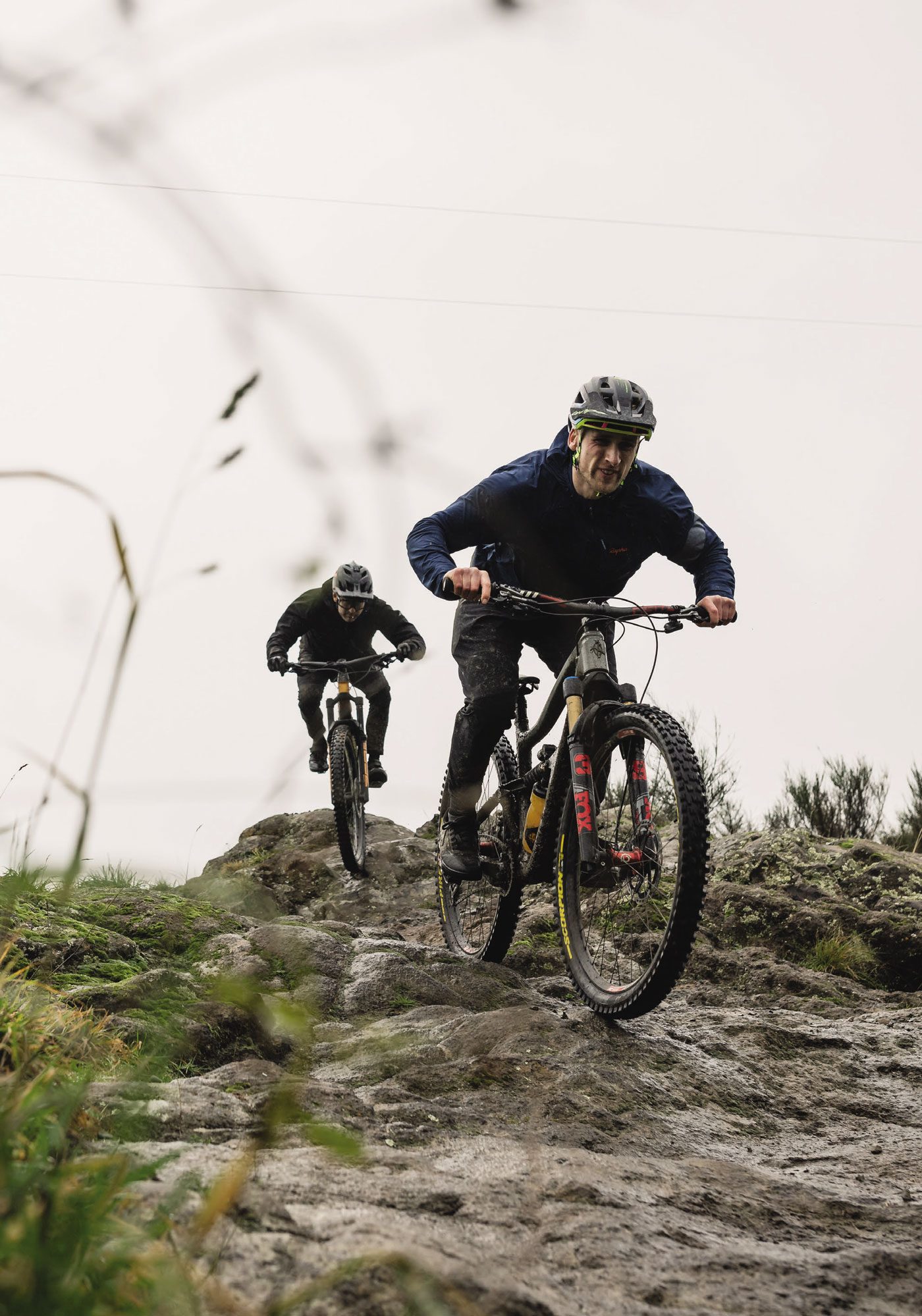

Cairns by eBike: A cranking good time
Words: Alex Stevens
Photography: Cameron Mackenzie
On site at Crankworx Cairns, back in May, photographer and writer Cam Mackenzie was keen to snatch a few hours away from work and enjoy riding one of his favourite mountain biking destinations. With good mate and pro rider, Sam Blenkinsop, also in Cairns to compete, it seemed like the perfect opportunity to introduce him to another good friend – local and pro rider, Berend Boer – to showcase what Cairns had to offer. Cam tells the story:
Over the years, I’ve been fortunate enough to travel to Cairns, for work, almost yearly since the Downhill World Champs was hosted there in 2017. Off the back of that trip, I fell in love with the area, its diverse trails, red dirt and grandeur, but was also fortunate to meet my now-close friend, Berend Boer. In the years since, I’ve been back and forth for various different tourism projects, showcasing mountain biking in the far north in what I hope has been an engaging and relatable kind of way.
With Crankworx and major events coming back to Tropical North Queensland, and Cairns in par- ticular, it dawned on me that we come and go so quickly within these regions, and often we just don’t get the time to ride and enjoy all the fun trails I’ve come to know through the local riders over the years. So, this year, going back to Cairns for Crankworx, I saw a really cool opportunity to introduce two great mates and go for a really awesome explore through the rainforest, show- casing Cairns to Blenki. Although he was fizzing to compete – and had a hectic race schedule, as he pointed out – what’s the point of coming to these places if you don’t get to see them for what they are?
Blenki and I were both travelling from New Zealand and knew we would have quite a limited amount of time on the ground. With an already busy event schedule subject to inevitable changes due to the weather in the tropics, we had quite a small window of opportunity to get off site and into the jungle. Luckily, Blenki had his new Bosch- powered Crestline, which he was able to bring with him, and Berend and I were able to pinch a couple of Mondraker Crafty Rs, also sporting the latest smart system kit from Bosch, from the guys at Mondraker Australia. Without the eBikes, we wouldn’t have been able to check out even half the spots we did, nor would we have been able to maximise our short windows of opportunity.
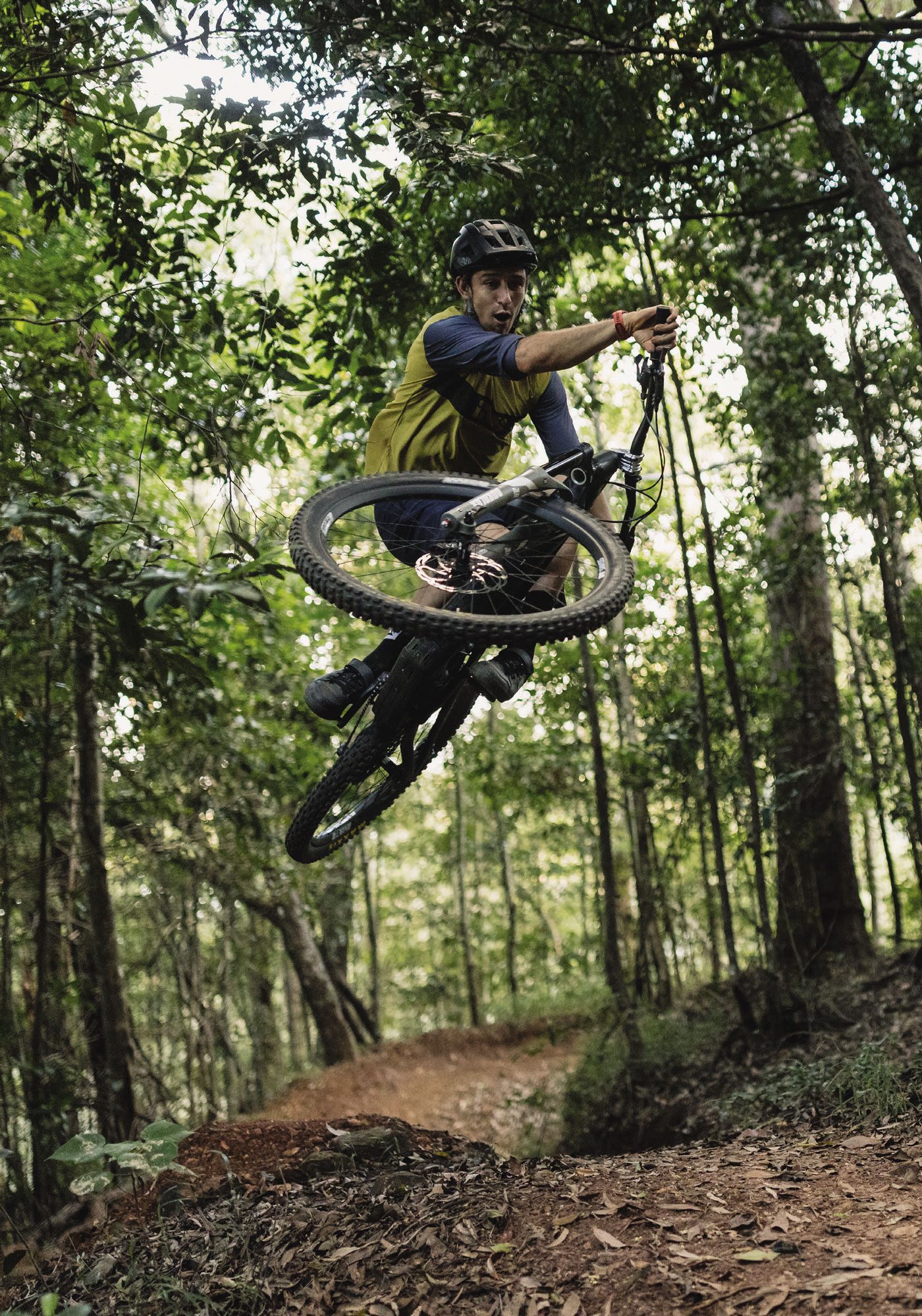
Mountain biking in Cairns goes back several decades, when influential and pioneering locals like Glen Jacobs first recognised its potential, in the 1980s. You can tie back points in time to key developments of mountain biking in the region, with the Cairns Mountain Bike Club hosting its first nationals in the early 1990s, and World Cup events following soon afterwards in 1994 and 1995, then the UCI World Champs in 1996. A fuse had been lit and, since then, mountain biking has continued to grow in the region.
Whether it was dedicated locals looking to build more trails for themselves to ride, or trying to bolster the region’s offerings, these different trails and parks have combined to create a strong, diverse network that stretches all the way along the coast and deep into the tablelands.
Hidden in the hills behind the James Cook University campus, 20 minutes north of the city, Smithfield Mountain Bike Park was where the first international race was held and has now become the epicentre for mountain biking in Cairns. With Smithfield also being the venue for Crankworx Cairns, this seemed like the perfect place to begin our exploration.
The terrain in Smithfield is really steep in spots. You’ve got lower undulating grassland trails but also stuff that rises high and steep into the jungle canopy, which the eBikes were perfect for. The Nationals downhill track, for example, is so steep that the ride up is almost inaccessible on a traditional bike. On an eBike though, you can just blast up there like you would in a shuttle vehicle – but self-propelled. The trail is one of the steeper, longer, rocky trails in the park, which was exactly the kind of thing we were looking to ride and showcase. It’s a real staple of Cairns, and feeds into other parts of the park really well, linking a brake-burner descent into fast, flowy turns and lofty jumps like those found on the newly built trail, Bowhunters.
With a few laps under our belts, that soon wrapped up a quick taster for what Cairns had to offer on the first day. Had time allowed, we would also have ventured out to the Atherton Tablelands. Only an hour or so drive from Cairns and sitting around 1000m above sea level, Atherton is a beautiful, quaint country town, full of small-town pubs and really quiet, with a less humid climate. With Atherton sitting much higher than Cairns – and to some degree, sitting in the clouds – the bush cover is made up more of eucalyptus and gum than the dense tropical rainforest found lower down. The dirt is similar, a bit more rocky and gravelly, but the trails are built in such a way that they are quite different to those down on the coast in Cairns.
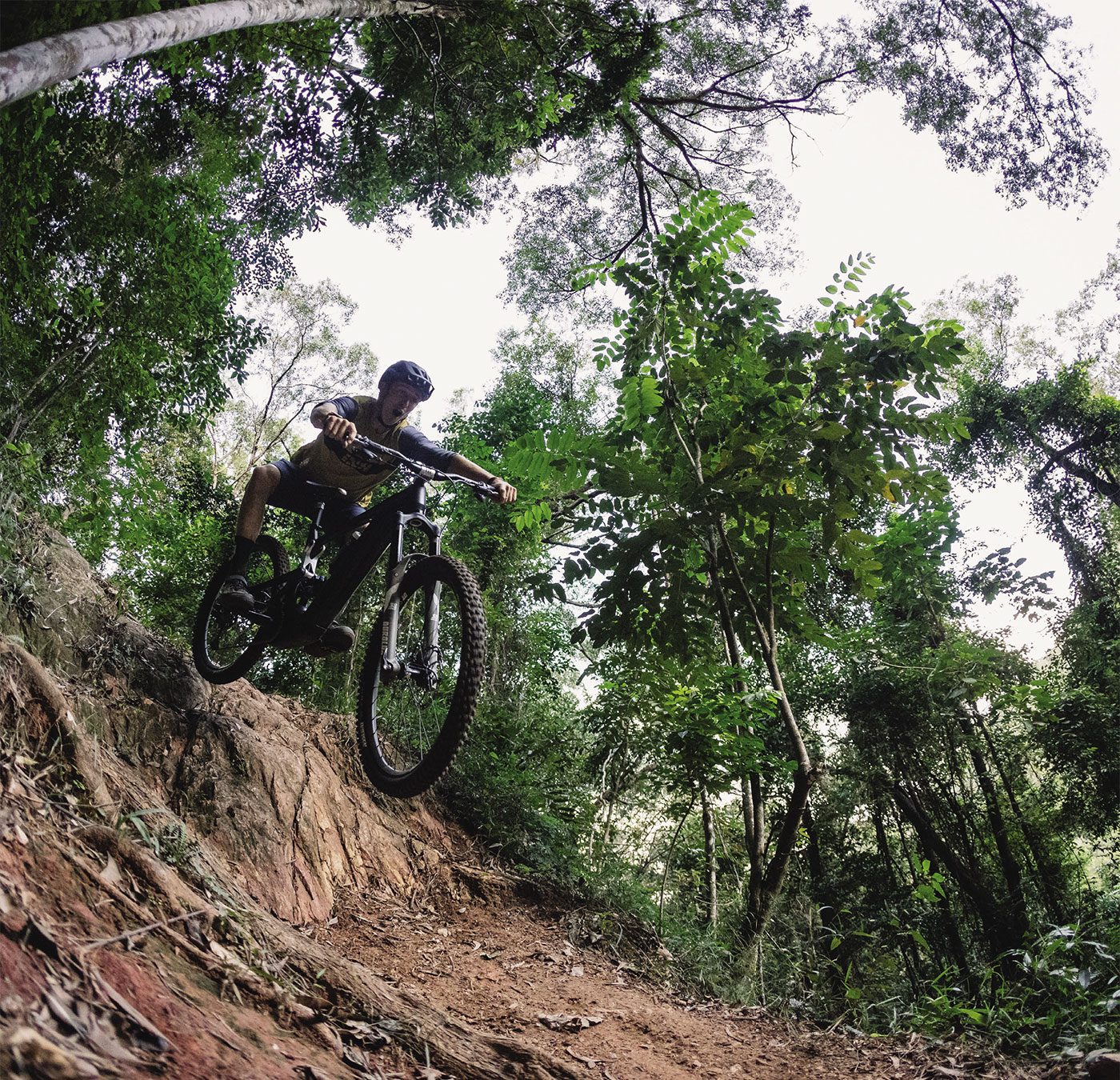
If you’re visiting the area and have a bit of time, I’d definitely recommend checking it out, especially on an eBike. The bike trails are all on one face, out the back of the township, with some big grunty climbs and lots of short descents running off everywhere – perfect for repeating cool little loops on an eBike. On the way home, be sure to stop off at Lake Tinaroo for a cool down before heading back into the hustle and bustle of Cairns.
The next evening, we decided to boost out after the event finished and make the most of the hour and a half of daylight we had remaining. Berend really wanted to show us some of the lesser-known trails in an area up near Copperlode Dam, to the west of the city. Just 15km away from Smithfield, this area offers a distinctly different riding experience, as well as climate. Sitting higher up into the bigger mountains, there are reservoirs and dams, and the terrain is quite raw and rugged. It’s definitely somewhere you need to go with a local, and we were stoked to have Berend guiding us in this unique area, particularly with the weather turning stormy and the light all but non-existent. It was definitely too dark to shoot any photos, so this one will just have to stay etched in our memories!
It turned into a pretty hilarious scene: the three of us all of varying skill level from pro (Blenki and Berend) to not-pro (me), trying to keep up with each other riding some of the steepest trails in Cairns, in near on dark. Add in the fact that we were also in one of the most dangerous parts of Australia, where if you fall you’ll not only rip your clothes to shreds, you’ll also be waiting a while for a rescue, or a snake could come across the trail at any moment. Somehow, this all just added to the hilarity of the situation.
Cairns is really unique in its topography; you have these crazy, steep, rugged hills clad in UNESCO World Heritage rainforest rising out from the sea. It’s an insane juxtaposition between one natural wonder of the world, the Great Barrier Reef, sitting right next to the Daintree rainforest which extends across the coastline as far as the eye can see. Our mission for the next morning was to head out early to experience the stunning views across the city, and the reef at sunrise, before blasting some fun trails back down to a great coffee, whilst beating the heat and getting a run in before another day of events.

We opted to head up to Kuranda, one of the original tracks in Cairns, which runs off the side of the Kuranda Range Road and through to the famous Kuranda village and railway, sitting deep in the ranges behind the city. We had the option of either riding up on the eBikes quickly, or shuttling up like you would on a traditional bike, opting for the latter due to the early start. The main start point for the Kuranda trails is a beautiful lookout and, from there, we had the pick of some of Cairns’ oldest trails or the option to ride the newer community-built trails that Berend himself works on, rides and loves. We opted for the tried and true option that morning, showing Blenki what Cairns is so well known for in the downhill space: the Kuranda Downhill Trail.
No matter where you go and explore in Cairns, you can find the most incredibly diverse ecosystems within the forest, changing from one location to the next. That morning, up on Kuranda, we got super lucky: we were ripping along and, on our way out at the bottom, we stumbled upon a grove of butterflies which Berend, who was leading us out, disturbed. As Blenki and I arrived, Berend was screaming in excitement at the scene that lay before us. It was like riding into a butterfly sanctuary.
There were thousands of butterflies floating in the air underneath the canopy. You just don’t get stuff like that anywhere else in the world. By the time we’d gotten to the bottom, we were giddy. We’d just ridden this super fun trail with beautiful, big, flowing berms into steep rooty goodness – whatever you wanted it was there; flow, steep stuff – then, all of a sudden, you come across these butterflies. All before eight in the morning.
The wildlife is definitely one of the highlights of riding in this beautiful, unique area. As well as the butterflies on our early morning ride we saw plenty of other little critters out on the trails. It’s nice to know that there are also safe swimming spots where you can cool down without the fear of crocodiles, jellyfish, snakes, spiders or whatever else might be lurking. Luckily, Cairns has lots of these little hidden gems. Wherever you ride, you’re never more than ten minutes from neat little waterfalls, beautiful running streams or watering holes right in the middle of nowhere, amidst the incredible ancient rainforest.
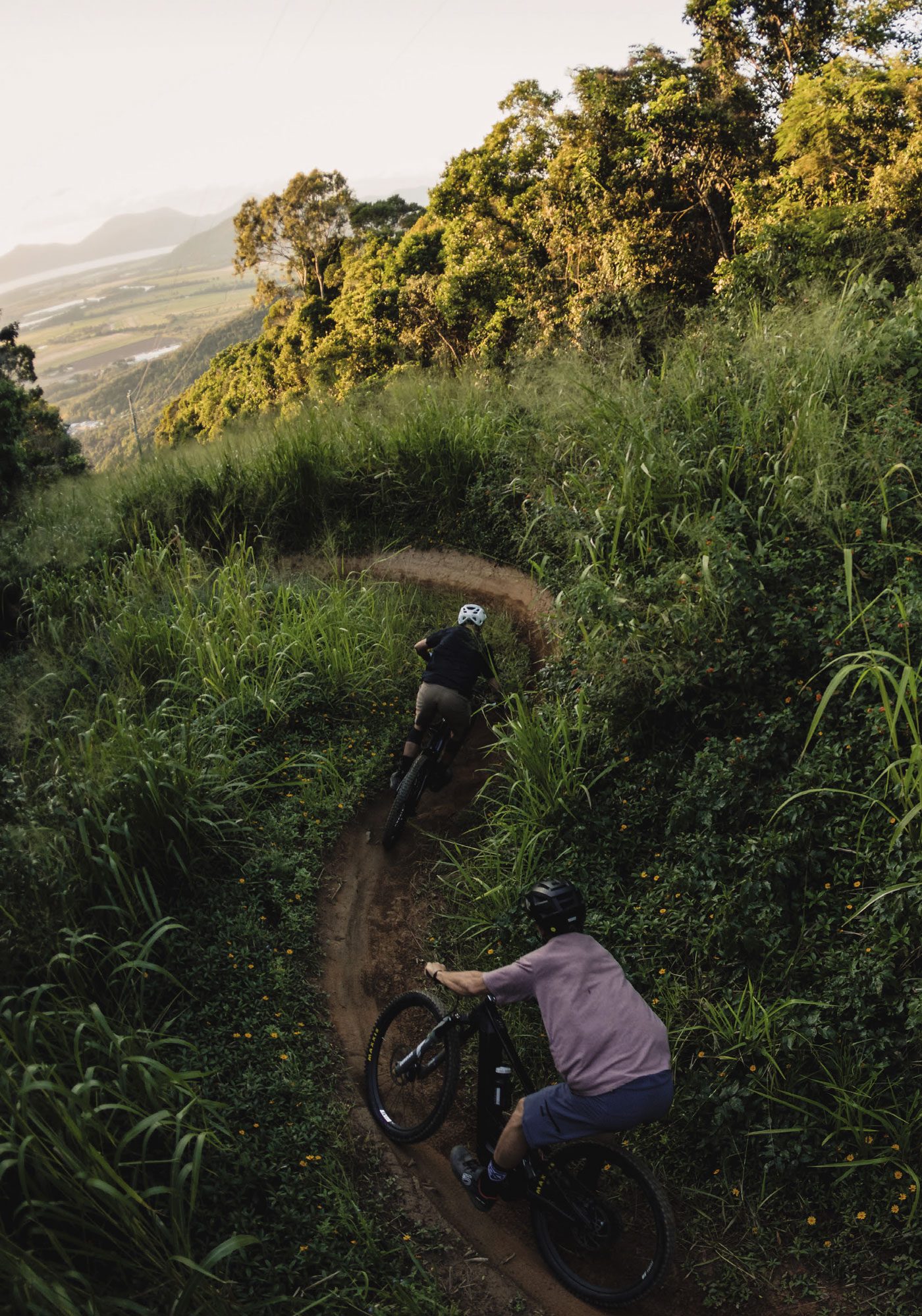
It’s also easy to use your time in Cairns to unwind. For every hill you climb, the descent nearly always drops you straight back at the beach so you can ride to coffee – or a beer. Although we were there for work, stealing moments in the early mornings – or in the very limited windows after events had finished for the day – and fitting it all in around Blenki’s schedule for competing and resting, it still felt like we were on holiday.
Finishing up our last ride of the trip with a caffeine fix at Palm Cove’s infamous NuNu’s I, set underneath the palm trees, I asked Blenki what he thought about experiencing Cairns by eBike.
“It was a good way to see a lot of trails a lot quicker than you could do on a normal bike, without all the pushing around or climbing, and spending a lot more time getting up and down,” he said. “I felt like we did a lot of stuff in only a few hours and that’s the good part about it, you can get so much more ground in less time.”
And when it comes to exploring tropical paradise, that’s exactly what you want, right?
With that said, it was time for us to farewell the Tropical North and catch a plane back to Aotearoa.
Until next time…
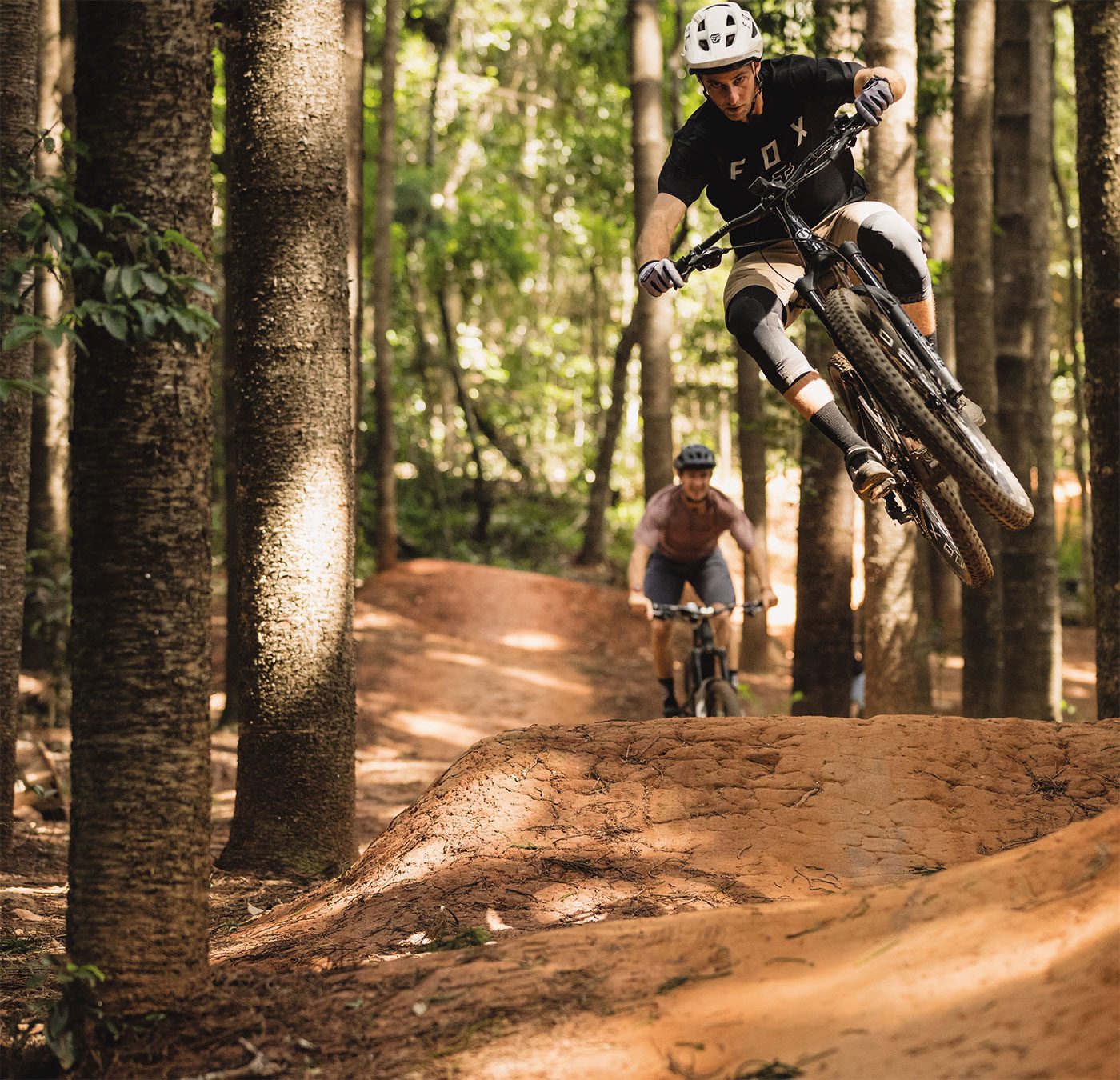

Keep on pushing: The Volcanic Epic 2023
Words: Lester Perry
Photography: Chris Chase
The Volcanic Epic is NZ’s newest and longest multi-day cross-country MTB event. After a storied journey to the start, the inaugural edition kicked off on 23 March 2023. Riders competed as individuals or two-person teams, across either two or four-day options.
Every rider came to the Volcanic Epic start line with their own story. For some, it was overcoming cancer or mental health struggles just to be there on the line, the event being the culmination of hard work and persistence, putting a cap on their recovery and proving they could overcome seemingly insurmountable challenges just to be there. For others, it was an opportunity to get away from ‘normal’ life and simply ‘Ride, Relax and Repeat’ (the tagline of the event), a twisted holiday of sorts.
It wasn’t just the competitors who’d climbed metaphorical mountains to be there – the event organisers, Nduro Events, headed by Tim and Belinda Farmer, had to tackle equally as large challenges just to make the event happen.
Winding the clock back to 2019, Tim was headed to the Port-to-Port stage race in Australia. Training in the bank, he was eager for the experience. Early in the first stage, a rider wiped out Tim’s front wheel, taking him down and in the process smashing up his shoulder. Whilst laid up in the hospital, a seed was planted.
“Why can’t we have more stage racing like this back home in the North Island?” Tim pondered. The Pioneer (at the time NZ’s only MTB stage race) was touted to be heading north from its home in the south, so Tim parked the idea of creating one himself.
Covid-19 took a scythe to events – literally overnight it completely shredded almost every event promoter’s plans. The owners of the Pioneer didn’t just postpone their event, but completely shelved it, opening the door for Tim and his crew to create their own stage race.
“There were people who wanted to do stage racing and couldn’t because Pioneer was gone,” explains Tim. “We wanted to fill that gap.”
The ‘Epic’ name came about whilst scouting for event venues. Every site visit culminated with the narrative, “this is going to be epic”. The phrase stuck and, when combined with the volcanic nature of the areas the stages would visit, the ‘Volcanic Epic’ name was coined.
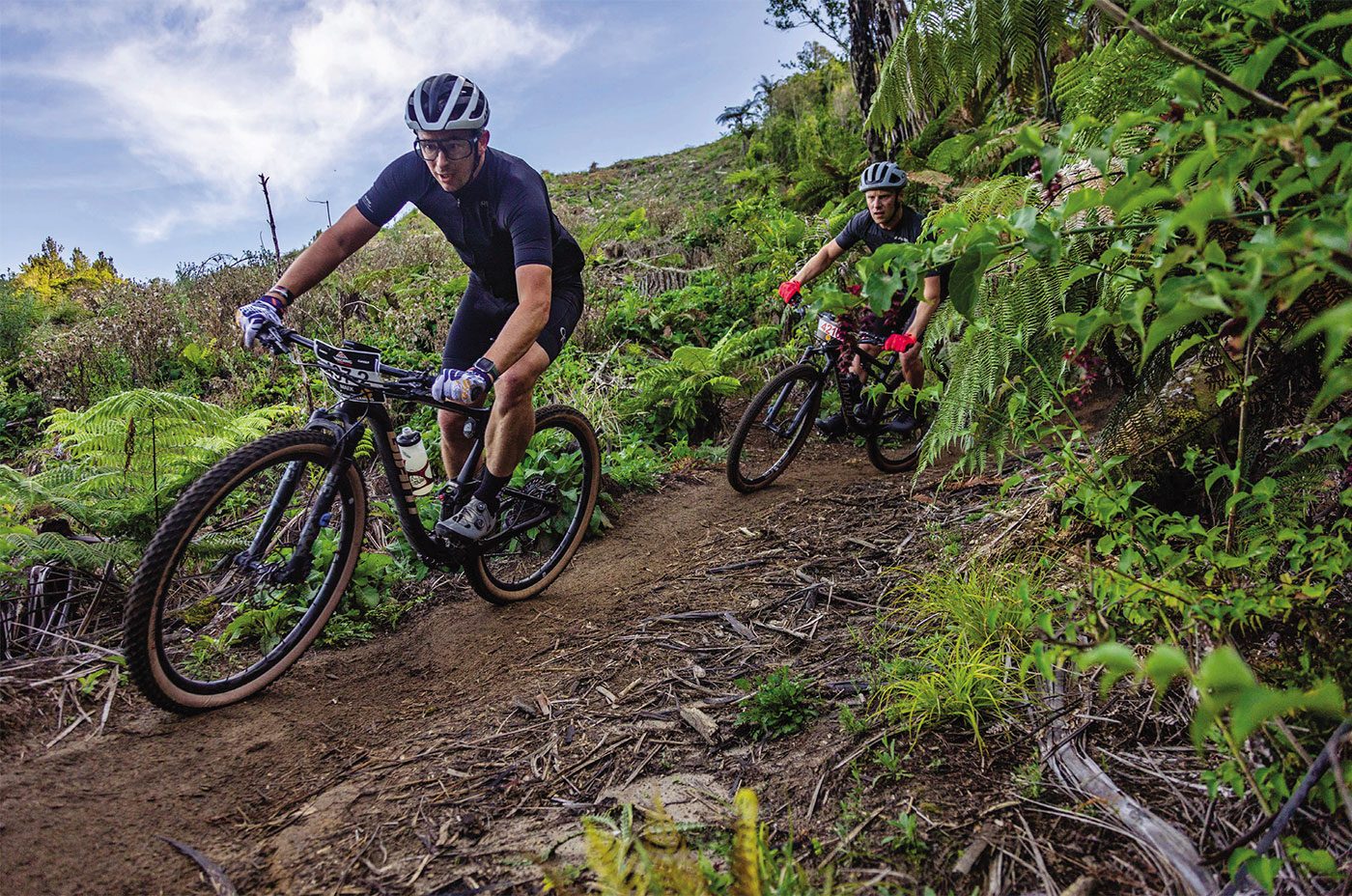
Covid’s grasp on the community loosened in late 2021, and events slowly returned to the calendar (albeit under hefty restrictions). Spirits were high heading towards a rescheduled late January 2022 date for Nduro’s premier sin- gle-day event, the Whaka 100. Unfortunately, numerous pandemic-related issues brought a last-minute cancellation, leaving the upcoming Volcanic Epic as the organisation’s final – and only – event for the summer. Again, Covid drew its sword. A fresh spike in COVID numbers, and a change in government regulations, meant they wouldn’t be able to deliver the event anywhere near the level they needed to, and the difficult decision was made to push the event out to the following year.
Reflecting on the postponement, Tim explains: “We were passengers in the whole process, but we were committed. When you enter, forty percent of your entry fees are instantly committed to an event, so there was no option to pull out.” Belinda adds, “We were still 100% committed to running the event after we got through the Covid period, to do it for the participants.”
With the commitment to go forward, new staff were hired, and a full crew was assembled. “There are six full-time staff in the team now, and we had 28 to deliver the event. We originally had 31, but we had people get Covid just before the event started, and family bereavements and emergencies and all sorts of stuff. Volcanic Epic had 28 paid staff on it, with six full-time in the end.”
The 2023 date was locked in and the entire Nduro Events team set to work preparing to finally deliver their first Volcanic Epic.
Everything was rolling towards the event as planned, and it looked like the major hurdles had been overcome and wrinkles ironed out. The weather gods didn’t want it to be that easy though, and a month out from Stage 1, Cyclone Gabrielle flexed its destructive muscle, felling a huge block of pines and closing the trails in the Craters MTB Park (Taupo), where Stage 3 was to take place. Yet another hurdle the team would have to overcome to deliver their event.
Fast forward a month and over 500 hardy souls lined up at Te Puia, in Rotorua, ready to kick off the first of four stages. It wasn’t just locals boarding the Volcanic Epic train though – post Covid, international riders were once again lining up for NZ events.
“They came from Seattle, Mexico, Canada. We had people from England, Scotland, New Caledonia, Australia. A guy from France. We’d almost forgotten about our international community since borders had been closed, but it’s fantastic to see their return,” says Tim.
The opening day was set in the hallowed lands of the Whakarewarewa trails, covering many fan favourites and setting the tone for the days to come. After a briefing and welcome, newly crowned National XC Champ, Matt Wilson, alongside a host of Australasia’s top endurance racers, accepted a Wero (Maori challenge) and it was game on. Riders headed out past the Pōhutu geyser to do battle on the trails.
“Especially in Rotorua, the cultural narrative should always be part of mountain biking. It’s not a public forest – we’re actually riding on private land that belongs to a collective of central North Island Iwi. It’s important we honour that.”
Although the event was in play, the logistical challenges continued to come. Arriving in Tokoroa after Rotorua’s opening stage, the event team dis- covered all the course markings for the following morning’s race had not only been tampered with, but the steel waratahs used to secure course arrows and marking tape had been stolen, effectively destroying their entire course. Once again, the Nduro team swung into action. Taking advice from local police, and with help from the Tokoroa MTB Club, a revised course was quickly put in place, ready for action the following morning.
“And so that’s one of the cool things with the event… we can expose a whole new group of riders to the hard work the trail organisations do. I think the benefit of this event, for Tokoroa, is we’re just going to get more bikes on their dirt, which will be better for their trails and the area in general.
“I think the biggest thing for the riders, and the biggest bit of feedback, is that Tokoroa is a revelation – they didn’t even know it existed!”
After Gabrielle had turned day three on its head, Tim’s team swung into action once again and, in a tight time frame, pivoted to a ‘Plan B’ option. The rejigged day would now see riders take on a section of Taupo’s Great Lake Trail, including two laps of the Otaketake, Orakau and K2K loop, beginning and ending in Kinloch, right on the stony shores of Lake Taupo. Post-ride swims, and ice creams from the dairy across the road, topped off a stunner of a day. Riders were pleasantly surprised that Nduro’s ‘Plan B’ ended up being an ‘A’ choice!
The fourth and final day saw riders return to the pumice-based soils of Rotorua. Rising steam and a crisp, clear morning greeted riders at the entrance to the Whakarewarewa Living Maori Village, where they assembled for their final departure. A local cultural group kicked things off, performing for the entire field as they left the start line.
“That was a farewell from their lands, and sort of a departure and cultural performance in one. That’s part of the whole experience. It’s really hard for them to go on for 40 minutes, so they did well to try and get most of the riders through a cultural experience as they embarked on their final stage.”
The Volcanic Epic uncovered new ground for many participants; be it simply getting to ride new areas, ticking off a bucket list item, or riding with a mate each day. Four days, four stages, and a lifetime of memories not only for the riders but the event team too.

The engine inside: Redefining the impact of bicycles
WORDS: DAISY MADDINSON
PHOTOGRAPHY: DAVE MACKISON
Narrated by the legendary voice of cycling, Phill Liggett, The Engine Inside is a captivating feature-length documentary that weaves together the extraordinary stories of six everyday people. Through their experiences, the film unveils the remarkable power of the bicycle to promote profound change in our lives and communities. One of the documentary’s writers, Daisy Maddinson, shares how the film hopes to spark a feel-good revolution on two wheels.
Beyond the traditional portrayal of cycling as a sport or recreational activity, we don’t often give the bicycle much thought. Some might use it to get from A to B or commute to the office, but have you ever seriously considered the deeper impact of swinging a leg over?
The Engine Inside goes deeper, exploring the often-overlooked potential of this 200-year-old machine. Through the stories of six everyday people using the bicycle as a tool, the documentary delves into the significance of cycling in helping solve various global issues, including physical and mental well-being, socioeconomic inequality and climate change.
As writers, we wanted to go beyond the surface of cycling and showcase the true essence of the bicycle and its transformative power. In the development stage, every story we uncovered touched us deeply. We met people who faced daunting personal and systemic challenges head-on—from generational trauma and economic barriers to women’s equity and motor vehicle collisions—who have all found hope in the simple act of riding a bike. Their determination to overcome adversity through cycling left us humbled and even more inspired to use storytelling to spread the “bike gospel”.
By sharing the journeys of these everyday people from all walks of life, the film challenges anyone who watches it to reevaluate their own perspective on the transformative power of the bicycle.
The world can feel big and ugly sometimes. With so many converging social and environmental problems, the weight of the world can be overwhelming. We think, how can we as individuals change anything? And what use is one small action when the problems are so large? After watching The Engine Inside, we wanted the audience to ask themselves: Can an act as ordinary as riding a bike truly unlock strength and resilience within us all?
The documentary urges us to see the bicycle as more than just a means of transportation or a way to enjoy the great outdoors. It shows us how riding can act as a catalyst for change. It shows us that small actions do make a difference.
Our hope is that The Engine Inside will prompt anyone who sees it to change their view of cycling and embrace the transformative power of the bicycle and the engine inside us all. We can build a better world, one pedal stroke at a time.
Film release coming late 2023.

Bike Review: Norco Fluid FS A1
WORDS: GAZ SULLIVAN
PHOTOGRAPHY: SAVANNA GUET
DISTRIBUTOR: ADVANCE TRADERS
RRP: $5,599
“The Norco Fluid FS A1 was something of a revelation.”
I was looking forward to getting on the bike. Some mates in Australia had almost convinced me to get a Norco a few years back and, while I didn’t follow their advice, I was curious to find out what they were on about – and what I was missing out on.
I spent a month and a half on it – riding every other day, trying to figure out what made it feel so good.
As a representative of today’s mid-price mountain bike, it is a great example. Whether you think a hair over five and a half grand is mid-priced depends on a lot of things, but in a world of five figure builds, some of which start with a two, it seems pretty economical.
The first thing that needs saying is how good the bike looks. Obviously subjective, but a sparkly green paint job with chrome stickers does it for me.
It’s a very nice piece of design and execution. Subtly formed tubes, seamless junctions, and that lustrous paint job look really great.
The rear end finish is industrial by contrast – no effort has been made to smooth out the welds. Again, personal opinion, but I like that.
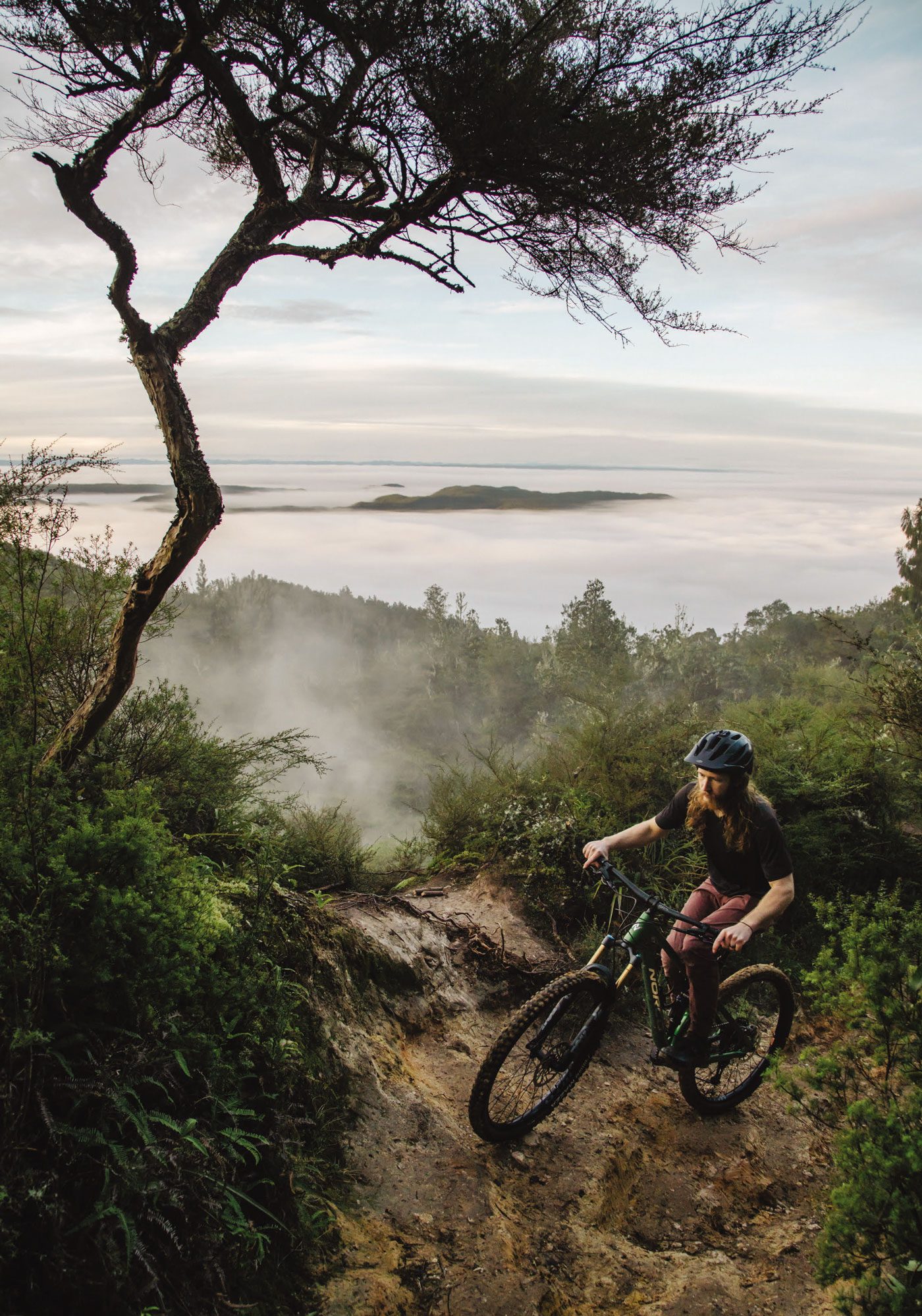
The Norco fitout has quality where it counts. Suspension is handled by Fox FLOAT components at both ends. The Factory 34 GRIP2 fork gives 140mm travel up front, and the X Performance Elite shock provides 130mm at the back end – pretty much the perfect setup for most trail riding.
The ultra-reliable Shimano XT drivetrain pairs up with a Praxis G2 crankset, with a 30 tooth chainring driving a 10-51 XT cassette. They even spec’d an XT chain.
The less critical parts are not from the big guys, or flashy boutique brands. As you might expect, they are from the more budget oriented end of things.
But that doesn’t mean they are not up to the job.
TRP supplied the brakes and the seat dropper. The brakes are Trail EVO, a four piston design hauling on a 203mm rotor up front and a 180 at the back. They worked really well while I was on the bike. The seat dropper was also well-behaved, and generous in both width at 34.9mm and travel, a handy 170mm on the Medium and Large size bikes.
While we are on that subject, the bike comes in five sizes, S to XXL, with a few tweaks along the size range. The S comes with 170mm cranks, the rest of the line-up have 175s. The seat dropper moves 150mm on the S, and 200mm on the XL and XXL.
The wheel set has Stan’s Flow S1 rims on boost hubs, and come fitted with Vittoria tyres.
So, that is the basic stuff you could find online out of the way. A bit more of a web- crawl would reveal some very positive information from the bike media – the machine is Pinkbike’s Value Bike of the Year, Vital MTB’s Bike of the Year, and Bicycling Magazine’s Best Value Trail Bike.
All good.
The stuff you can’t find online is what I thought of it.
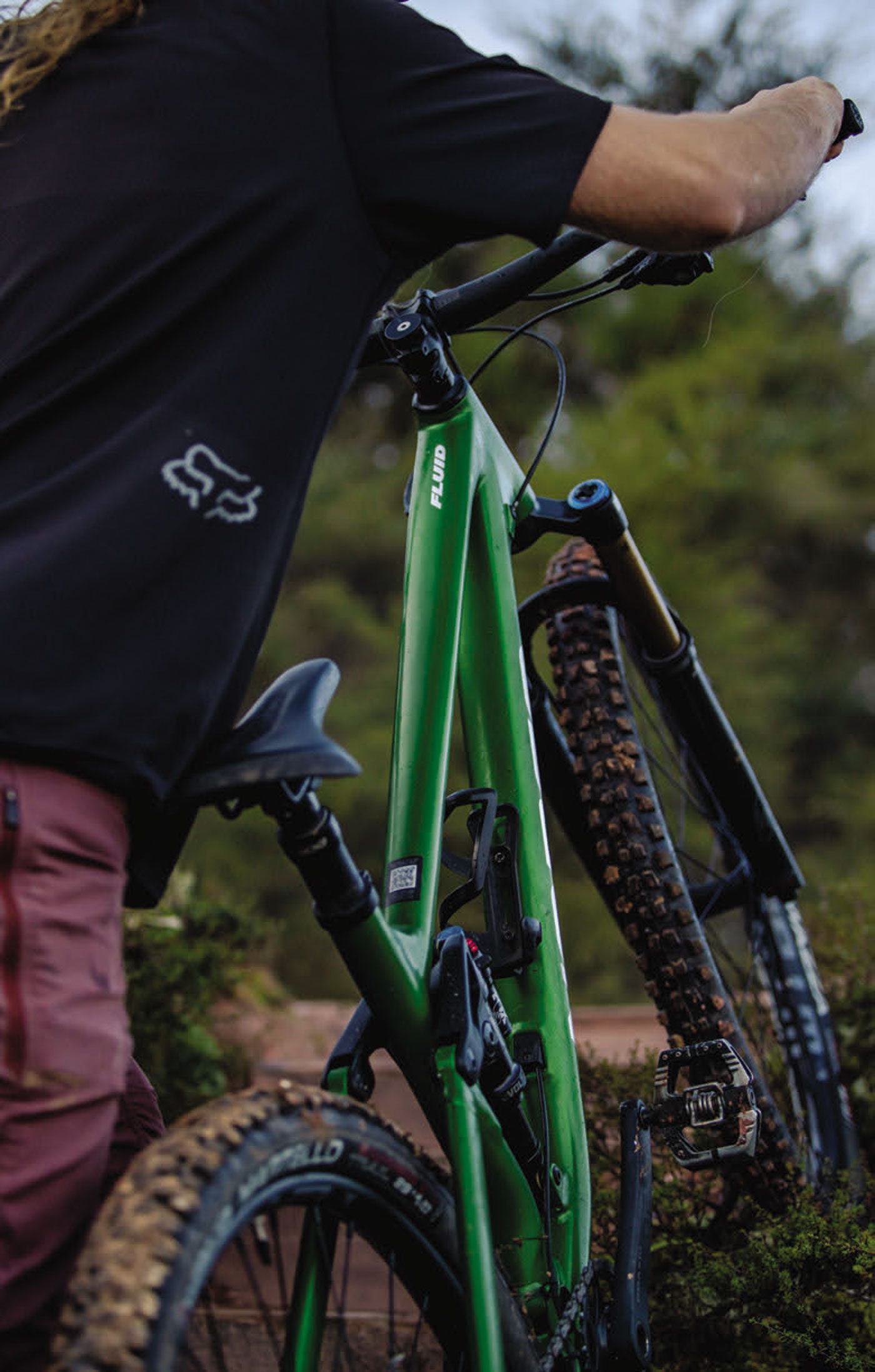
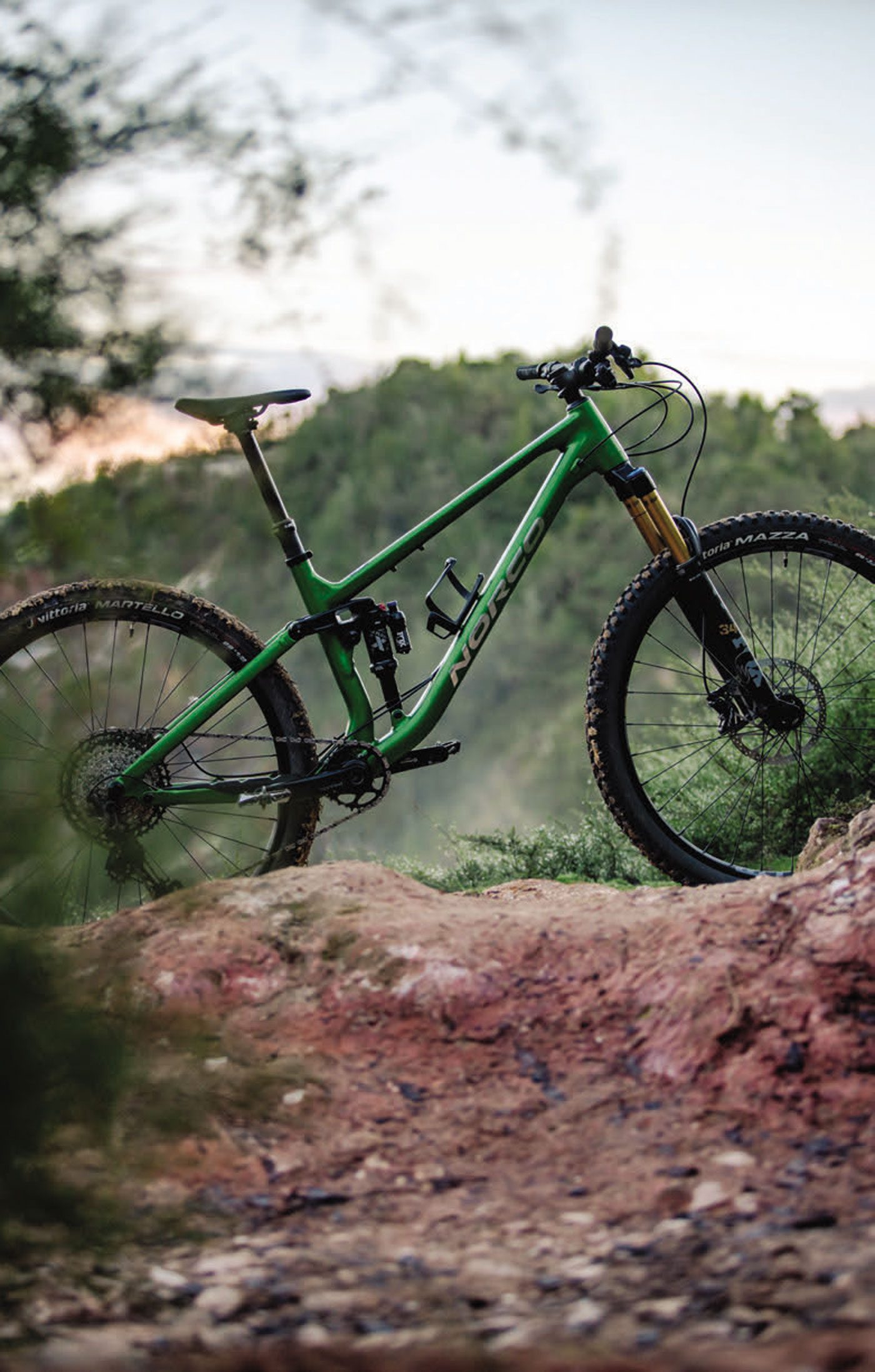
My first ride was out the door and onto a fairly long singletrack climb. The bike is not particularly light, mid 15s in kilograms. It feels light, though. The suspension design and shock combine to make a solid pedalling platform, and the bike goes uphill as well as any bike with the handicap of having me on top of it.
A steep 76.6 degree seat tube put me in the ideal position for climbing a trail that has a lot of little obstacles and tight turns.
Turning directly into a downhill trail at the top of the first climb was a snap decision – this particular trail is a favourite, because it is at the top end of what I consider to be within my comfort zone. Normally I would go somewhere else until I felt at home on a strange new bike, but the Norco felt very familiar from the first few pedal strokes.
As much as climbing on the bike felt better than the weight would have you expect, going downhill was better than the mid-travel suspension promised.
Going down the trail, the bike was surefooted, relaxed, and felt quietly capable. The rear suspension is a very solid feeling platform and the long 480mm reach, (in size large), combined with a fairly slack 65 degree head tube, made everything I came across on the trails I like easy to ride with confidence.
The tyres were new to me, although Vittoria and I go way back – like, almost fifty years – to a couple of pairs of track tubulars I liked in a previous life. I have been very happy with a couple of sets of road tyres from the bicycle-only tyre company, but I had never tried their mountain bike rubber before.
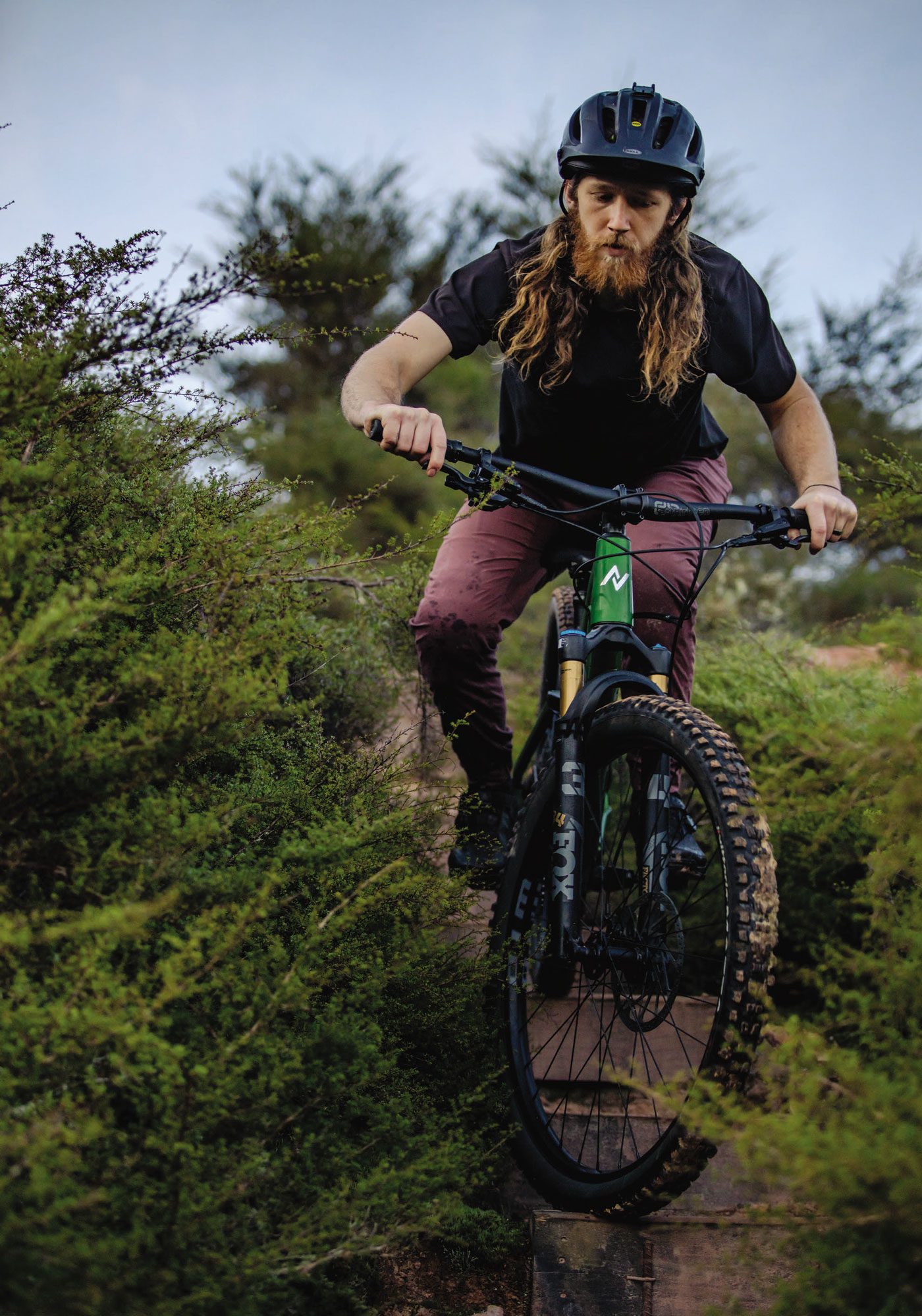
The bike came with a 2.4 Mazza on the front and a 2.35 Martello on the rear. I think part of the sprightly feeling the bike had on the climbs and rolling along cross country trails may be down to them. Like the bike, they are not particularly light, and they are not the fastest rolling tyres around, but they were reliable on the fairly wet trails we encountered during my time aboard the Fluid.
I found the more I rode it, the more I liked it.
The Fluid is a bike that straddles the divide between a cross-country style bike and a more enduro oriented rig. For an all-day ride with a bit of everything, it’s hard to imagine what it could do better.

Pirelli Scorpion Race DH & Enduro Tyres
WORDS: LESTER PERRY
DISTRIBUTOR: FE SPORTS
RRP: $149 (RACE DH), $159 (ENDURO)
“The first day of testing was about as testing for a rider as a tyre…”
‘Pick a tyre brand and be a dick about it.’ This phrase rings true in the MTB world – getting riders to try a new tyre brand is a tough ask. If what you’ve got works, why should you change it?
It’s fair to say the tried and true tyre brands have rested on their rubbery laurels over recent years, with no groundbreaking leaps forward in technology. Recently though, newer brands have entered the fray, and existing brands are innovating hard – in Pirelli’s case, they’re drawing on years of motorsport experience to shortcut the development process and take on the major players.
Pirelli has quietly toiled away for the last couple of years, developing their line of gravity focussed tyres, bringing over 150 years of motorsport prowess and synergising with MTB legend and development specialist – not to mention ex-World DH Champ – Fabian Barel alongside numerous test riders worldwide.
The perfect rubber compound is similar to Goldilocks’s porridge: when it’s not quite right, it’s not right at all. When conditions are prime, traction comes easy; it could roll well but then come unstuck on roots, rock or hardpack, feeling like you’re being “pinged” offline. Too soft and it will sap your speed and likely wear excessively quickly. What we’re after is the best of both worlds. When it comes to tyre carcass, we all want the lightest but most puncture-proof casing possible – again, the best of everything and an impossible task!
Once the Italians at Pirelli’s HQ in Milan finally woke from their afternoon ‘riposo’ (rest) we were shipped out two sets of their newly released ‘Scorpion’ gravity treads; a pair each of the new Enduro M in 29”, DH in 27.5”, and 29” to set up mullet.
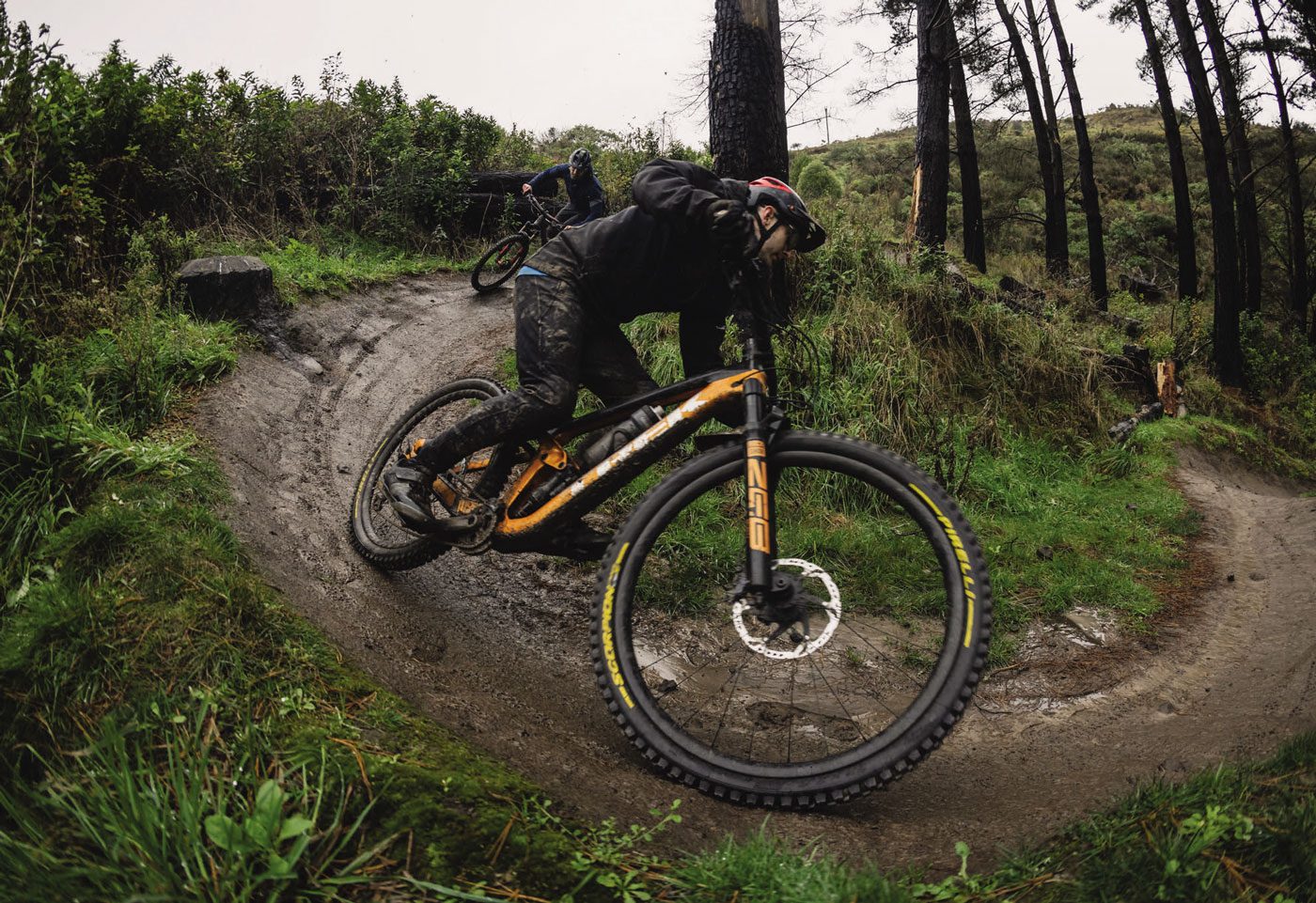
Scorpion Race DH
Front: M (Mixed) Dual Wall+, Evo 42a dual compound, 29×2.5”
Rear: T (Traction) Dual Wall+, Evo 42a dual compound 27.5×2.5”
The Scorpion Race DH tyres feature a full 62tpi DualWall+ casing and a rubber insert at the bead to help prevent pinch flats. Designed with a heavy-hitting, all-out gravity focus, these tyres leave no question as to their intended use, with large knobs and huge, loud logos screaming, “Go fast and hit stuff”!
The best constructed tyre can be let down by the rubber attached to it, and it’s no secret most tyre brands fail at this when they enter the gravity market. Fortunately, it’s not Pirelli’s first rubber rodeo and they’ve nailed their compound. The Evo Dual Compound is soft and sticky, with a slow – but not sluggish – rebound characteristic. That sounds very subjective but it’s abundantly obvious when a brand gets the compound just right, and plenty have got it wrong.
Mounting these up on my enduro bike was a pleasant surprise. Comfortably edging them onto the rims by hand, then snapping them into place with a regular track pump – no tyre levers, sweaty brow or sprained thumbs required.
Rolling down the driveway, a few hops up and down the curb then some aggressive turns on the grassy verge gave a few instant impressions. They roll well for an out-and-out downhill race tyre, with no feeling like they’re sapping rolling speed and, while they’re noticeably heavier than the trail tyres I had been running, the weight is in line with their intended use and their competition. The first day of testing was about as testing for a rider as a tyre – a wet, but fortunately not too cold, day in Christchurch’s Port Hills. With slippery chutes and wet rocks aplenty, this was the perfect zone to get a feel for the treads in some challenging conditions. After all, what good is a tyre reviewed in prime conditions?
The first stop was the Christchurch Adventure Park and some sections of ‘The GC’ DH track. A few turns in the trail hooked right and straight across a slick off- camber; as I glided across the face I thought, “OK, these hook up well”. In control and comfortably upright, not something I’d expect to come so easily in these conditions.
You can’t tell a great deal how a tyre will perform by simply looking at the tread pattern, but you can make some assumptions about it will likely ride. The Scorpion ‘M’ tread has aggressive ramping on the lead edge of the centre knobs, helping it roll well and maintain speed. There’s a line of transition knobs to fill the void when tipping over to the side knobs from the centre, helping keep the feel consistent. Siping (small cuts in the knobs) are added to help the knobs conform to firm surfaces, adding extra edges for just that little more grip, as well as helping the designers somewhat tune the feel of a tyre. The M tread is reasonably open and clears mud well even at pretty low speeds, and the side knobs offer plenty of support and a consistent drift once they do break loose.
On the rear, the ‘T’ tread speaks of its motocross heritage. The main feature of the tread is a wide central knob – it’s super effective under brakes, and without the ramps of the ‘M’ tread it offers exceptional power transfer but higher rolling resistance – it’s a downhill focussed tyre after all, so not really a big deal. The central knob is designed to have the centre portion cut out of it to optimise for softer conditions or use as a front tyre. For the uninitiated, tread cutting is a common sight on the World Cup Downhill circuit. The side knobs are nearly identical to those on the ‘M’ series and have a similar consistent feel.
After a couple of days aboard the Scorpion DH tyres, sampling Christchurch’s Port Hills in winter conditions, I’d happily recommend them to those seeking a full-blown DH race or park option, those looking for a heavy-duty Enduro setup riding rocky courses, or aggressive ‘Clydesdales’ aboard e-bikes looking for extra grip and puncture protection.
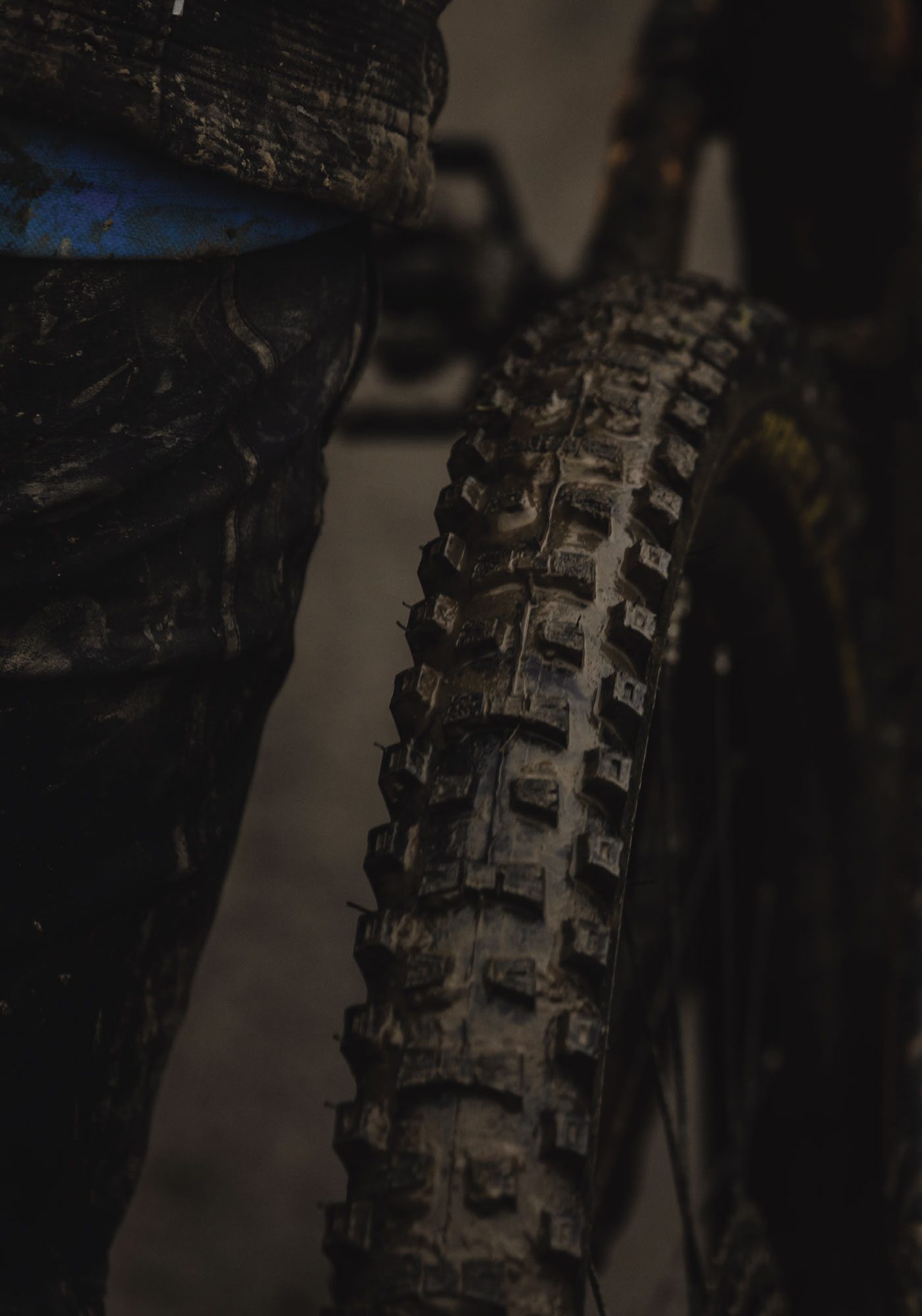
Scorpion Race Enduro
Front: M (Mixed) Dual Wall, Evo 42a dual compound, 29×2.5”
Rear: M (Mixed) Dual Wall+, Evo 42a dual compound, 29×2.5”
Back on home turf in the Waikato, I unpacked my bike after the Christchurch stint and mounted up the Enduro cased tyres. Just like the DH tyres, these were a cinch to mount up.
Front and rear I had the ‘M’ tread. The same tread and compound as the DH front tyre I’d ridden the week prior, but a more supple ‘Dual Wall’ 120tpi casing and rubber insert like the DH tyres. According to Pirelli’s documentation, these tyres knock around 190g off the DH versions in 29”, so certainly a big difference in weight.
Testing these in the middle of a Waikato winter it’s a sure thing there will be lots of moisture around and with our local trails a mix of hardpack clay, slippery roots and moist leaf rot, there’s plenty of variety to make an assessment – we’re just missing sections of chunky rock. Riding around this area can be sketchy at best of times, in the winter, so any shortcomings in either bike setup or skills will quickly be highlighted.
The lighter weight of the Enduro tyres was welcomed after running the heavier DH versions. The Enduro ‘DualWall’ casing gives more trail feel, and the lighter weight was certainly noticeable when hopping over trail features or accelerating out of slow corners. These things offer confidence in spades, particularly when the going gets fast and rough – after all, that’s precisely what they’re designed for. They allow you to more confidently head for the ideal line, not just the one dictated to you by the conditions or your tyres.
Descending on these is a blast. Charging on familiar trails and headlong into some sketchy root sections, I was thankful for how well the tyres held their line; the soft compound offering confidence on the roots where my normal tyres would let go. Cornering feels very natural, with no discernible gap from being ‘upright’ to leaning in, something I’ve struck on tyres in the past. There’s a positive, almost locked-in feel about them, thanks to the strategically placed, large sticky knobs.
All traction comes to an end at some point, and the Scorpions give a consistent drift rather than a “you’ve just hit ice” sort of surprise once they do let go. I noticed this several times when the tread would let go in a controlled manner and then hook up again, no big sketchy surprises here.
Braking was awesome, largely down to the large knobs, but equally down to the rubber compound and carcass, all damping trail chatter and allowing the tyre to bite and conform without breaking traction.
Climbing was where I found the only chink in the Scorpion ‘M’ armour. With the central knobs so heavily ramped on the leading edge, there’s no square sharp edge to bite in when climbing. ‘Slippery when wet’ surfaces require being conscious of where and when you’re putting the power down to prevent wheel spin. It’s not a big deal on a tyre of this genre, as they’re designed for all-out enduro speed, not taking uphill KOM’s. This trait may be more noticeable on an eBike so opting for the ‘T’ tread could be ideal.
All the acronyms and hyperbole mean nothing if you’re bouncing off roots and can’t hold a line confidently. The combination of tread pattern, rubber compound and casing on these inspire speed and confidence. If you’re an enduro racer or eMTB rider looking for a hard-hitting, but not overly heavy or sluggish set of tyres to use all year round, these should be on your ‘must-buy’ list.
Are the Pirelli Scorpion gravity series a game-changer? It’s hard to say they’re head and shoulders above the established competition, but they’re easily on par or fractionally better and certainly a very worthy opponent. If you’re looking to change things up and try something fresh, these tyres would be a great place to start. You might well find an advantage over what you’ve been used to – I certainly have.

Trek Evoke Clothing
WORDS: LESTER PERRY
DISTRIBUTOR: TREK NZ
RRP: $239 (SHORTS), $79 (TECH TEE)
“I reach for the same few pieces of kit each time I’m headed out to the trails; the cream rises to the top…”
Even though I have a fair mountain of riding kit in my cupboard, I’m beginning to realise how little of it I actually regularly use. I reach for the same few pieces each time I’m headed out to the trails. The cream rises to the top and, provided I’ve done my laundry, then it’s unlikely I’ll delve too deep into the pile to use anything other than my unintended favourites. Recently, a new set of kit has made its way into my rotation, though: the Trek Evoke tech tee and the Trek Evoke shorts have become some of my regulars for trail riding.
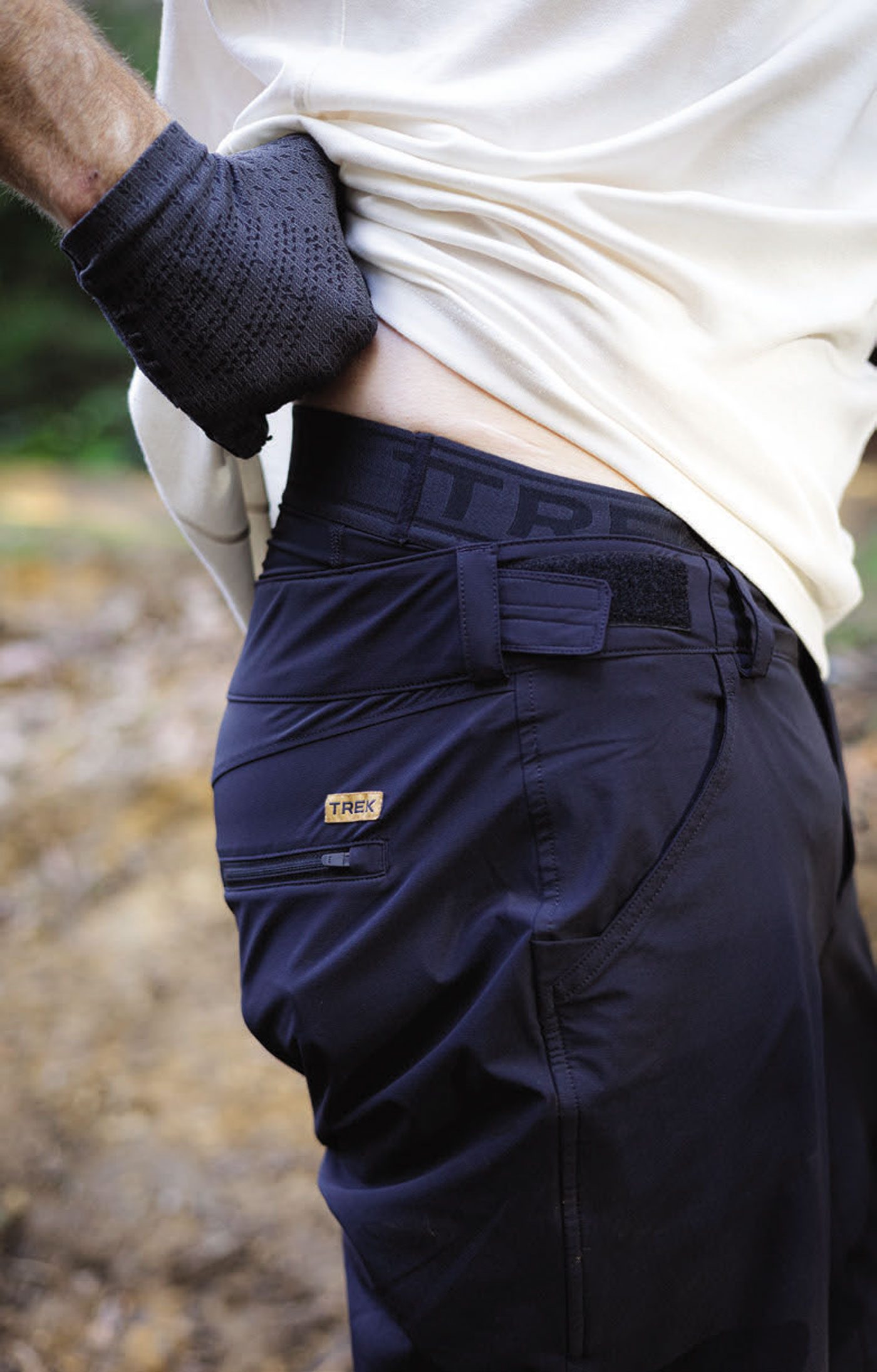
TREK EVOKE SHORTS
Trek has stepped up its game and featured a lightweight two-way stretch material on the outer short, that’s not only made up of 65% recycled materials but tested for harmful substances through the STANDARD 100 by OEKO-TEX® test as well. It’s soft to handle and plush against the skin.
There are two main hip pockets up front and a zippered one on the back – ideal for car keys or small Allen keys, but nothing much more considerable. Up front, a domed closure is paired with a zipper to keep things tidy. I’m a pretty strict 32” waist so went for a Medium. I reckon they’re slightly on the larger side but, with a small adjustment of the Velcro adjusters on each side of the waist, they’re spot on. The fit is listed as ‘semi-fitted’, which seems pretty accurate as they’re reasonably roomy through the leg without being baggy.
The leg length is what will probably be the kicker as to whether you like these shorts or not. I’m slightly below average when it comes to leg length for my 176cm height, and the Evoke’s sit a little above my knees with their 11-inch inseam. In the grand scheme of MTB shorts, this is on the shorter side of things; most shorts sitting in excess of 12 inches. I reckon this length hits the nail on the head for their intended use as a trail short though, ideally sans-knee pads. The overall silhouette is equally at home on a trail ride as at the gym or local swimming spot – they’d even be sweet for a drop-bar gravel ride. With subtle branding – just a small woven label above the rear pocket – they don’t scream “I’m a mountain biker!” at all… which makes a nice change.
Wearing liner undershorts has become normal for many riders these days, and we’re seeing fewer and fewer people hiding bib shorts beneath their baggies. There are a heap of liners on the market these days but, from what I’ve experienced, most fall short and are merely ticking a box rather than offering the ideal solution. The fits are off, chamois are bad and the overall experience leaves me wishing I’d just purchased a good pair of bibs instead – then hidden them under baggies, of course!
Trek has knocked it out of the park with this pair of liners though – I’m impressed. Let’s start at the top and work our way down: the waistband is a wide, soft number – think, a comfy boxer-short style – and there’s no narrow elastic cutting into your stomach as you’re doubled over, chewing your stem whilst grunting up a steep climb. A couple of different recycled nylon and spandex blends on the main panels help the shorts form nicely to your body, with no discernible bunching or rubbing. The legs feature a similar band to the waist, but with rubber grippers on the rear – finally, a liner the legs won’t creep up on – and they’re awesome for holding up knee pads too. The liner can be used snapped into place, attached to the shorts, or worn completely independently – i.e. under another pair of shorts. Not by themselves… although we’re not ones to judge.
All the good features of a liner are easily let down by an inferior chamois but, after lots of saddle time, my undercarriage is happy to report that the chamois lives up to the rest of the short. No dramas here.
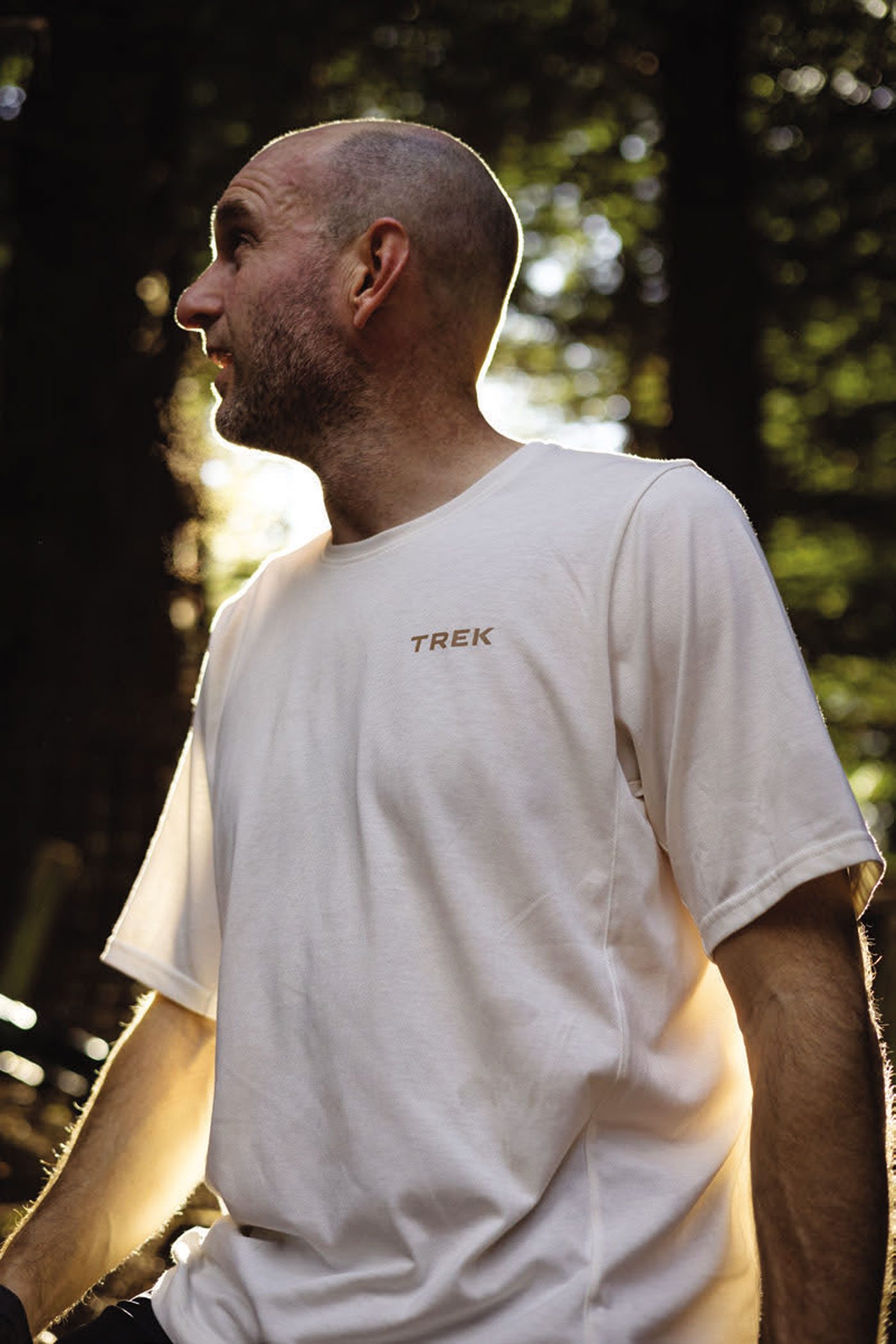
TREK EVOKE TECH TEE:
The Evoke Tech Tee’s main body fabric contains 85% recycled polyester blended with cotton, and passes the same OEKO-TEX® tests the shorts do, so no nasties are hiding in the fabrics.
Wearing a size large (normal for me) the semi-fitted cut is plenty comfy and leaves room for movement. I’m impressed that Trek used some panelling down the sides to help shape the form, not just a standard tee-styled cut. The rear has a slightly dropped tail to help avoid a public builders crack.
The fabric feels reasonably lightweight but not to the point I’d be concerned about tearing it any more than other riding shirts. It breathes well and doesn’t hold on to sweat but helps it evaporate off. Although I’ve been riding this off-white colour over the early winter, the mud seems to clean out of it much easier than some shirts I’ve used.
As with the shorts, this top doesn’t stand out from a casually-dressed crowd and, again, subtle branding helps you stay low-key; just a small chest logo hit proves that you are in fact a cyclist.
WRAP-UP
Like most of the Trek kit (or, previously, Bontrager) I’ve used over the years, the quality of both the shorts and the shirt appears to be top-notch. So far, it seems these garments will stand the test of both time and trails. If you’re searching for some versatile trail-riding garb with subtle style, and don’t want a baggier style ‘all-mountain’ look then the Evoke shorts and tech tee will likely be right up your alley.



